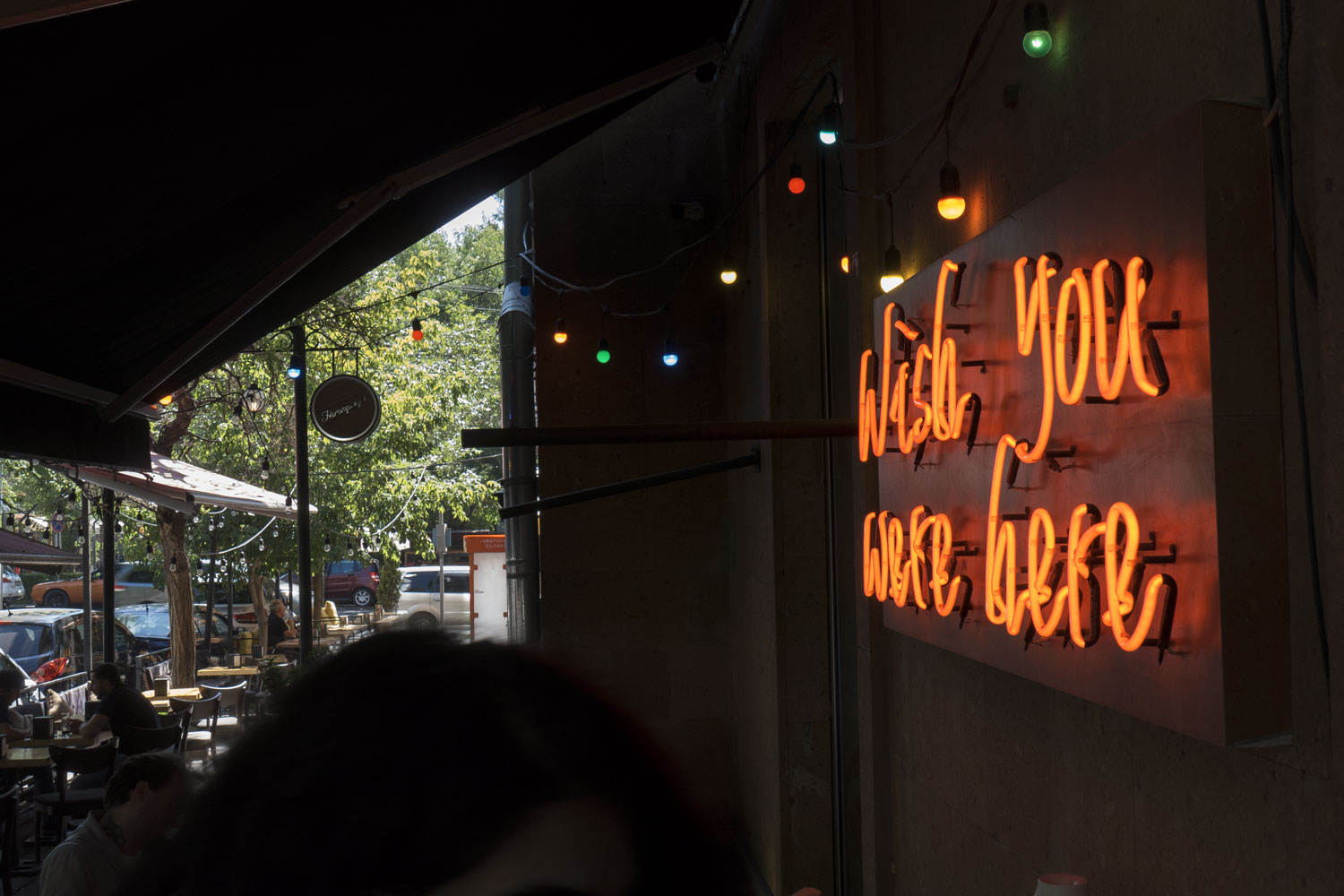Yerevan
Yerevan is the capital of Armenia.
By Russian standards, the city is small, with only one million people living in it. It’s possible to walk around Yerevan in a day. If you start in the morning and walk until evening, you can even visit all the major museums in a day.
Overall, Yerevan is quite similar to a southern Russian city like Volgograd. The similarity is given by the architecture. Most of the notable buildings in downtown Yerevan are built in the spirit of the Stalinist era with a hint of Armenian influence.
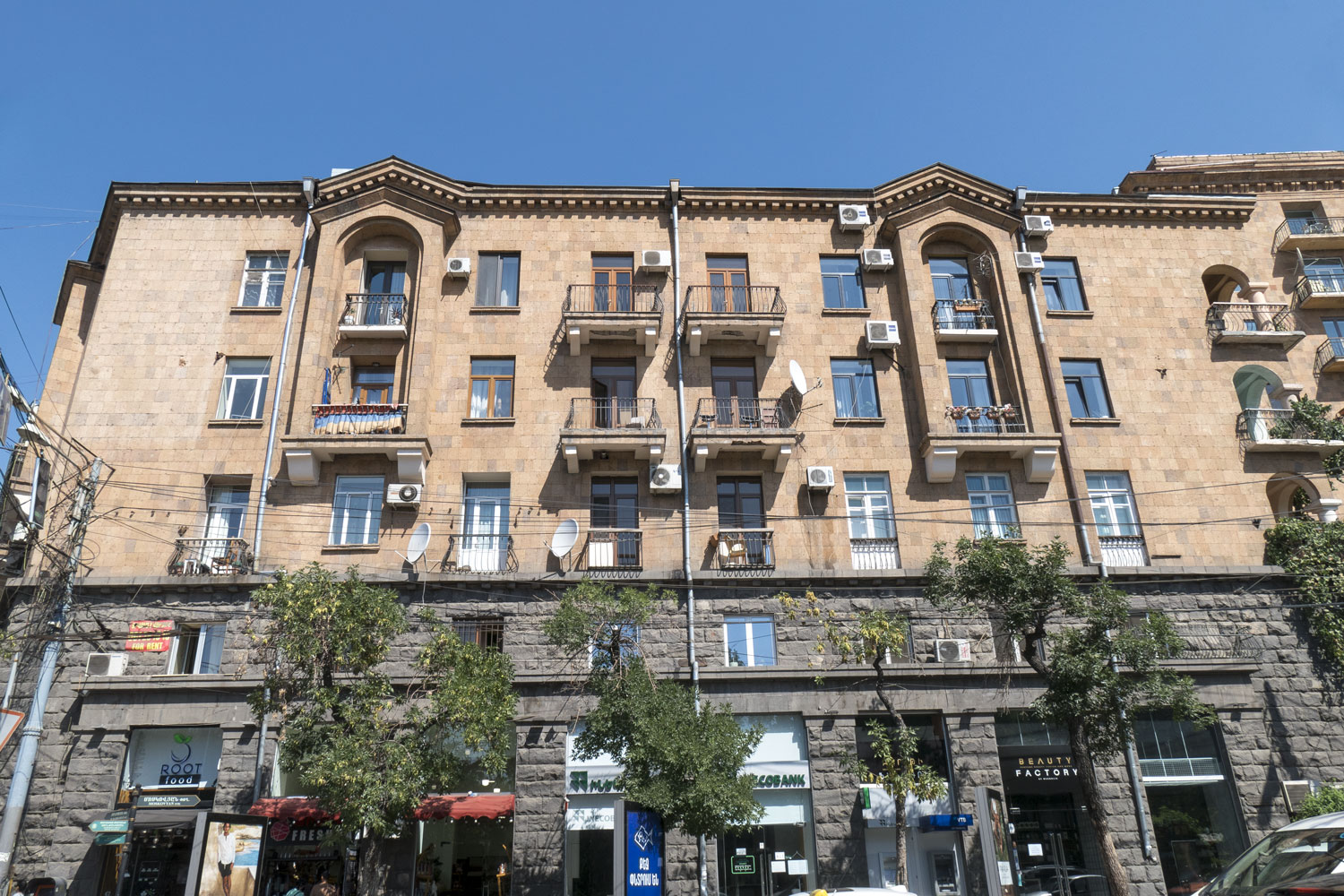
The construction of Yerevan is mainly spontaneous, without any coherence. There are no beautiful views of the city from above.
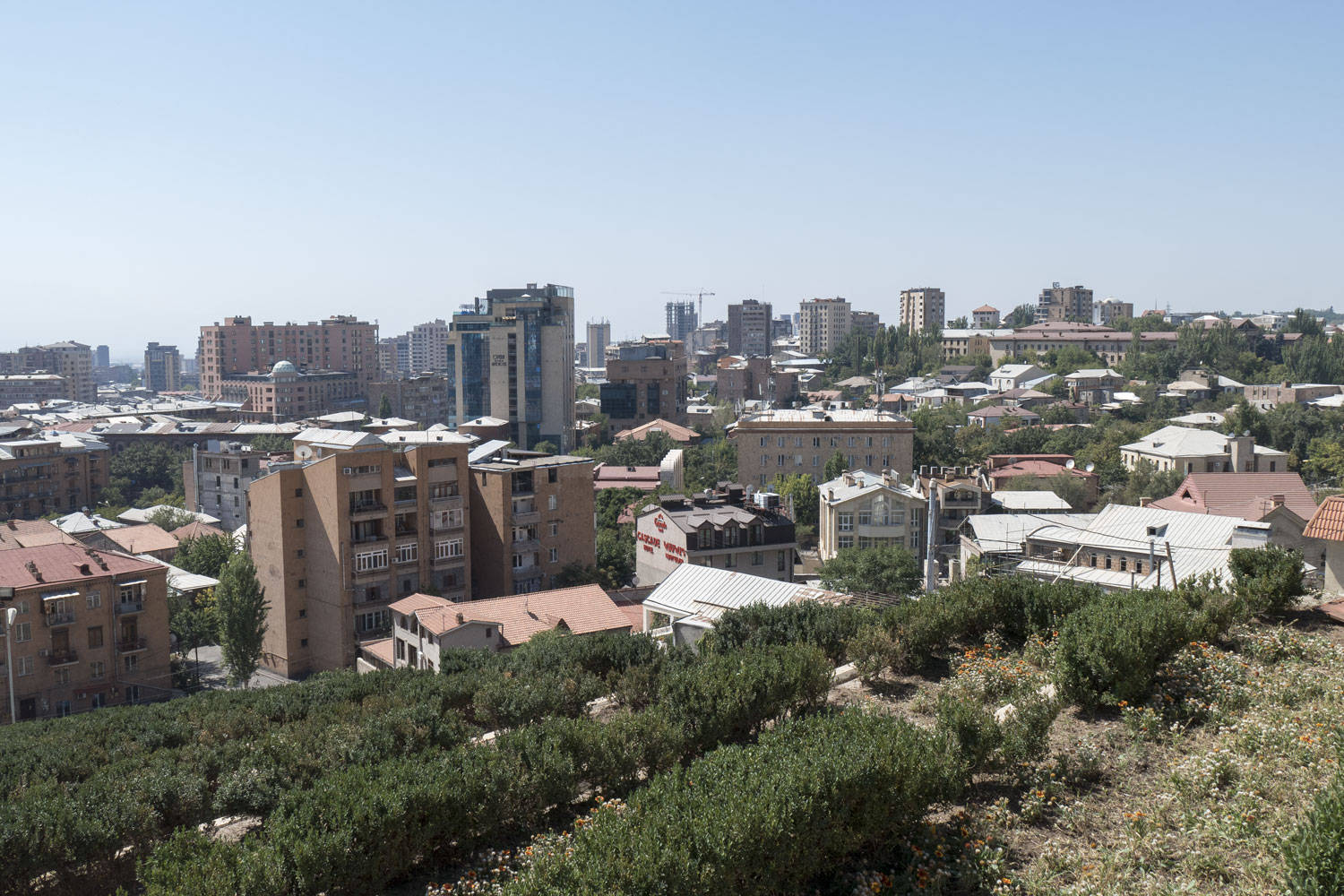
It’s only good at the bottom, on the streets. Several tourist streets are filled with café tents and expensive cars. Even decent paving stones can be found. If you find the right angle, Yerevan can even be mistaken for Barcelona.
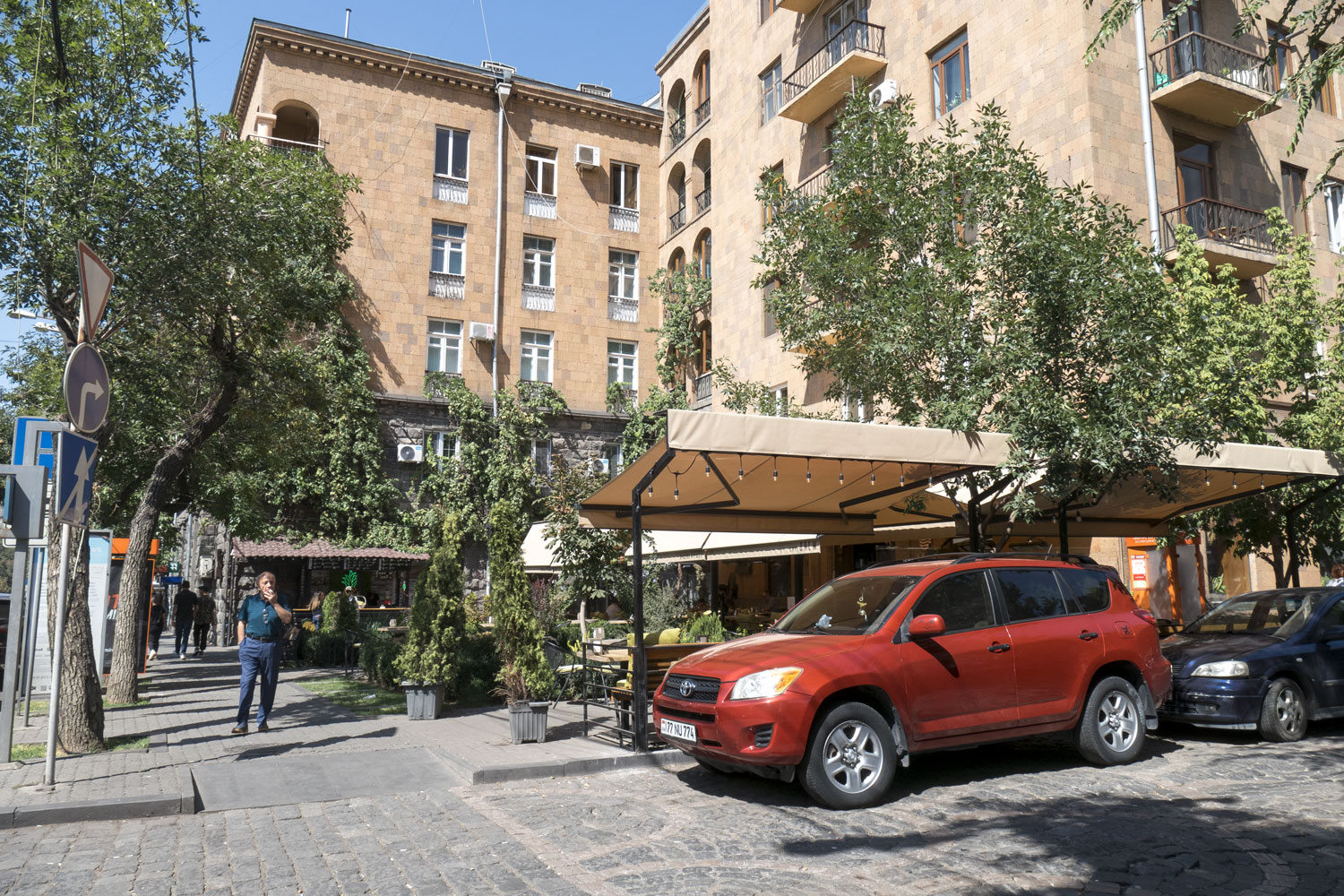
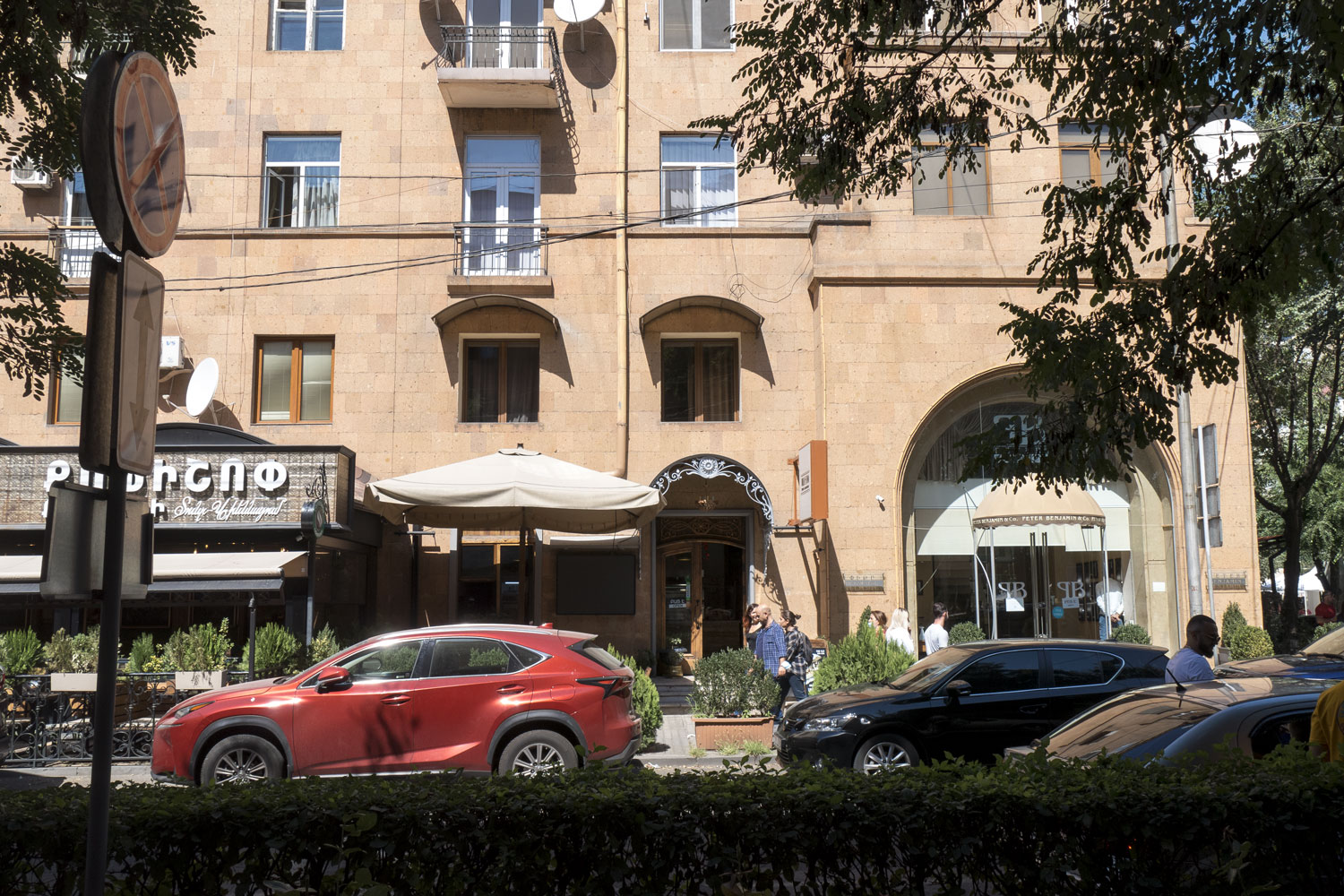
But once you enter the courtyards, you find yourself in Albania. As always.
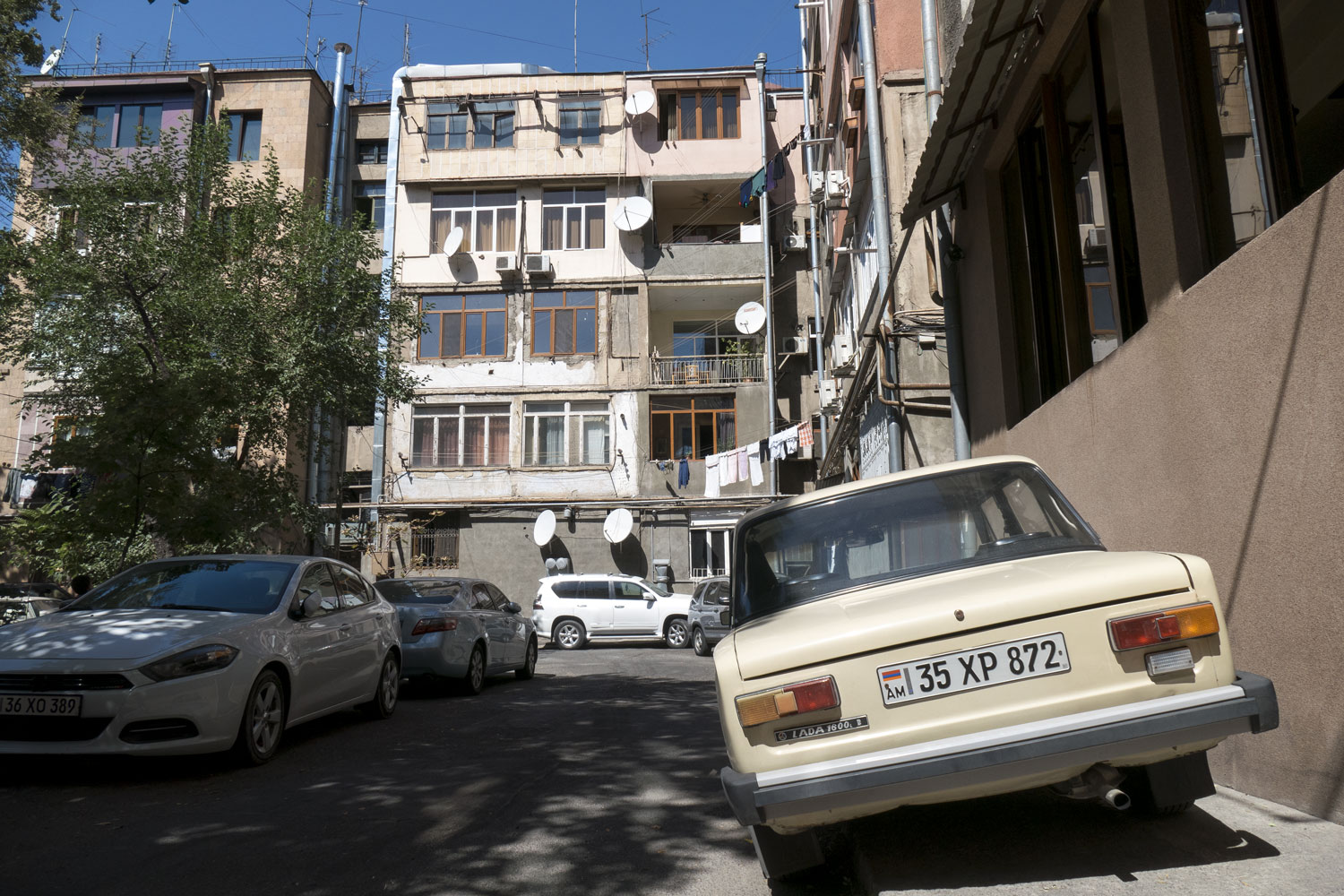
Architectural objects in Yerevan are symmetrical and dull. For example, this is the opera theater:
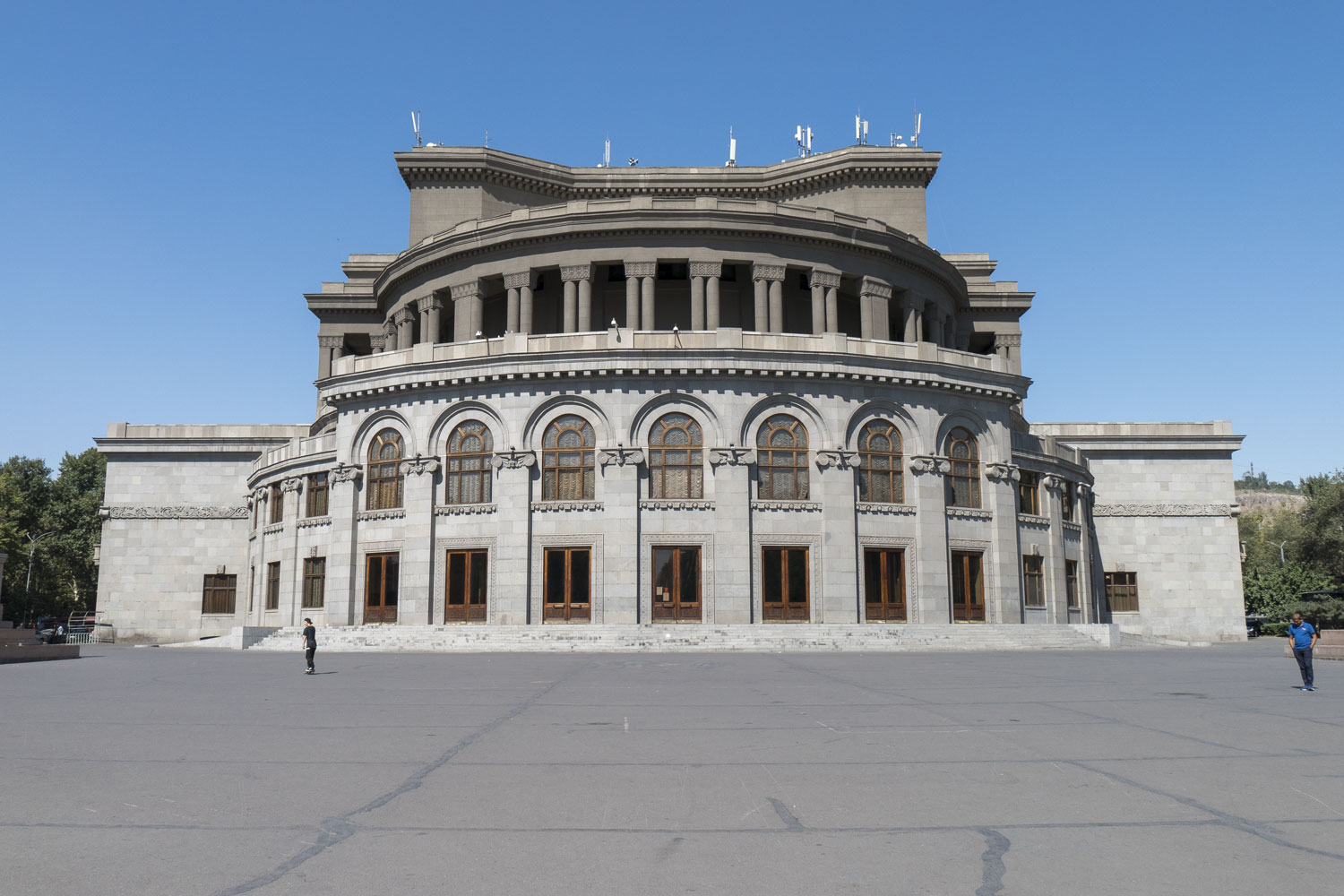
And this is the parliament of Armenia:
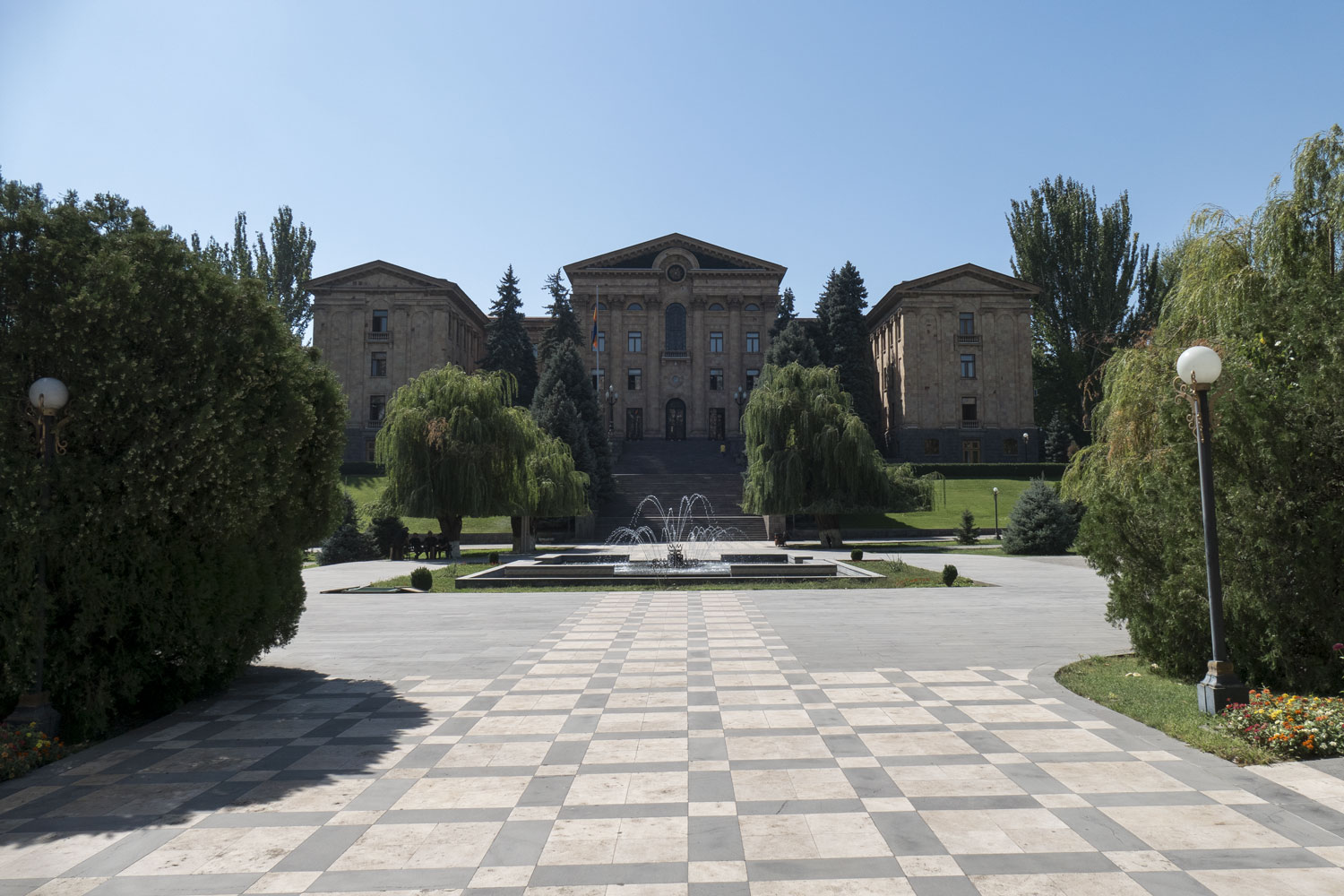
Moscow Cinema:
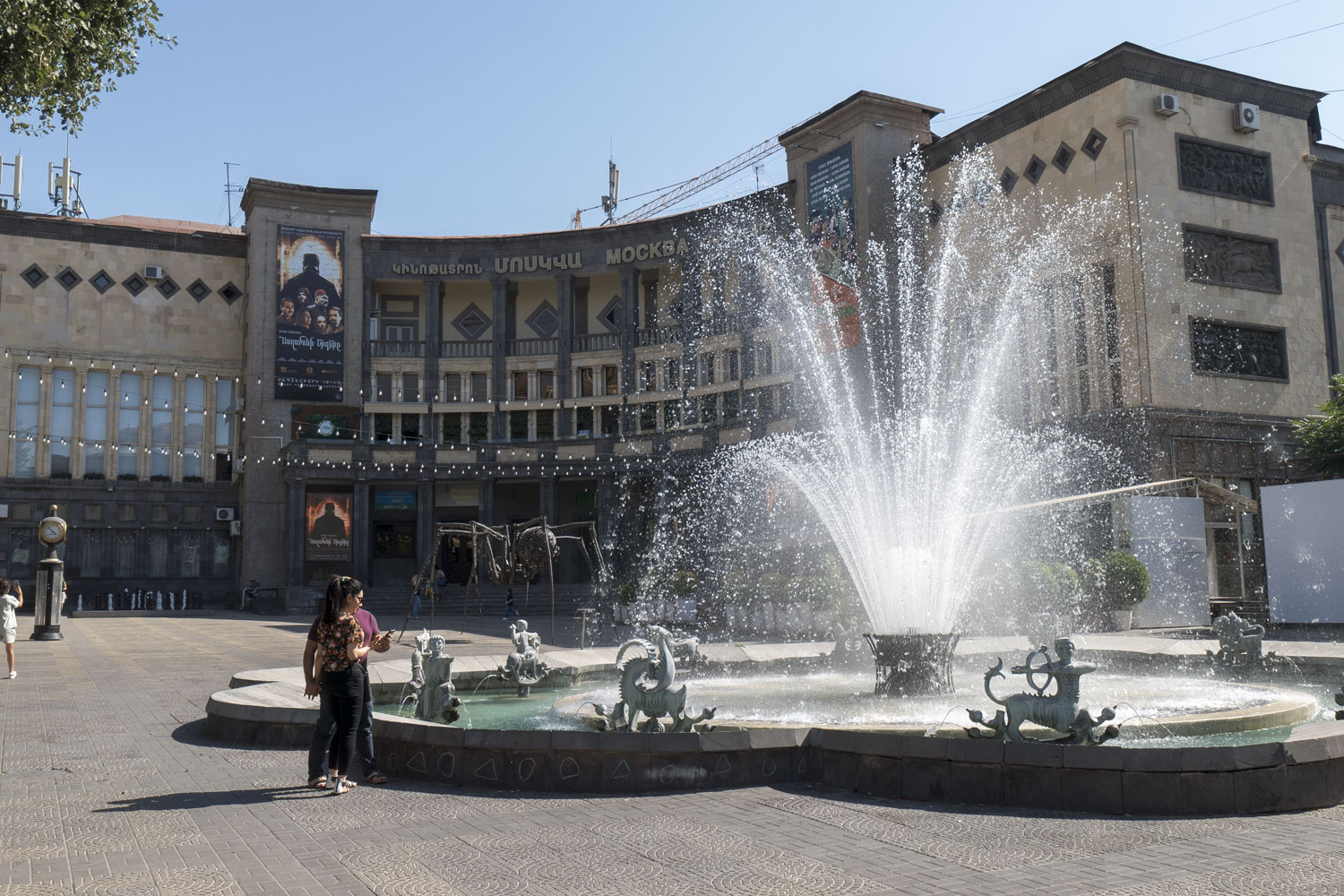
National Museum of History:
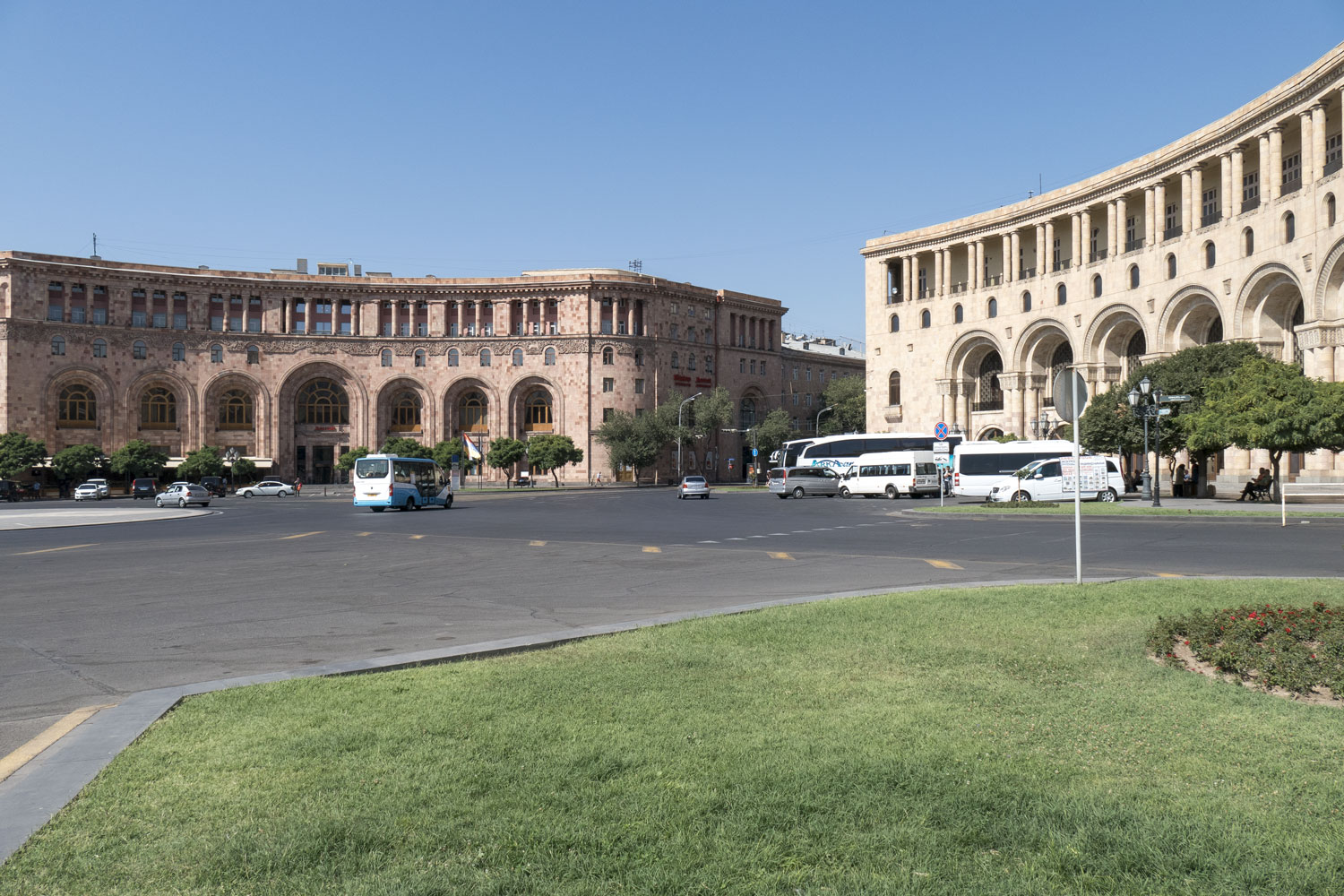
One of the central squares of Yerevan is the Republic Square.
It’s a completely uninteresting place. The entire square is taken up by a circular road, around which cars are parked and everything is covered in asphalt. The semicircular square is surrounded by historic buildings, one of which is the Ministry of Foreign Affairs of Armenia, and the other is the Marriott Hotel. The design is reminiscent of Victory Square in Minsk.
Yerevan sometimes reminds one of Moscow, for example, with the letters “Coca-Cola” on one of the buildings. Similar ones were hanging in Moscow on Pushkinskaya Street, only there it was “Pepsi”.
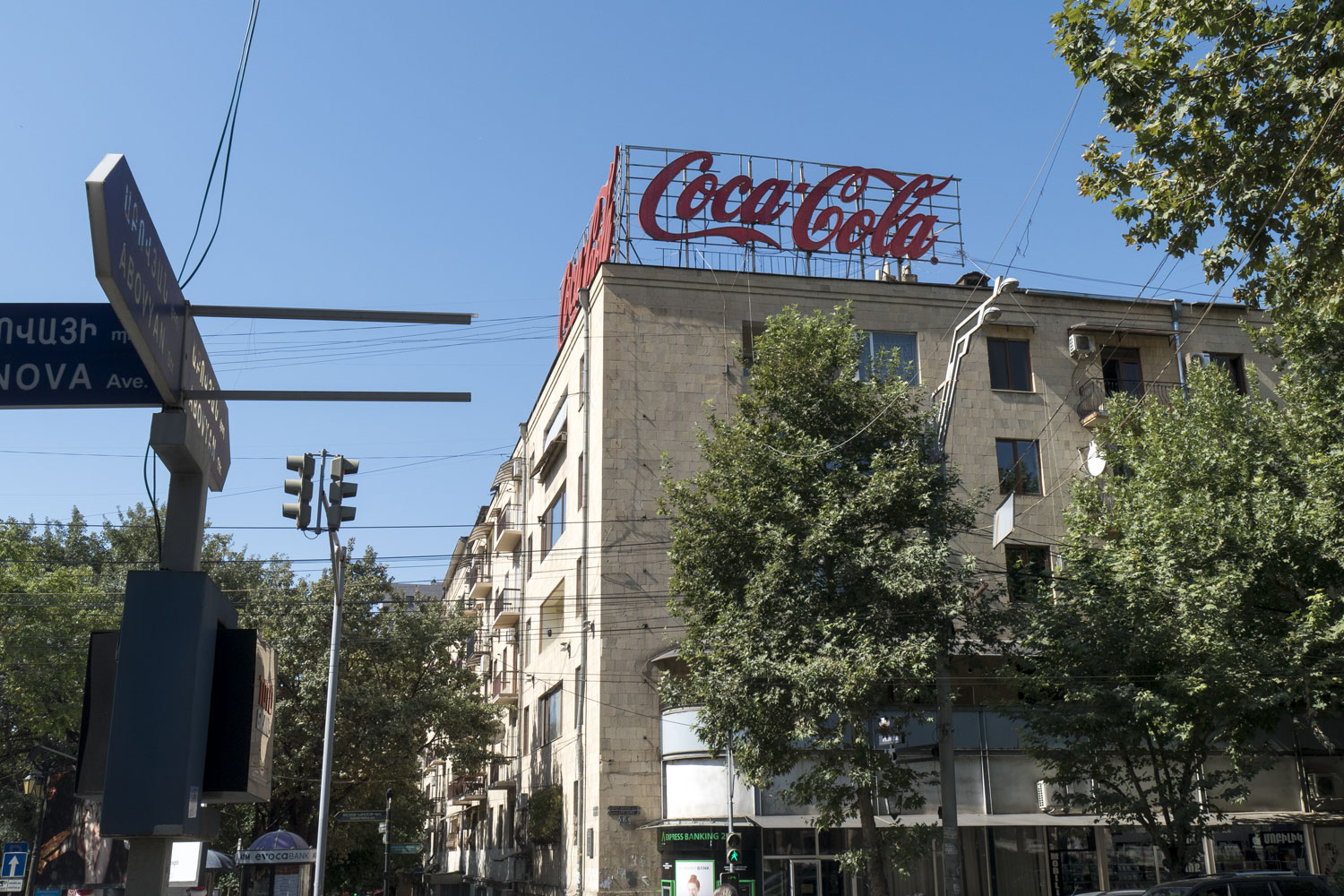
Or here are two large buildings on either side of a wide avenue. With their rotundas, they resemble Tverskaya in Moscow, although the bridge in front of the avenue was clearly inspired by something in Luxembourg for Armenians.
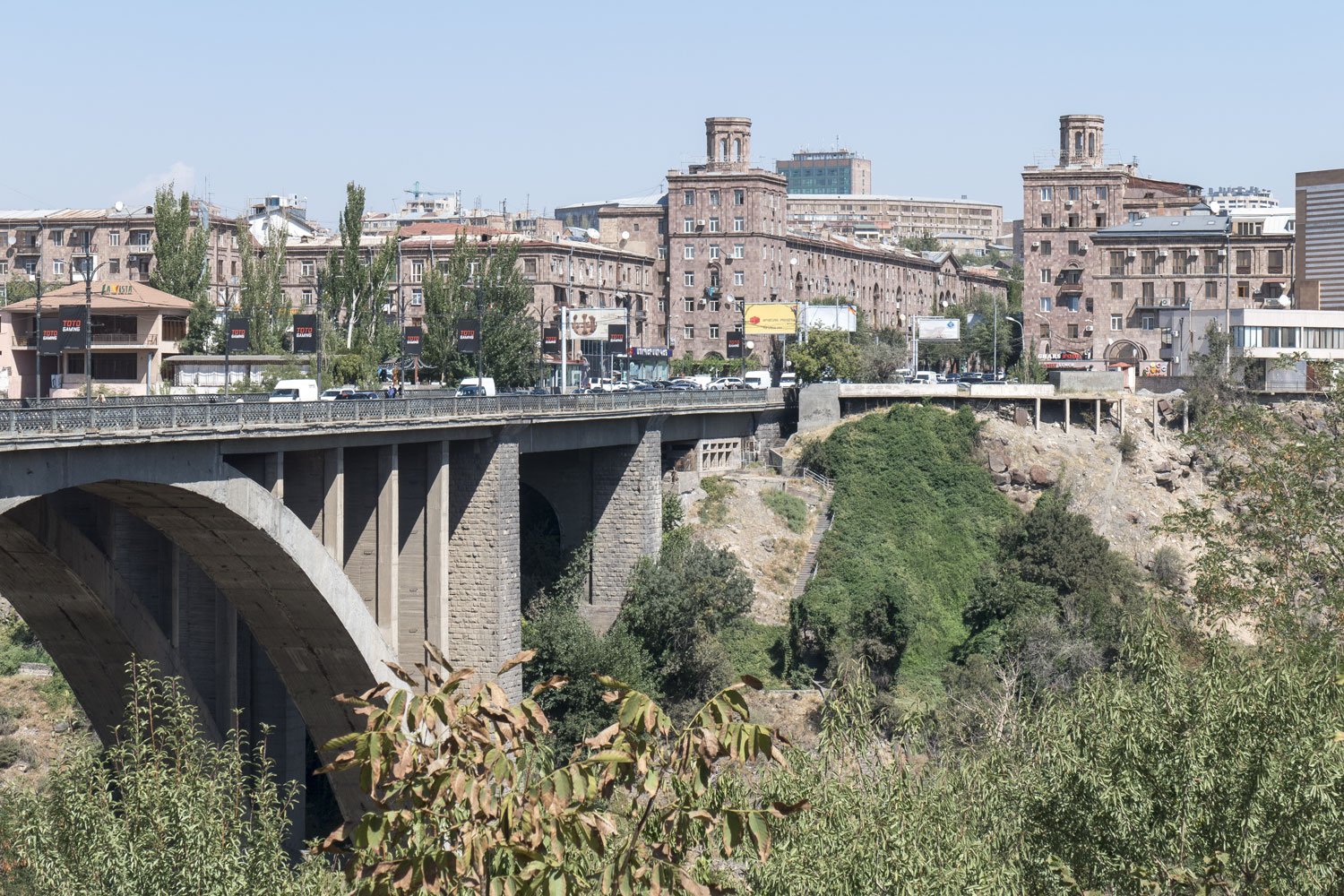
The craziest place in Yerevan is the so-called “Cascade”. In terms of senselessness, it’s like an Armenian version of Poklonnaya Hill in Moscow.
This is an unrealized construction project that was first designed in 1924. The construction of the Cascade began only in 1980, and after ten years they still hadn’t finished it, then the USSR collapsed and war broke out. The Cascade was completed more or less during the prosperous 2000s, but not entirely.
The Cascade is a concrete cascade. It has 572 steps and a height of 450 meters.
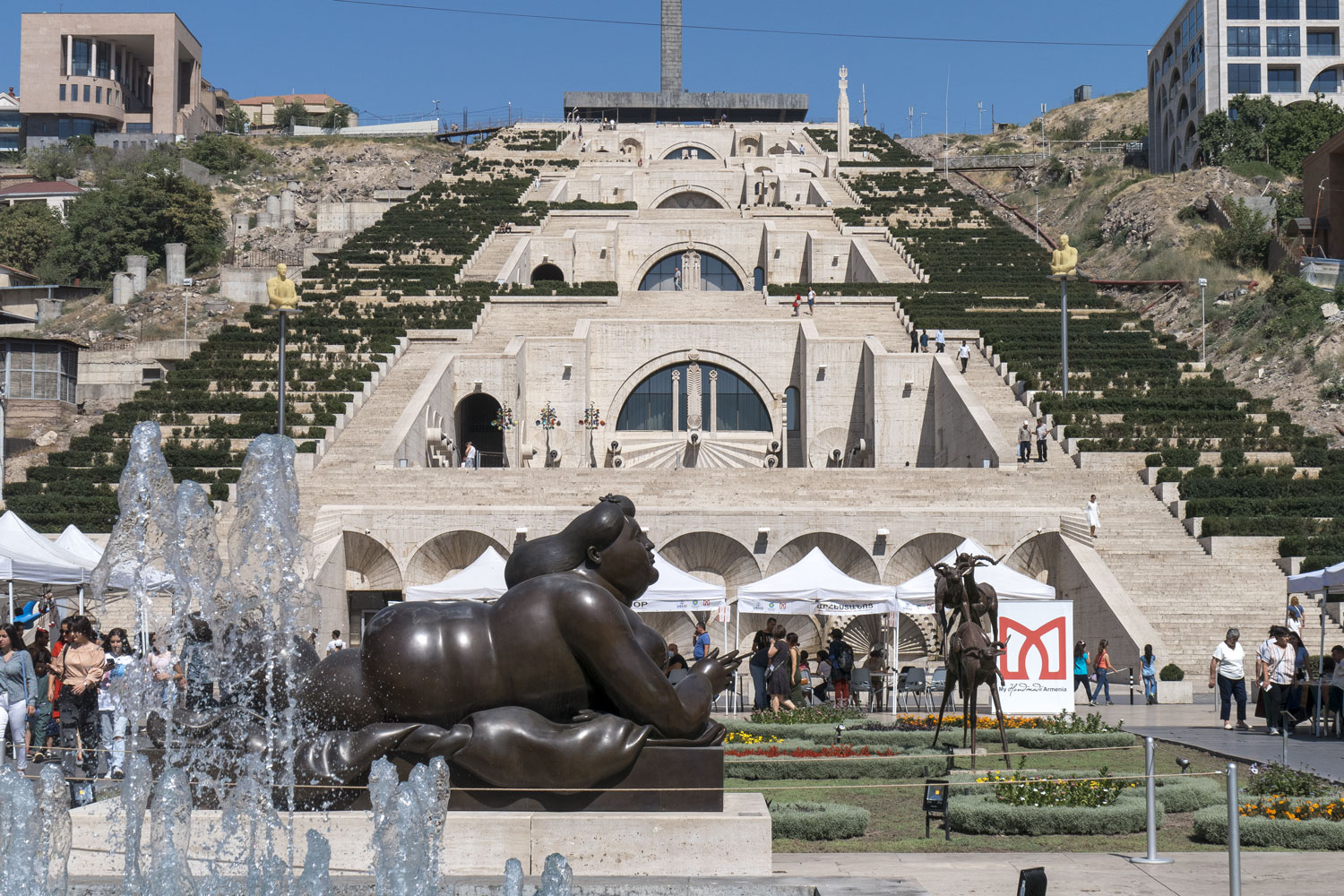
It’s absolutely monstrous, senseless, ugly, inconvenient, and lifeless. Who needs these 572 steps? Athletes for training?
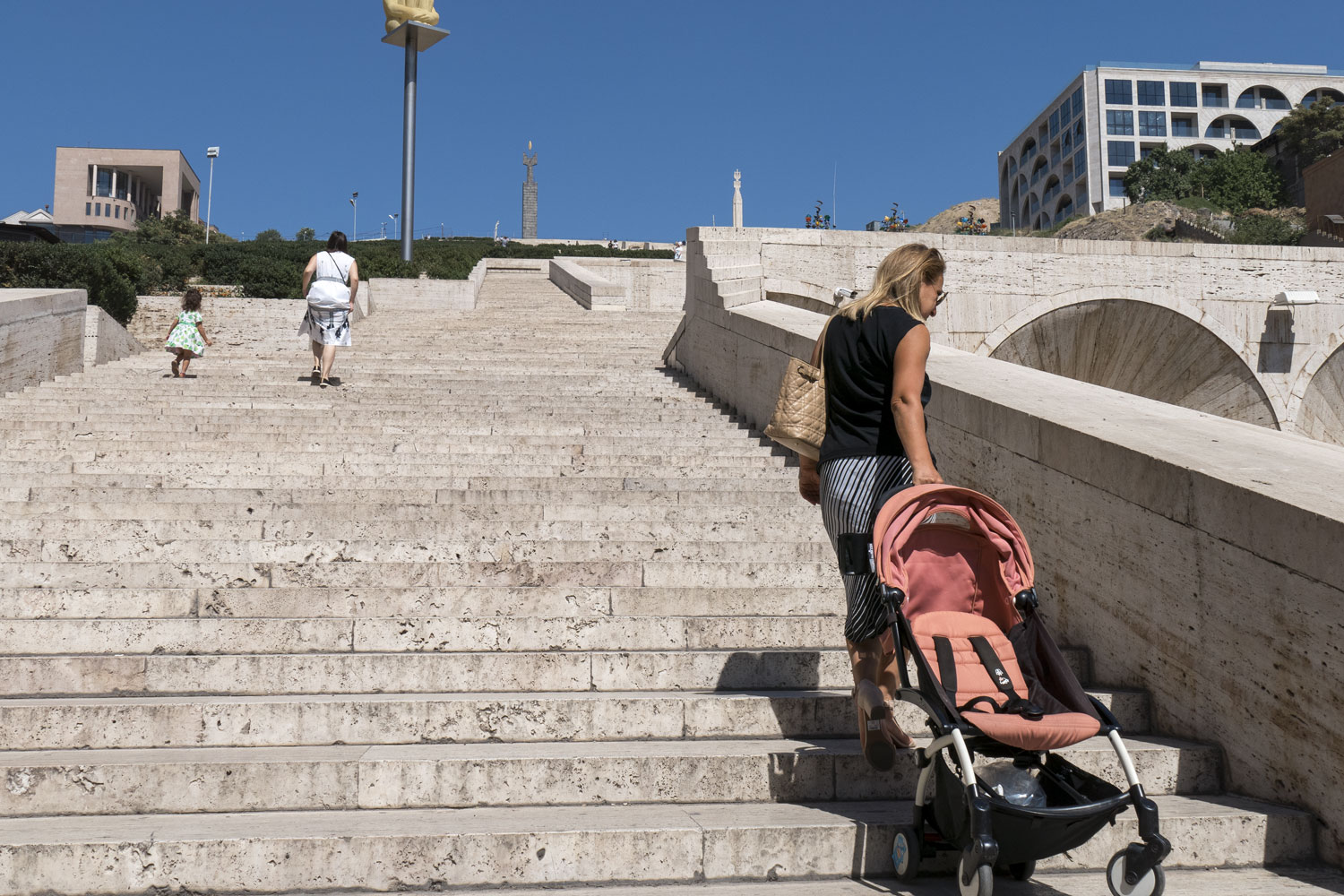
The merciless Armenian sun beats down on the Cascade. The heat here is unbearable. It’s impossible to stay here. There’s not a single shadow, no trees, not even benches. There are only weak bushes in concrete flower beds and feeble fountains.
The view of the city from above is also a complete disappointment.
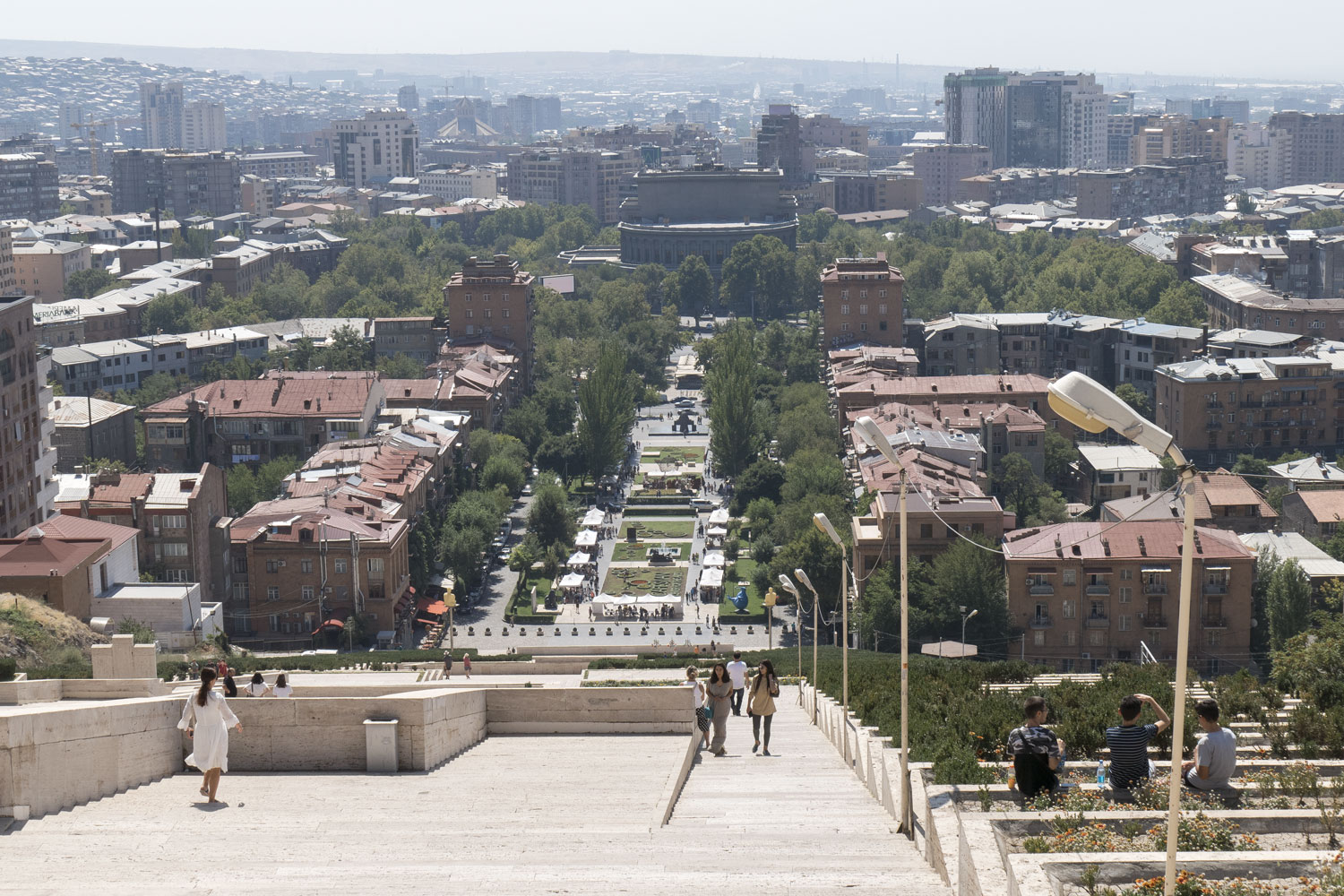
The top tier of the Cascade is still unfinished. You climb to the very top, and there’s just a fence and a construction site.
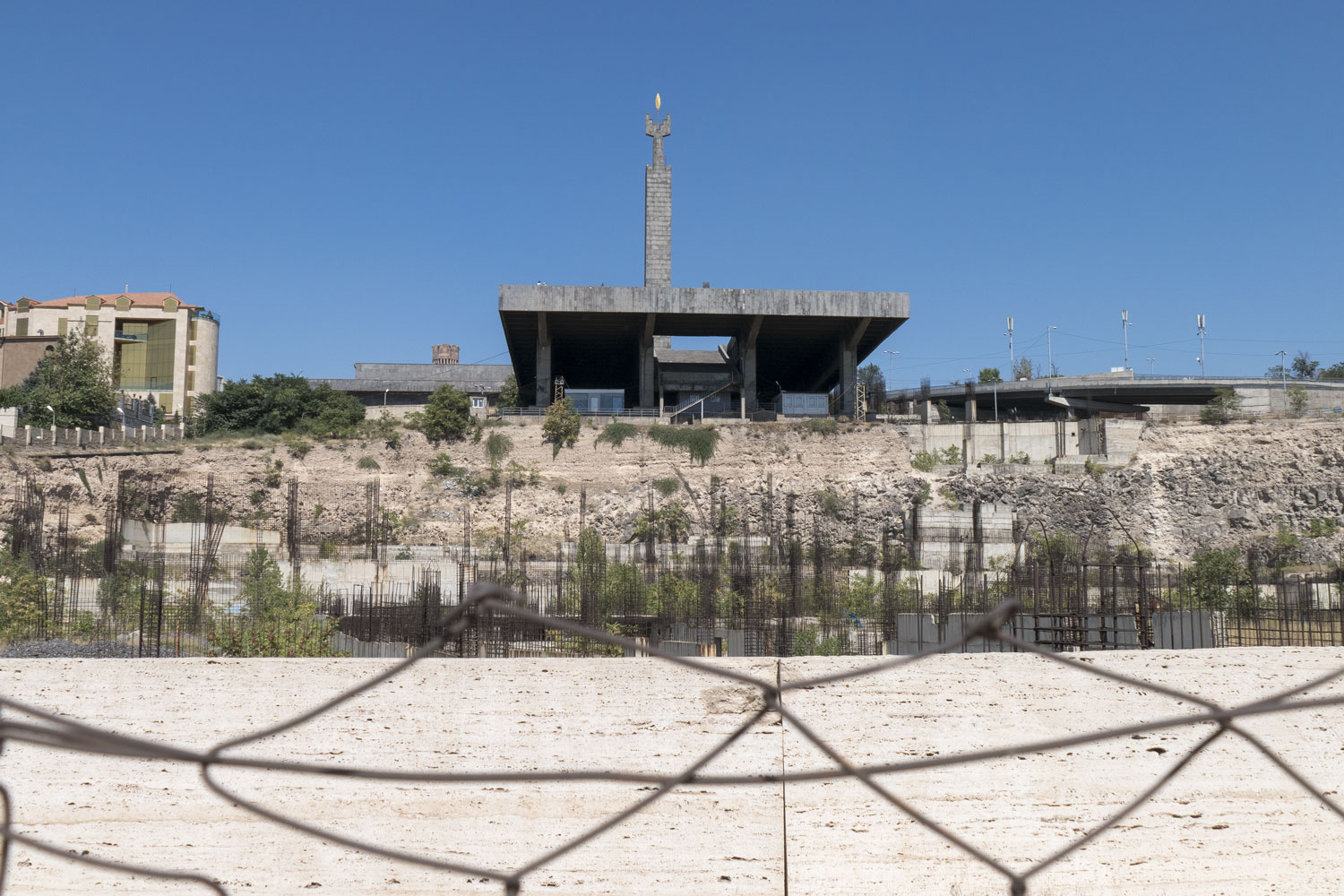
It’s scary to imagine how much money and effort was wasted on this project. They could have won back two Karabakhs.
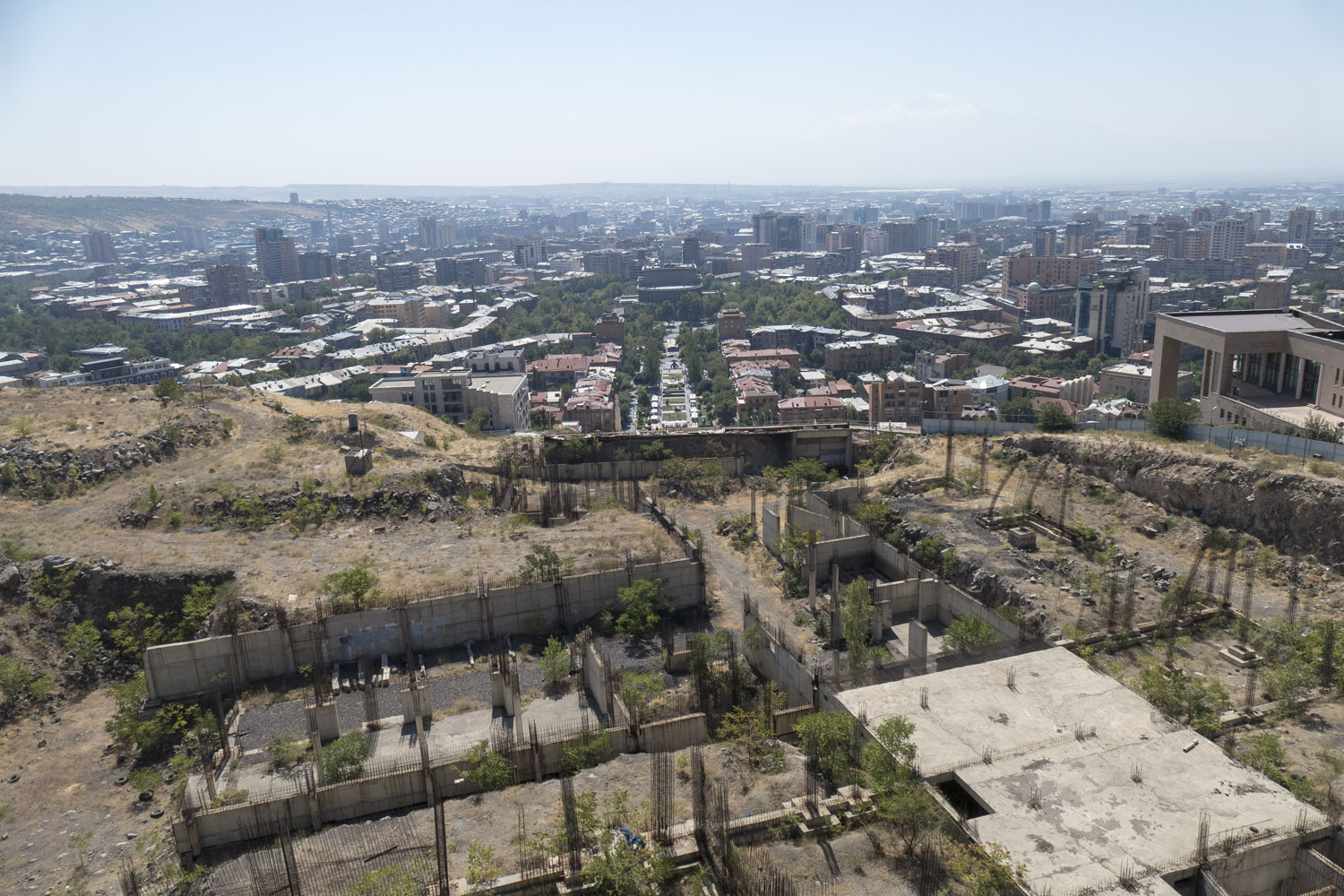
At the top of the Cascade stands an obelisk called “Renewed Armenia”.
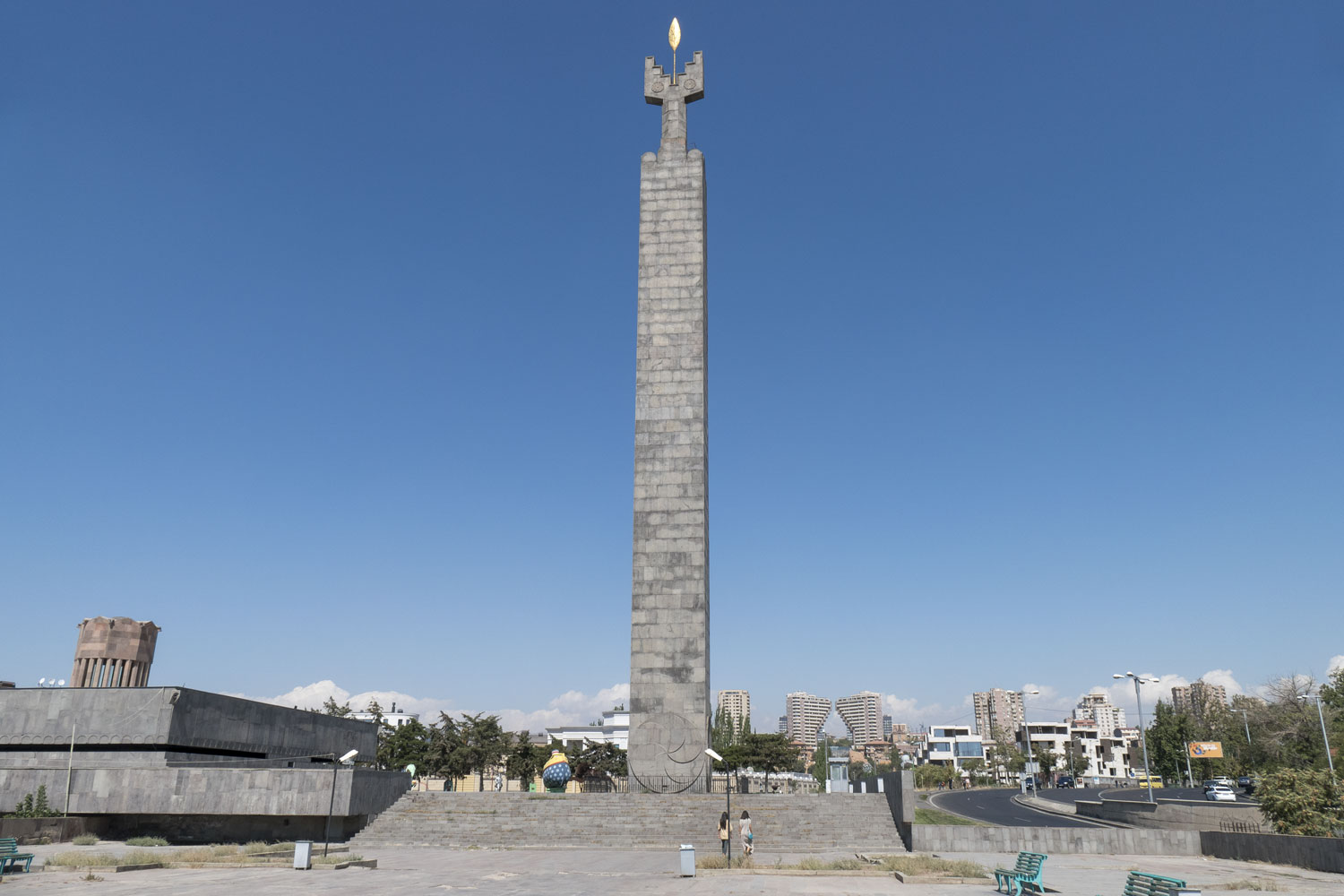
The obelisk is guarded by the “Ararat” salvo fire system.
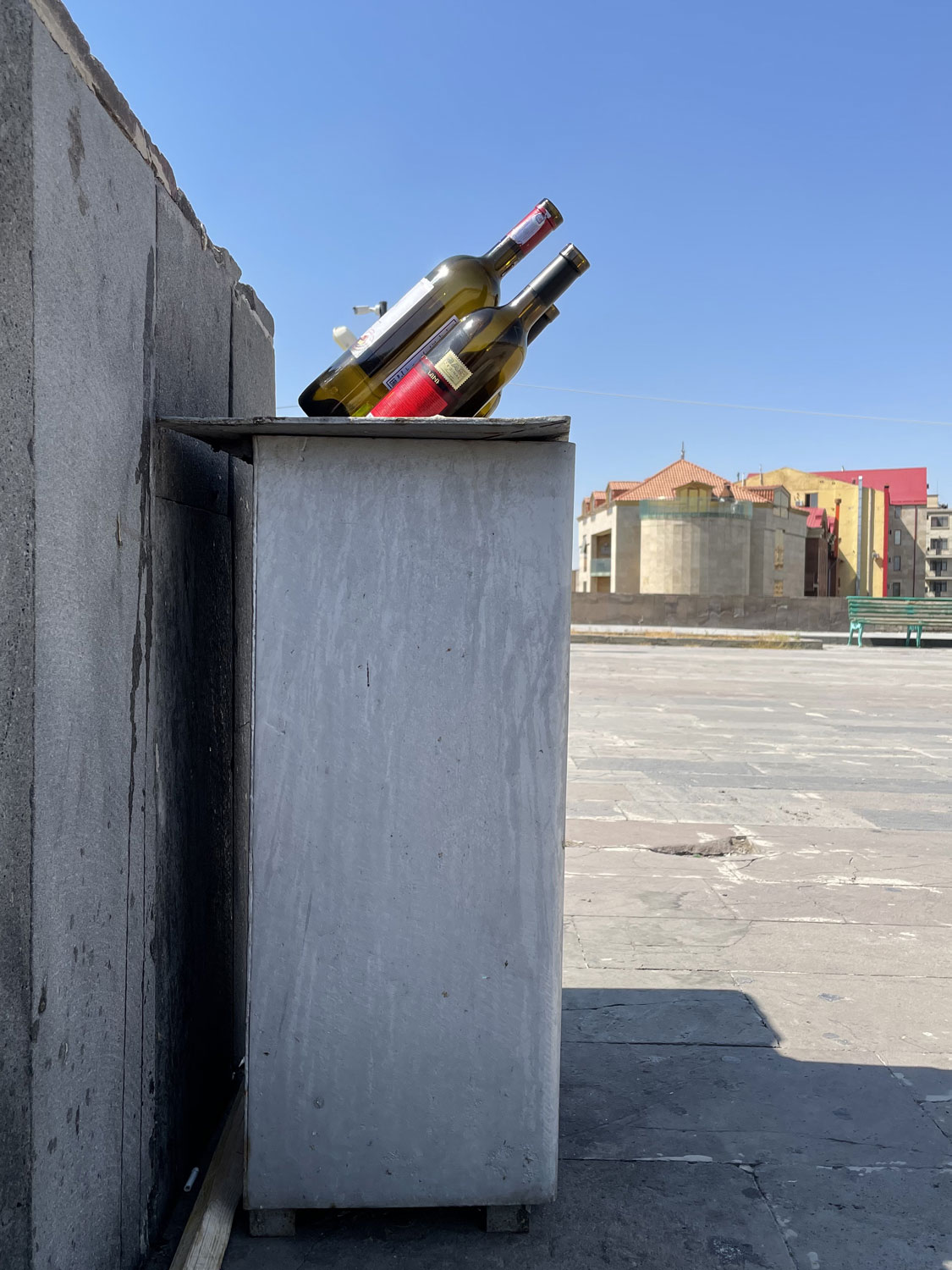
Behind the obelisk, the Victory Park begins. It’s just as faceless and deserted as the Cascade. Time stopped here in 1980.
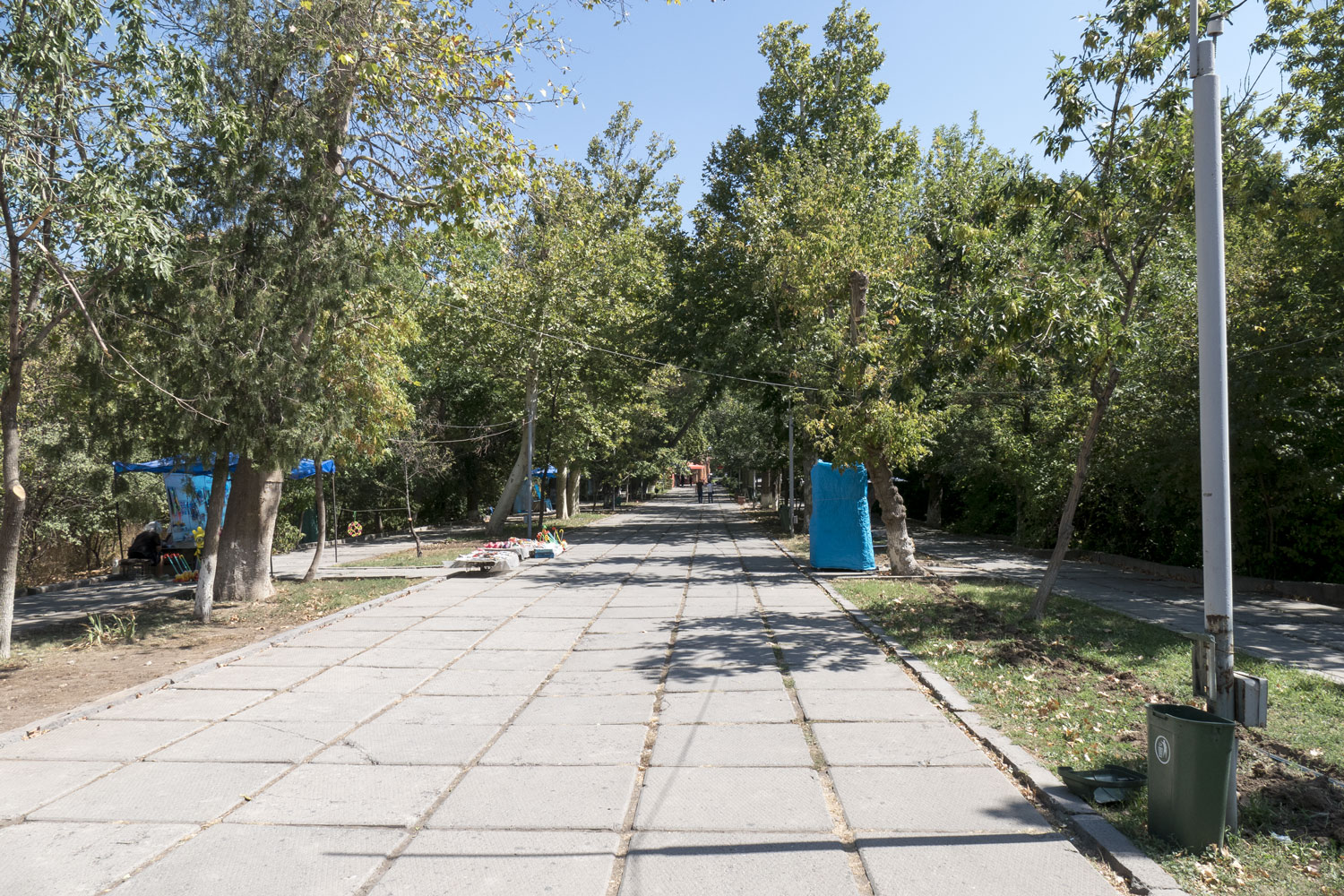
Armenian attractions.
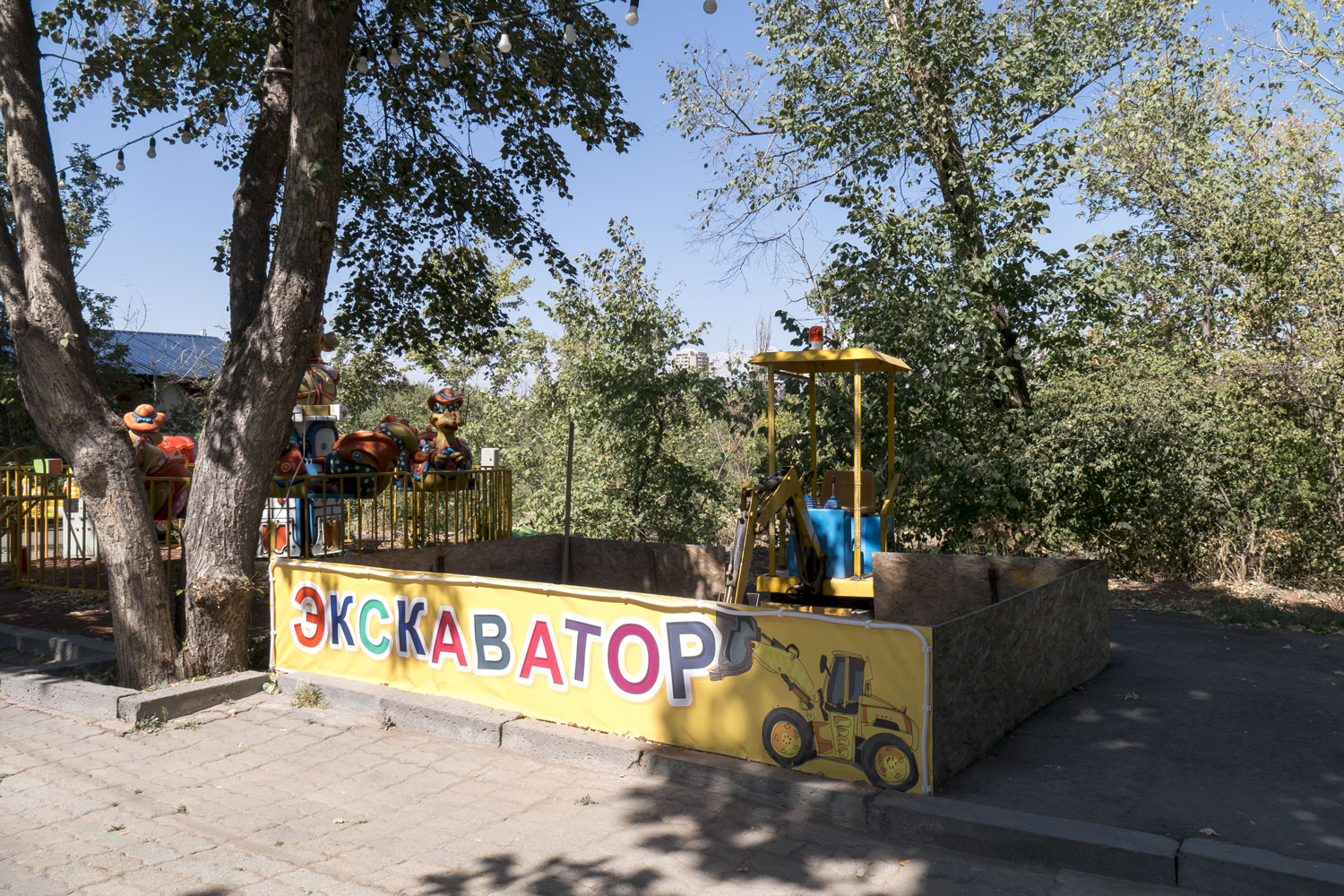
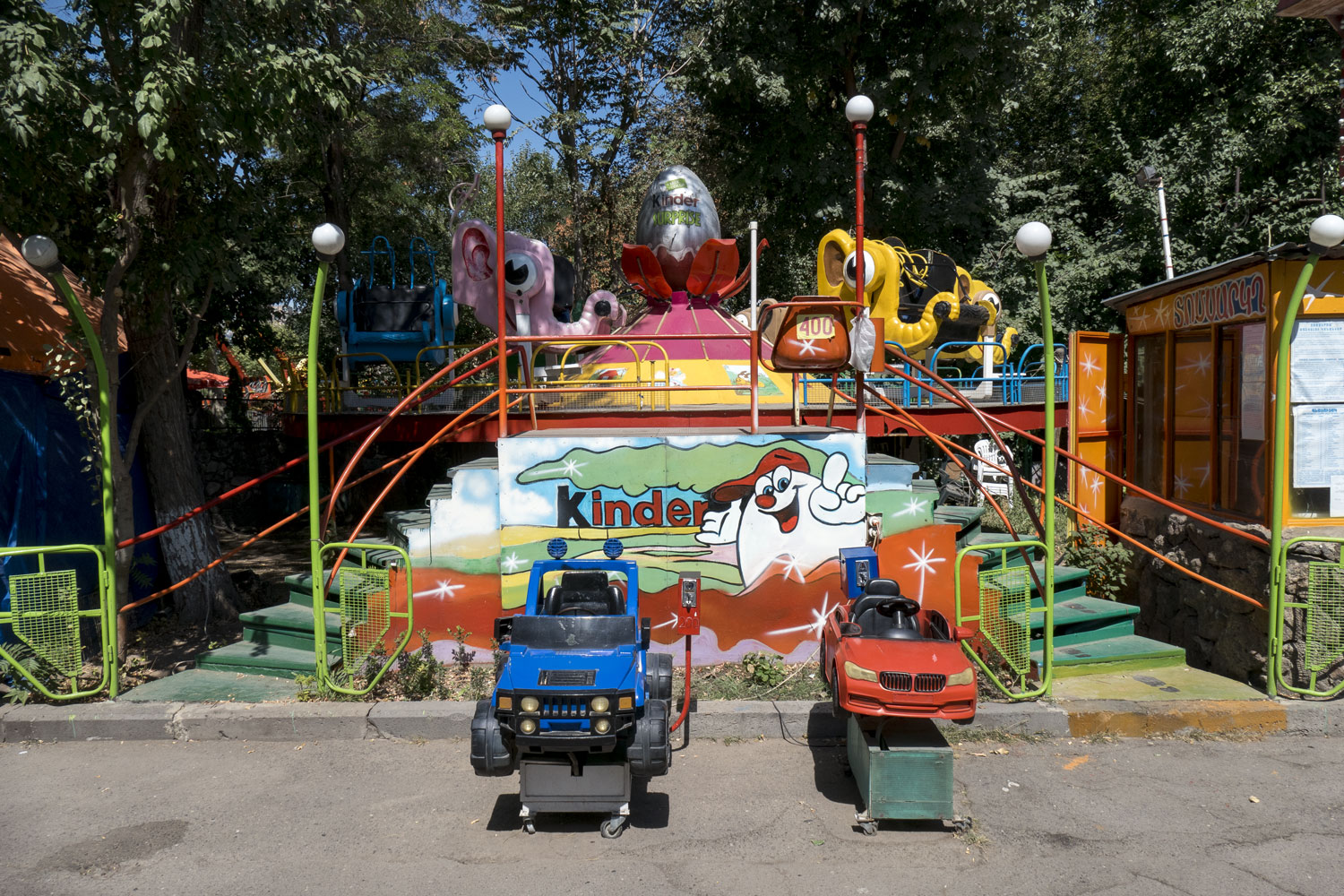
Somewhere behind the trees looms the Mother Armenia monument (on the left).
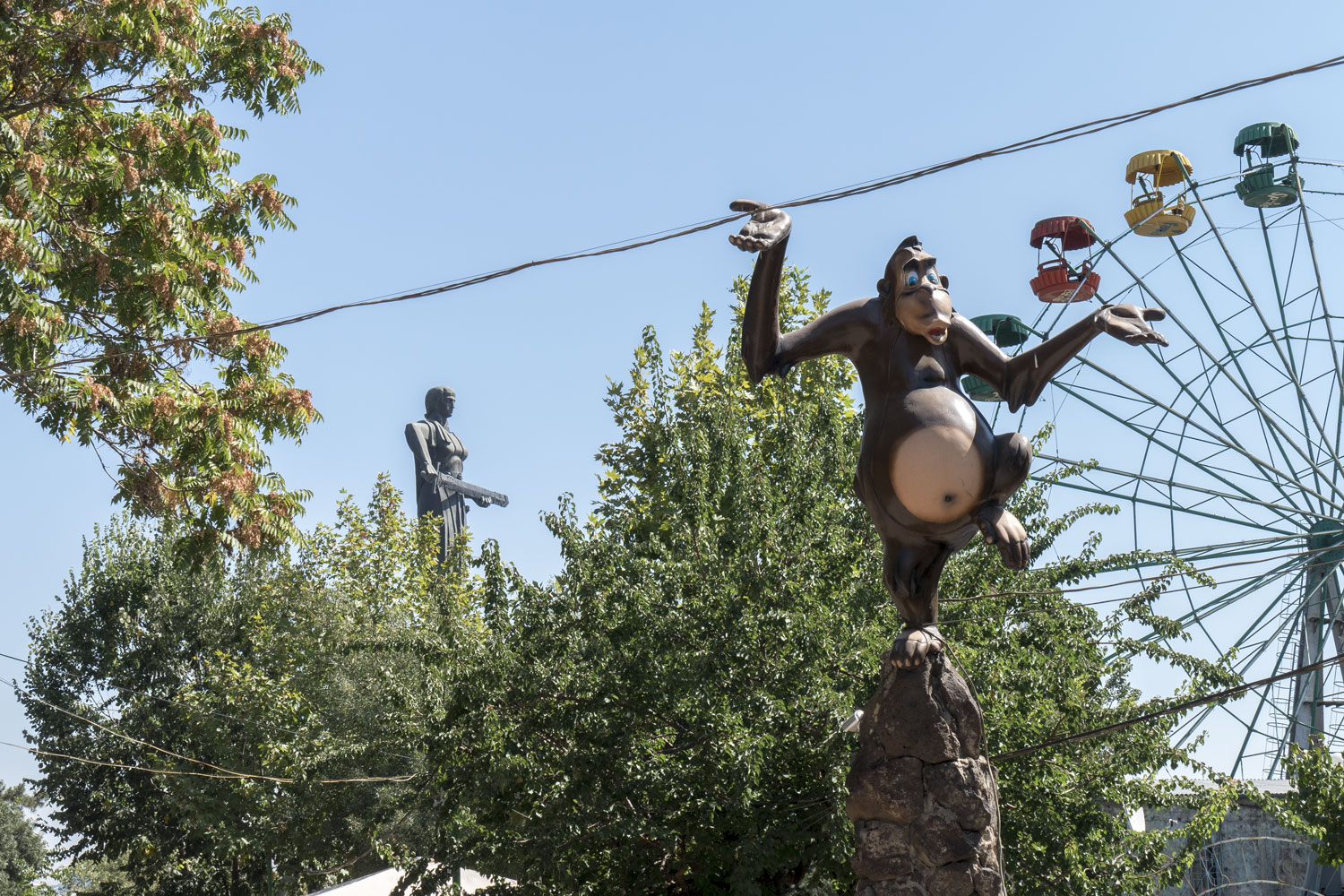
Mother is armed with cold weapons.
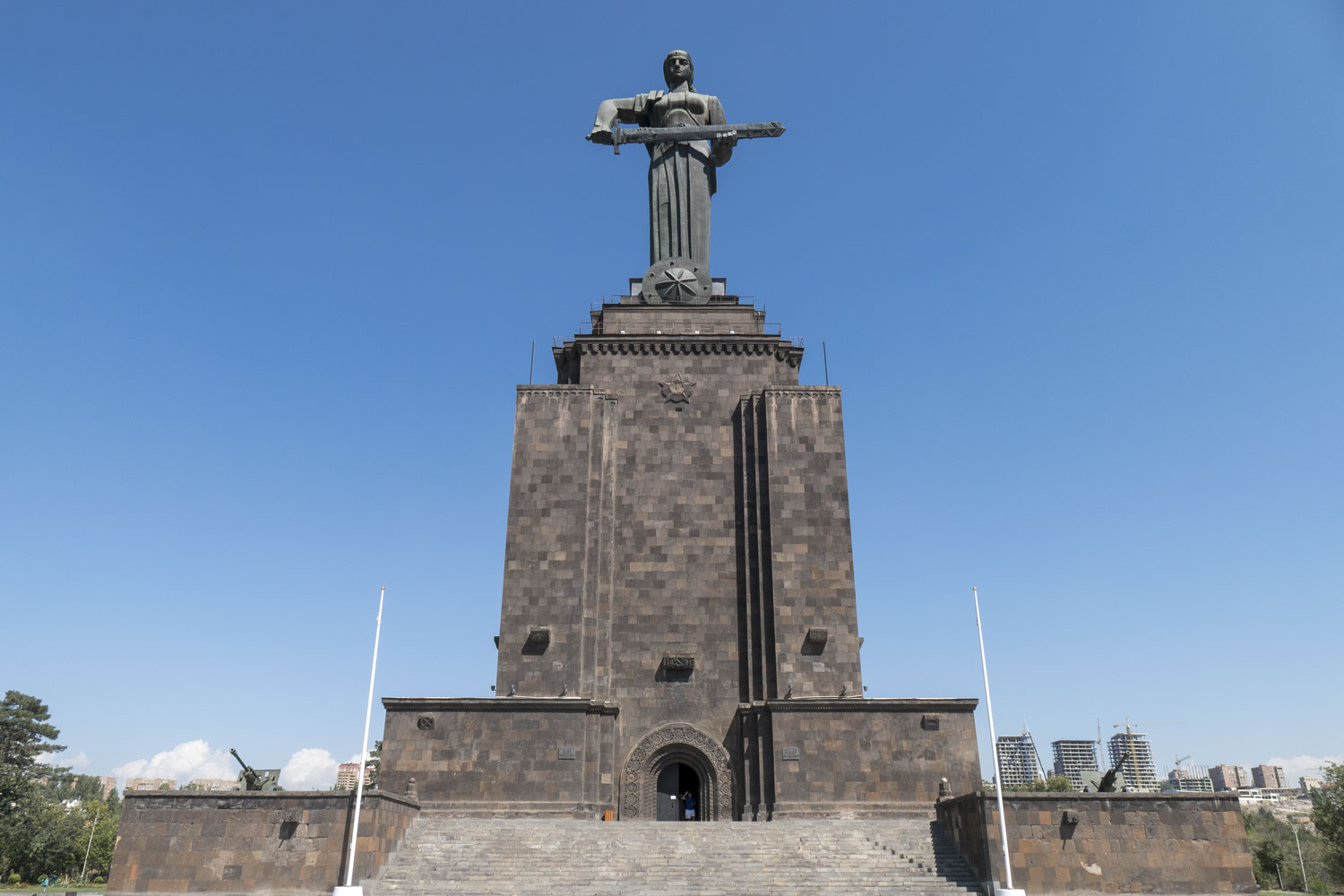
A sword won’t do much, so the mother is protected by missiles.
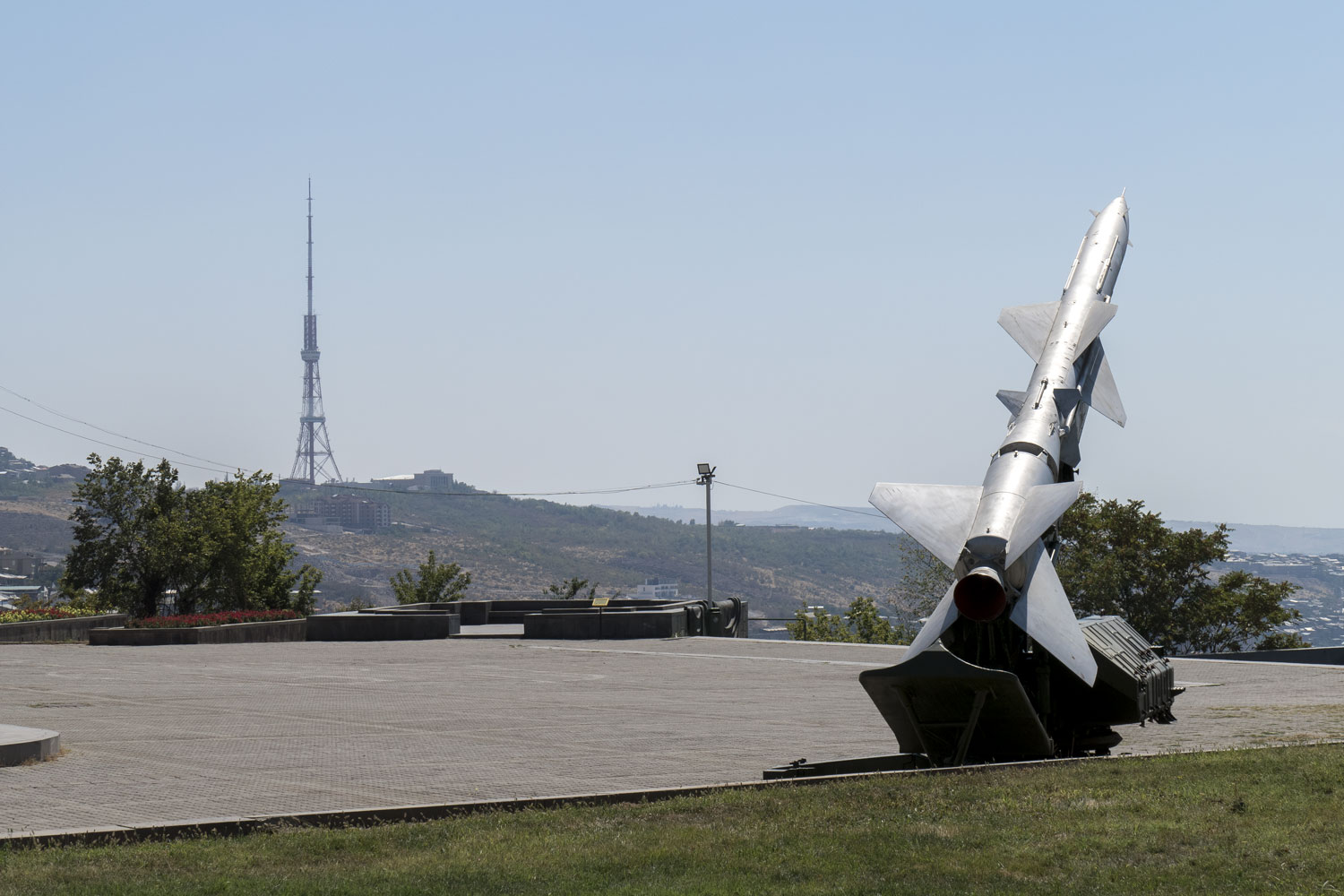
In short, it’s an average place. Let’s go down instead.
There are many churches in Yerevan. Religion is an important part of Armenian culture. On the very first morning, I walked out of the hotel and immediately stumbled upon some kind of religious service. It seems like not a single day in Armenia passes without something related to the church.
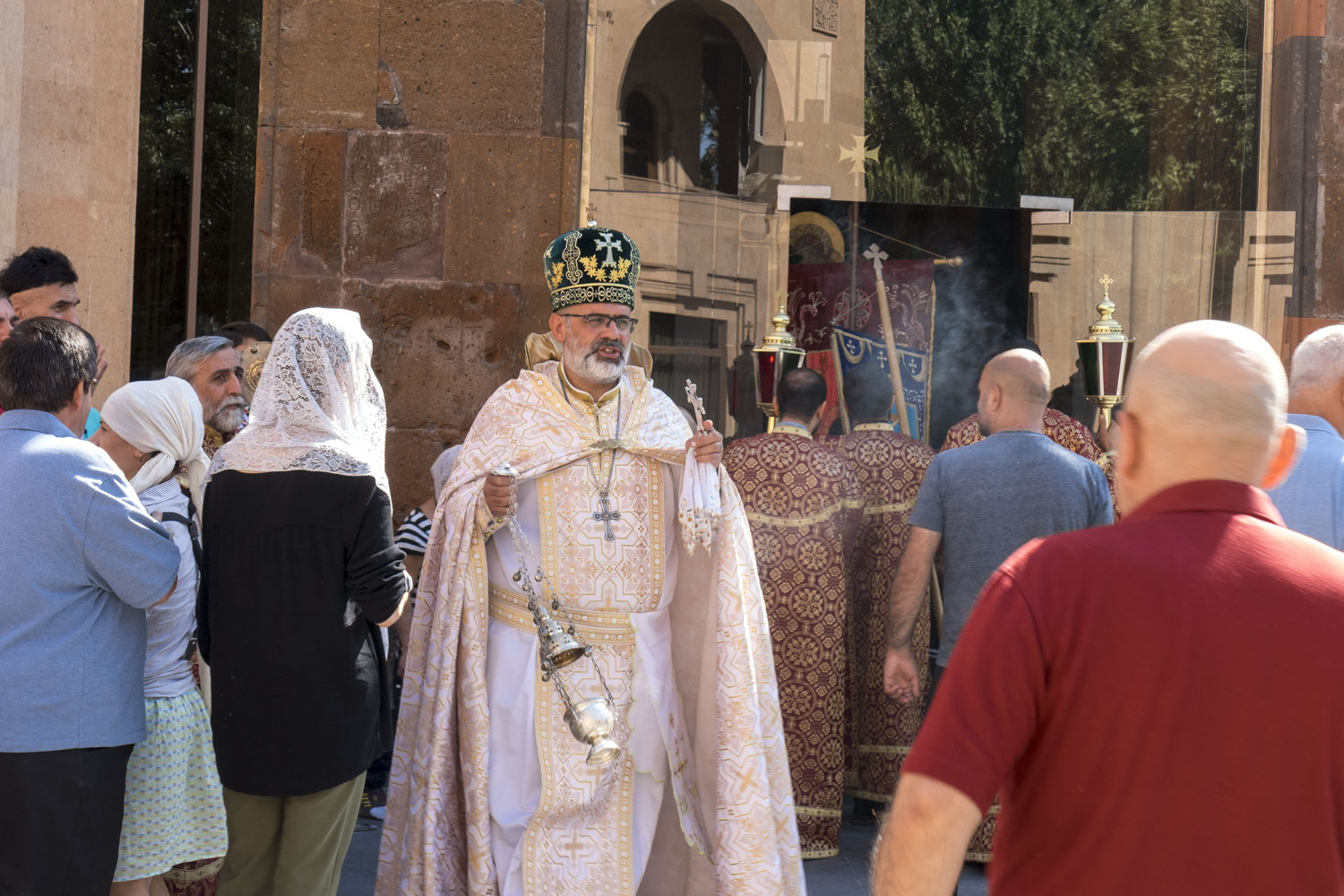
The Armenian Orthodox Church is not much different from the Russian one. The differences are mainly in various ritual details. However, the churches themselves look completely different. There are no golden domes. Strict walls of a brick shade and a sharp roof of the same color resembling a decorative slice of a watermelon.
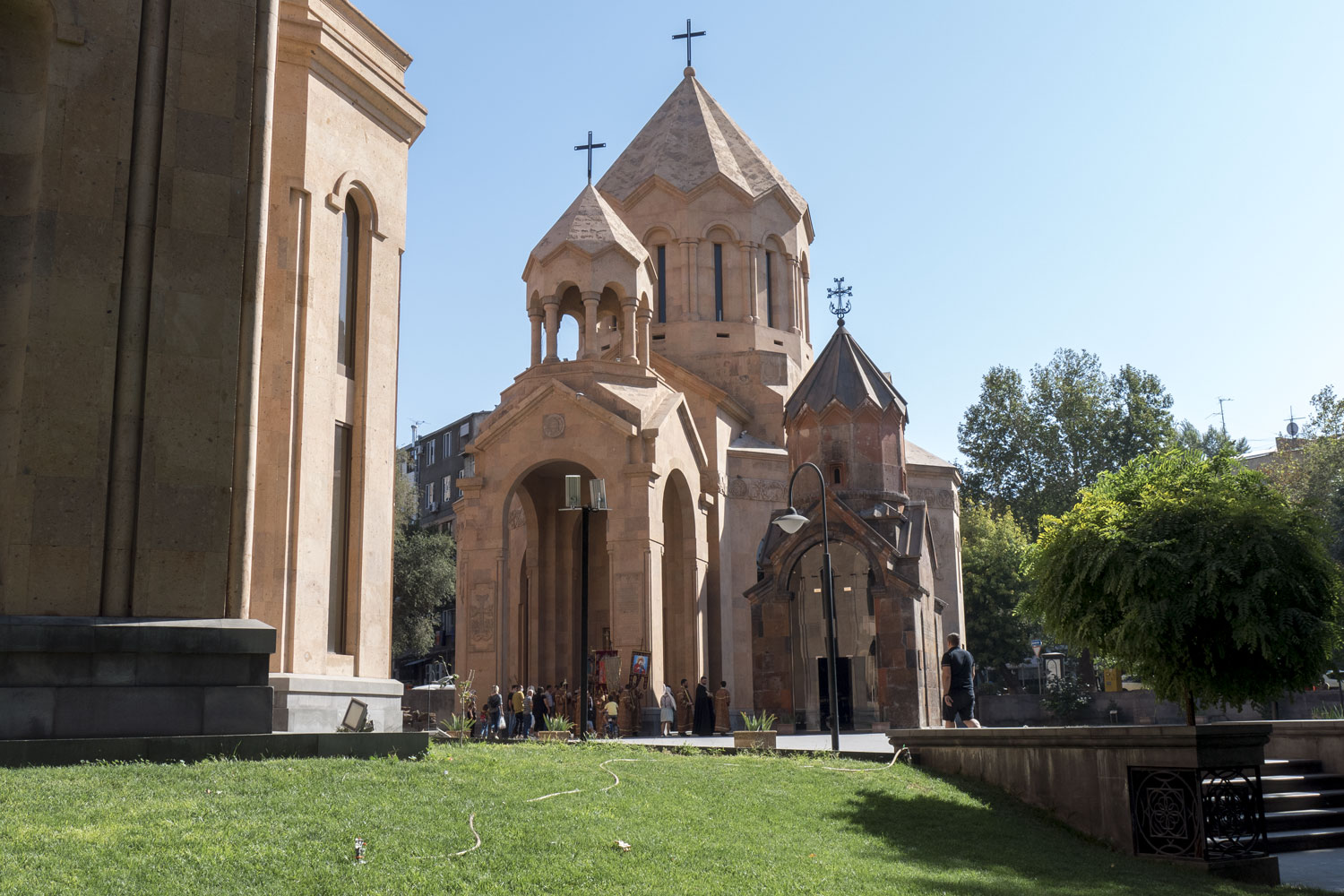
The churches in Yerevan are an integral part of the city’s landscape.
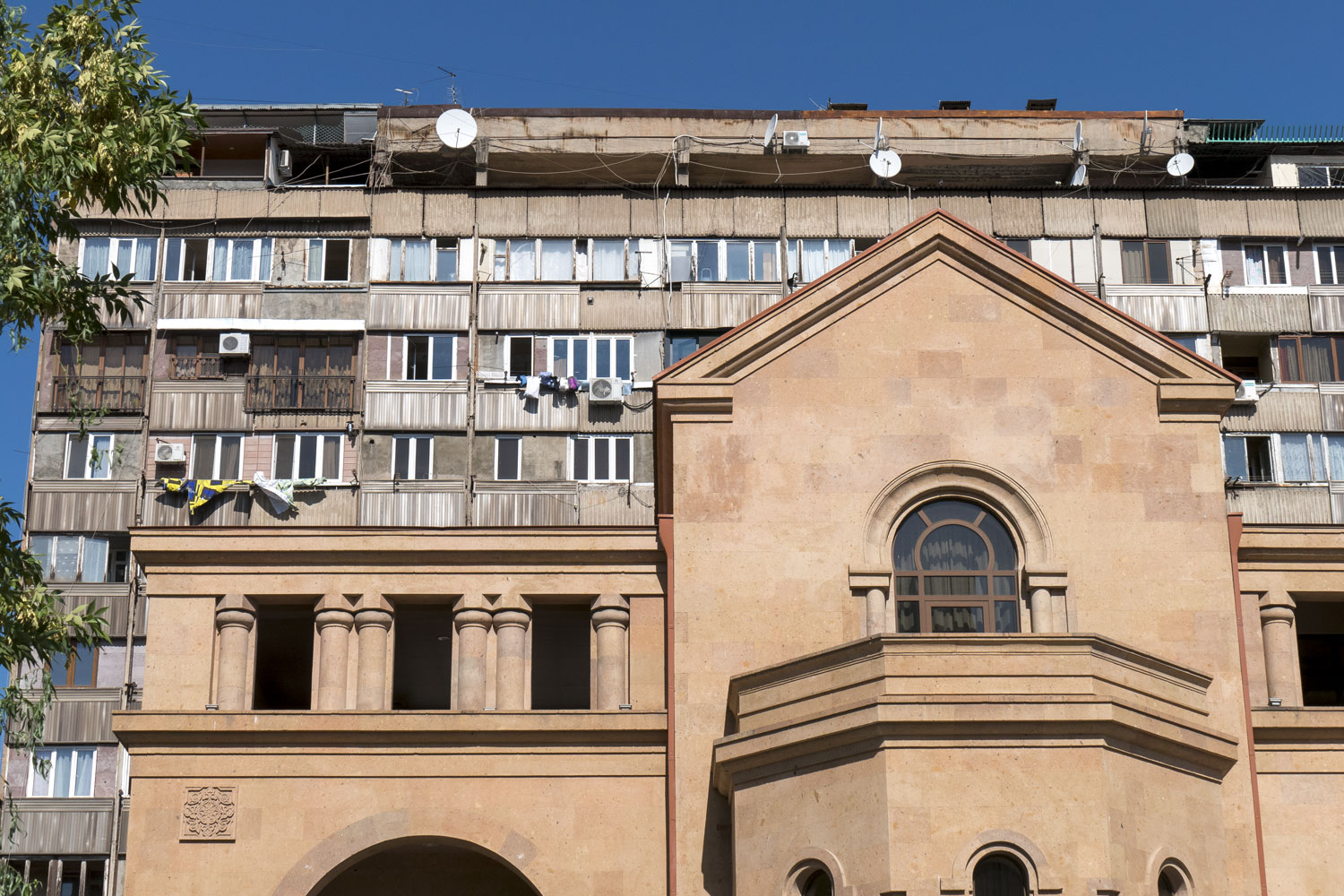
The largest temple in the city is the Cathedral of St. George. It’s an analogue of the Moscow XX century cathedral. In other words, it’s a tasteless modern construction. It was built in 2001.
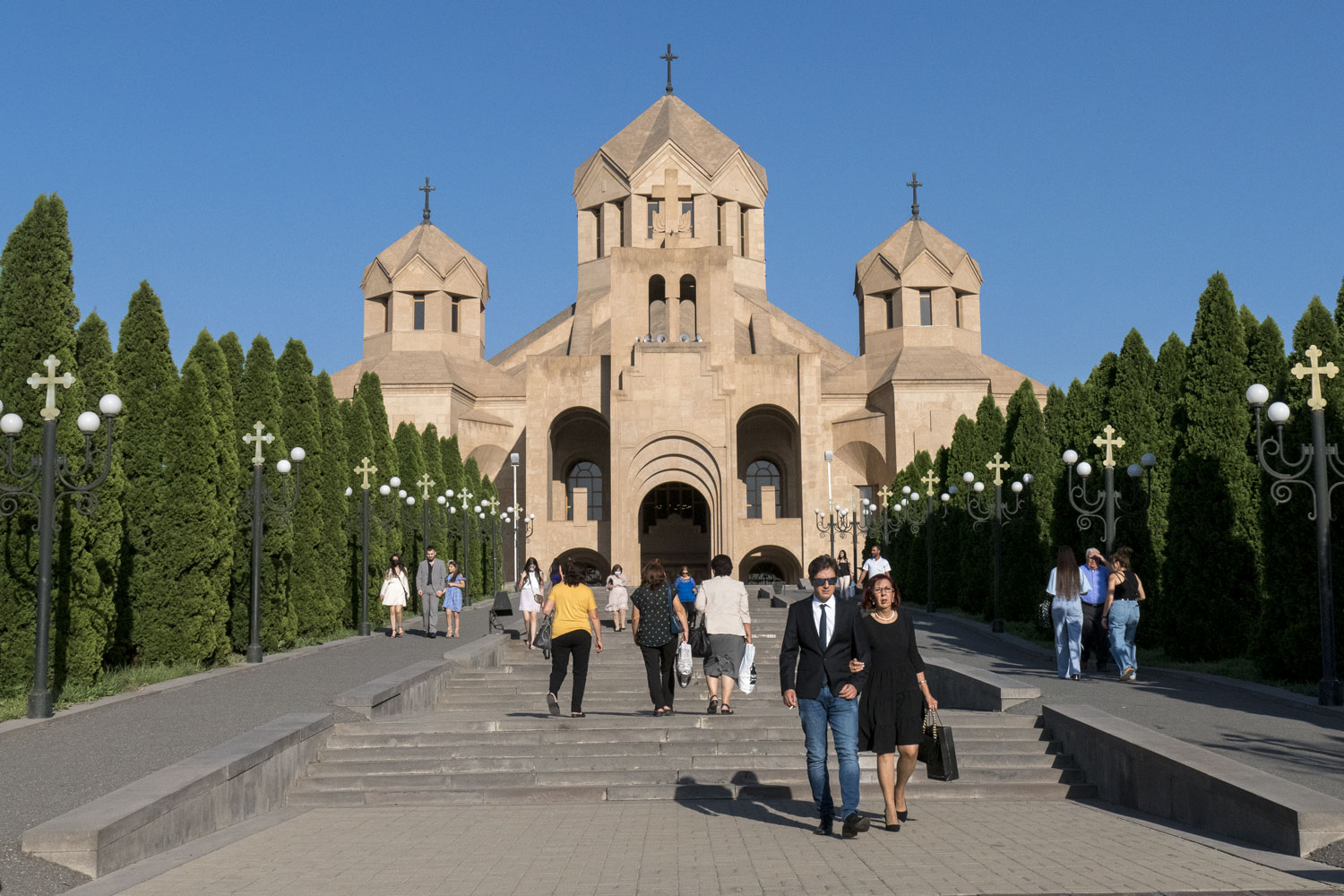
Other religions are also represented in Yerevan. For example, the Blue Mosque is located somewhere in residential neighborhoods.
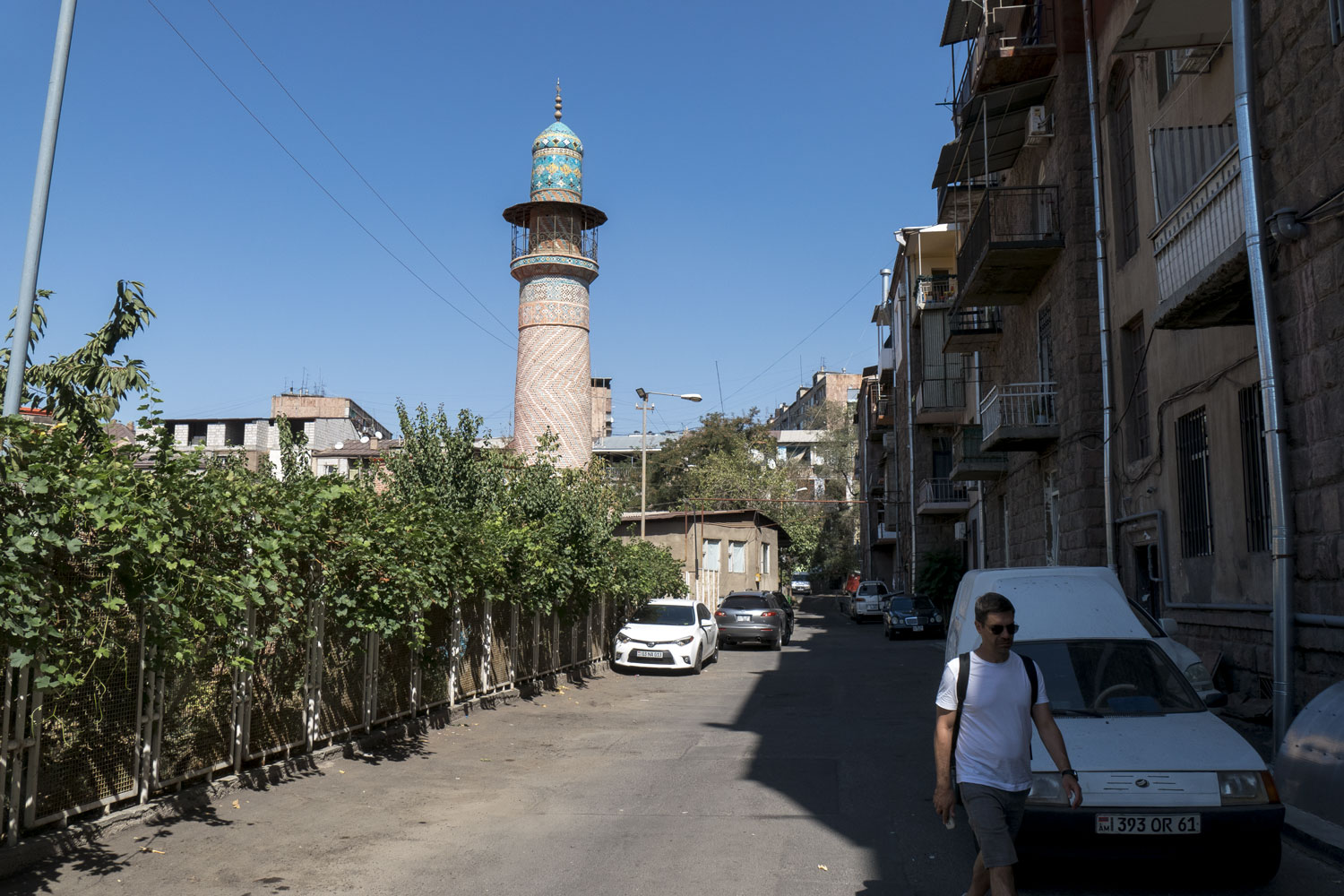
I just love it when such a treasure stands right in the middle of panel buildings. It’s an incredible contrast.
The mosque was built in 1766 by Khan Husayn Qajar when Armenia was under the rule of Persia. The house opposite was built by Khan Nikita Khrushchev in the 1960s during the communist era.
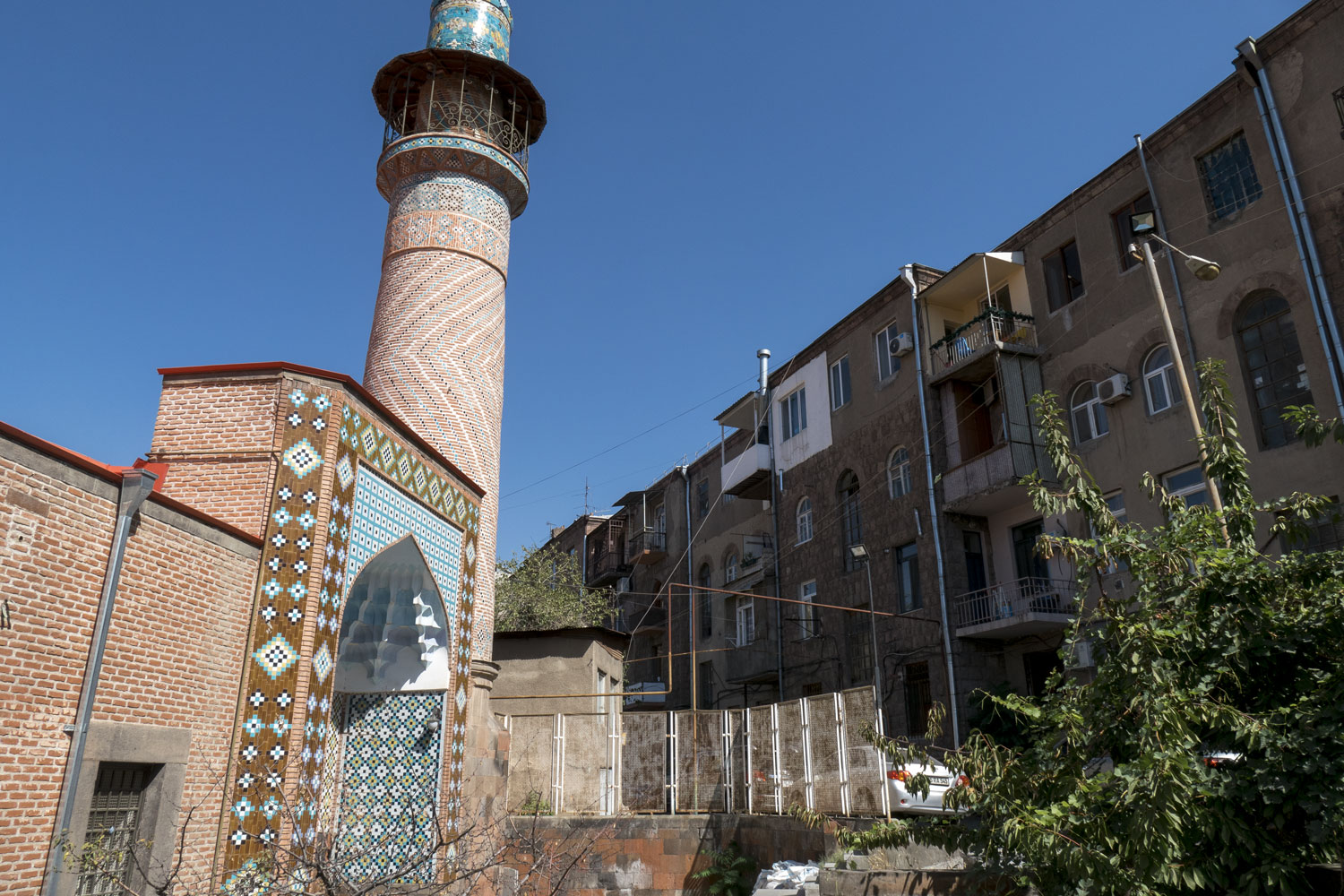
During the Soviet period, the Blue Mosque was occupied by a planetarium and there was freedom of religion. Currently, the mosque is being restored, and before that, there was an Iranian cultural center here, but now it seems to have moved somewhere else.
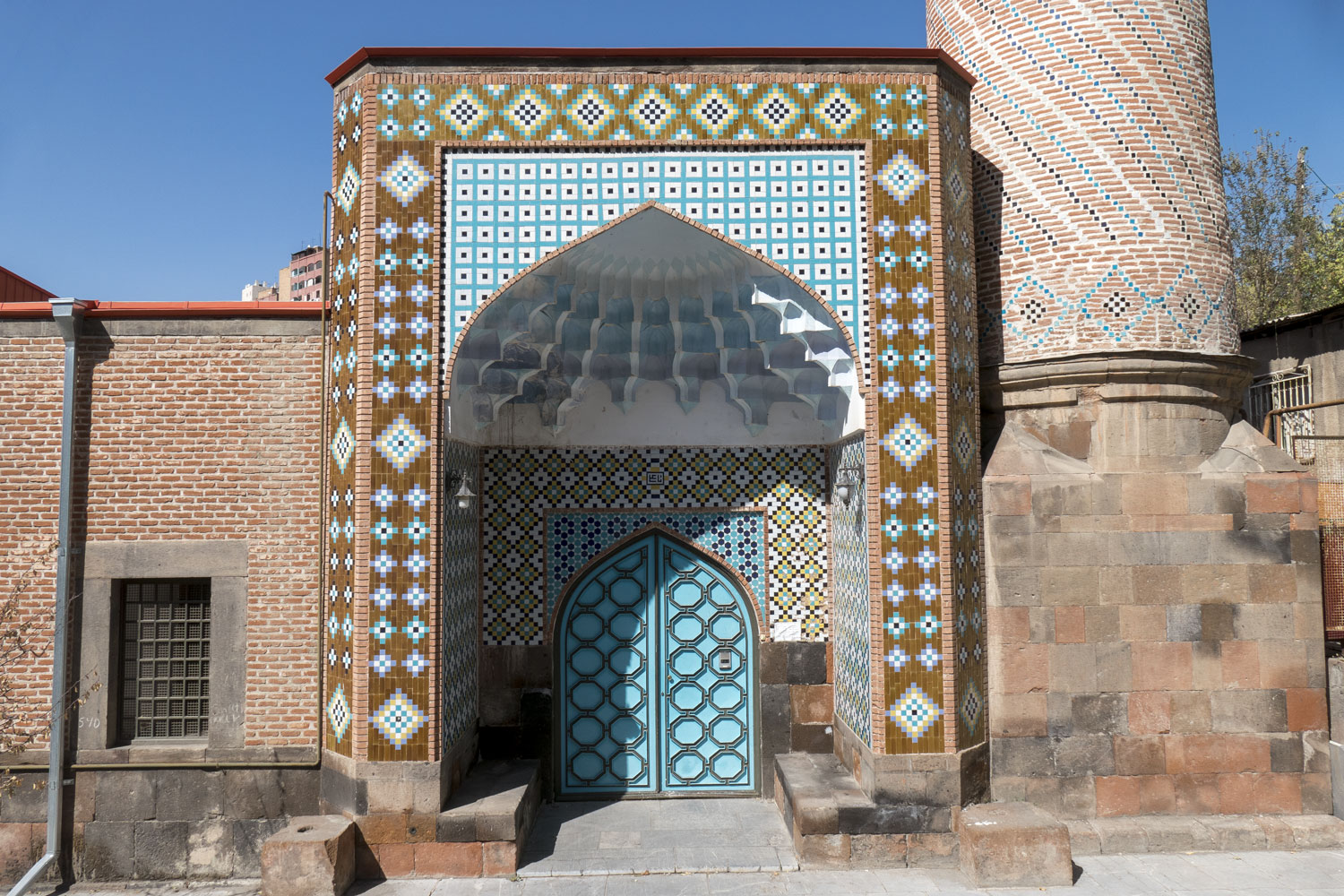
Not far from the mosque (although in Yerevan, there is no concept of “far”) is the Parajanov Museum.
Parajanov is an Armenian film director, mainly known for the movie “The Color of Pomegranates”. Parajanov didn’t gain much popularity, although he made quite good art-house films. He received a flurry of awards only closer to the collapse of the Soviet Union, but it was already too late: the director passed away in 1990.
The museum was opened in Parajanov’s house on the outskirts of Yerevan in a strange building that resembles an excavated underground cellar.
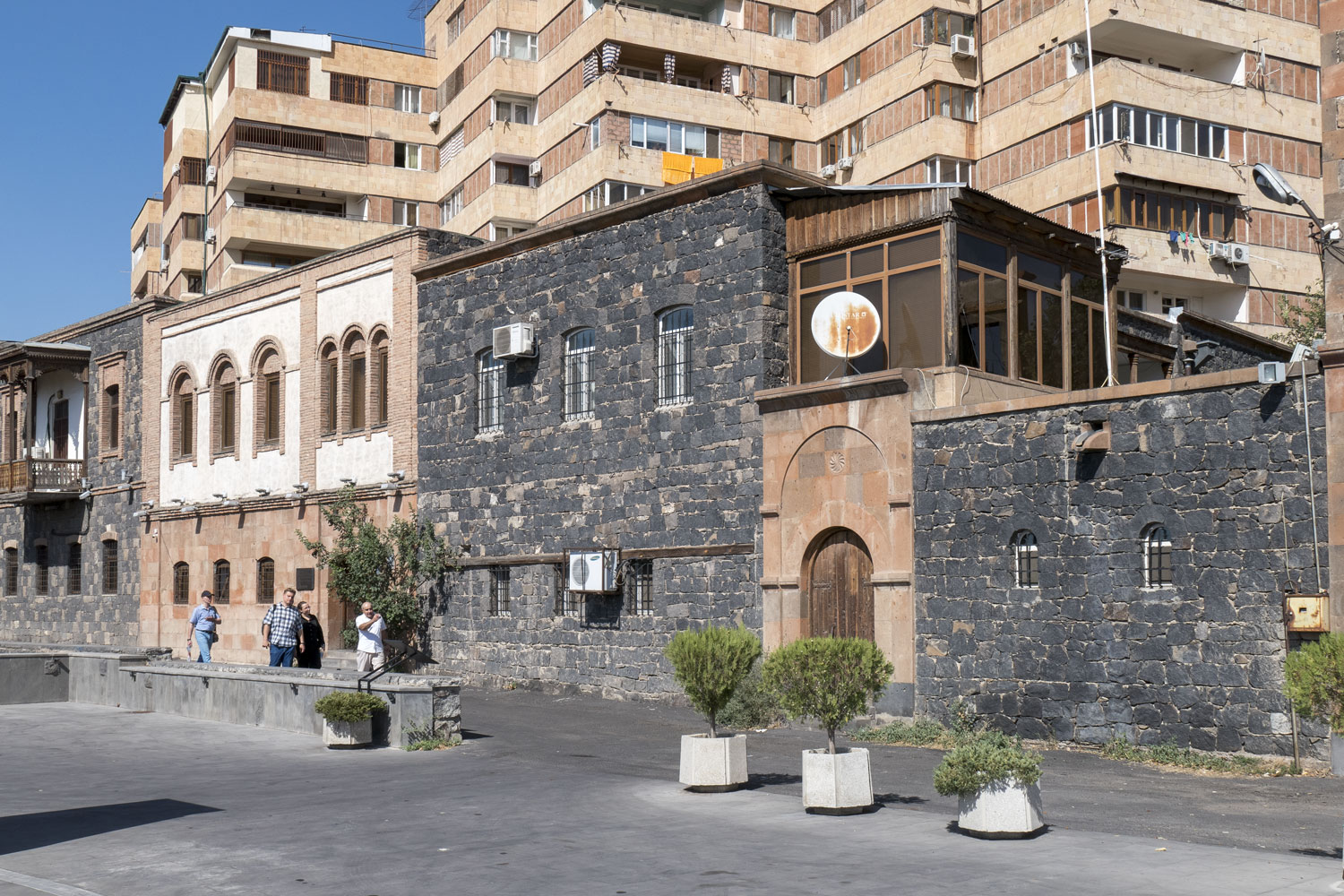
In general, one can confidently diagnose schizophrenia from the first visit to the museum.
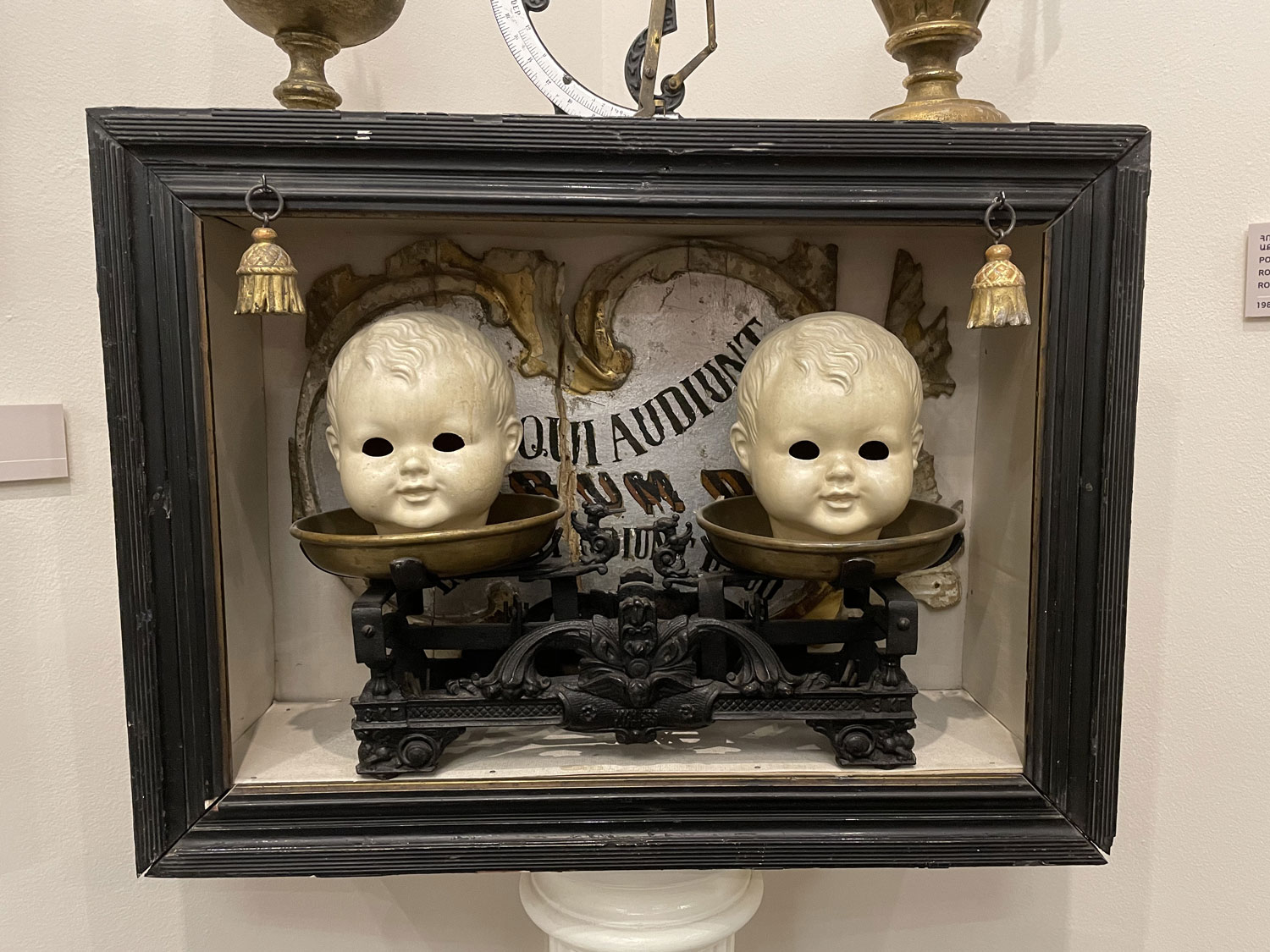
The exhibits are unrelated objects placed next to each other. Only an amateur can fall for it. The connection between a seashell, breasts, and a skull may exist, but it’s equally absurd as the connection between a pencil and a shoe (both leave a mark).
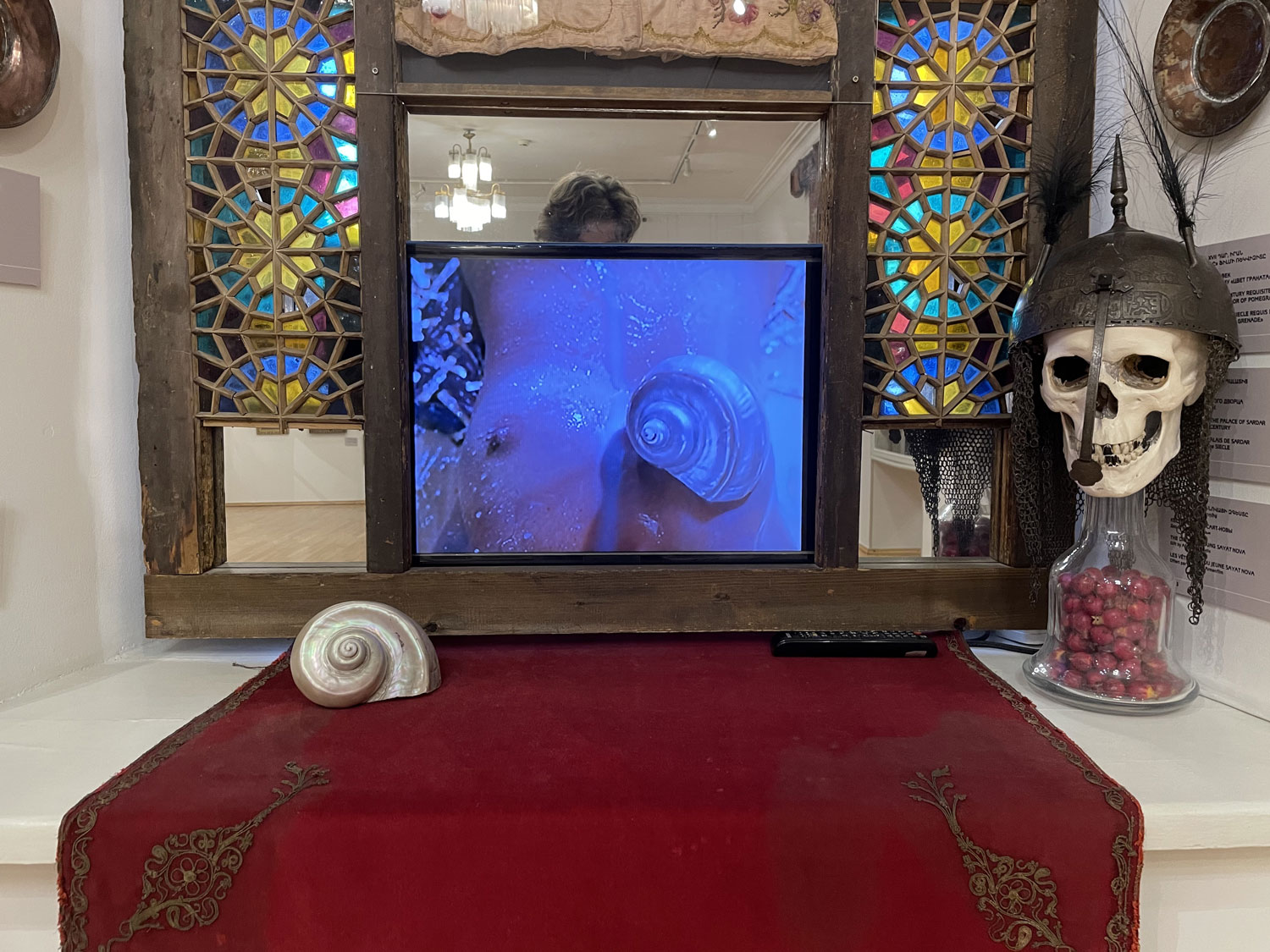
An elephant made from an old briefcase. Well, that’s just amazing now.
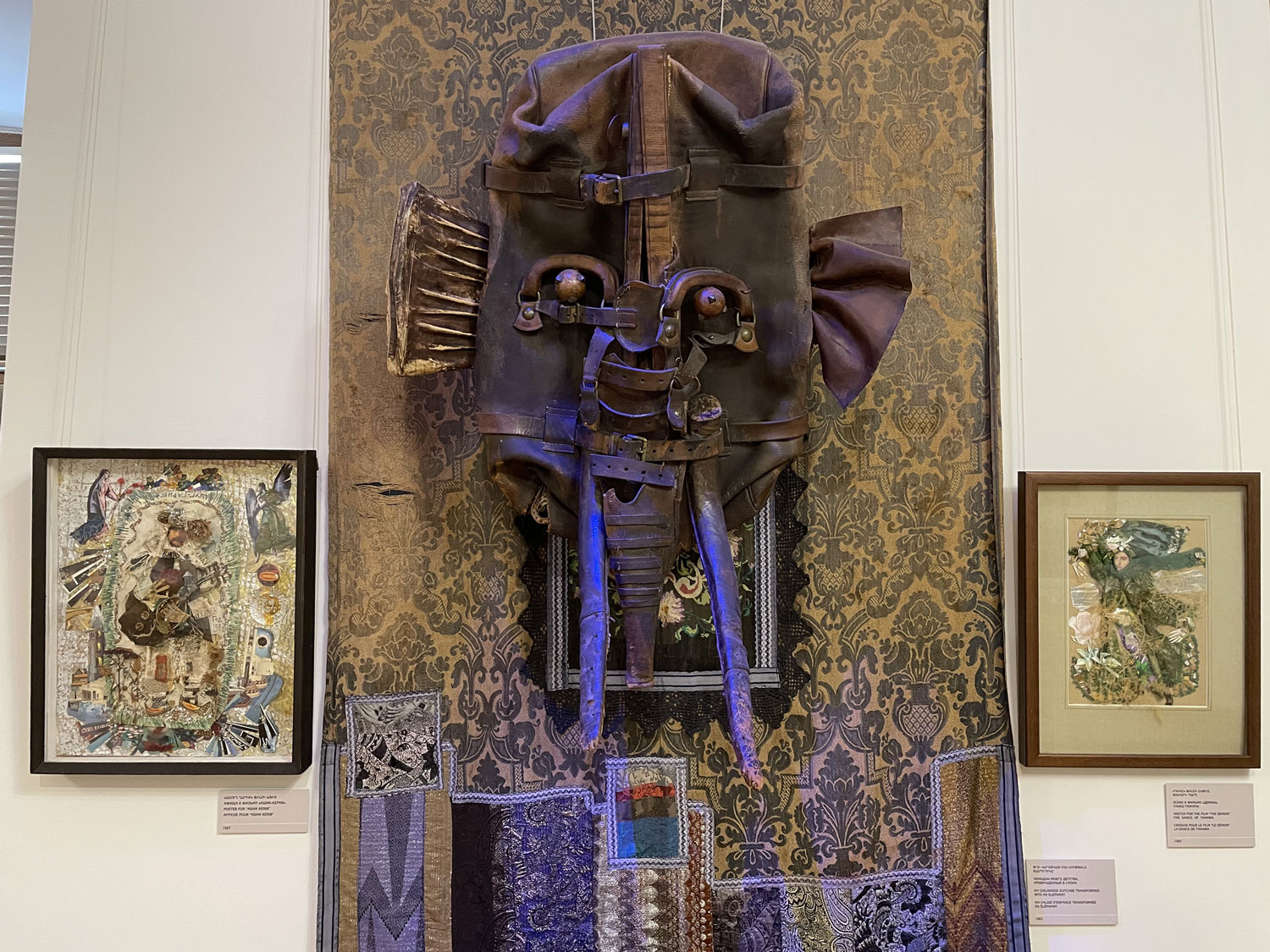
A dozen collages in which hands are placed on the Mona Lisa in various combinations (like, look what I can do).
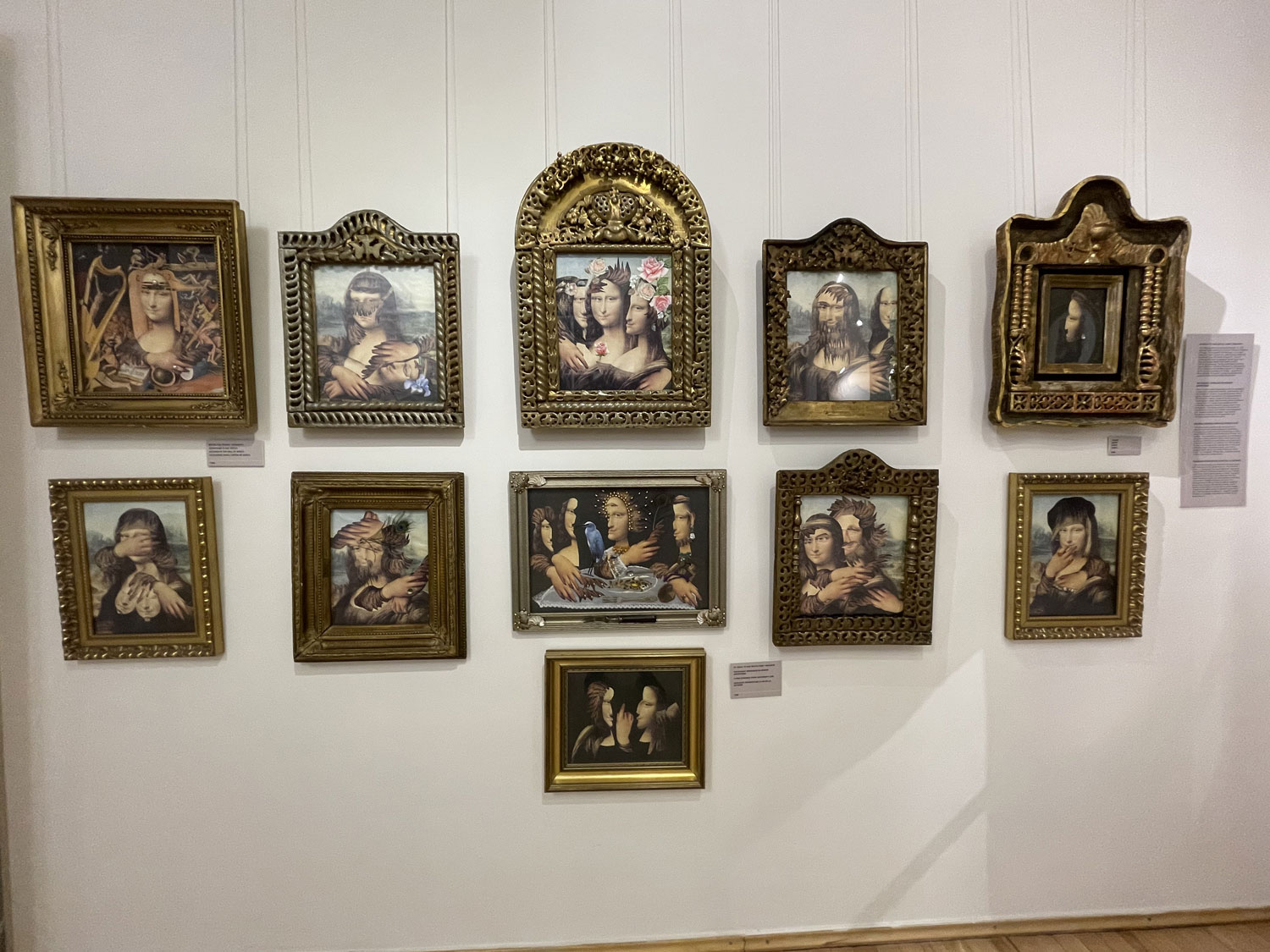
The maestro is surrounded by his beloved junk directly.
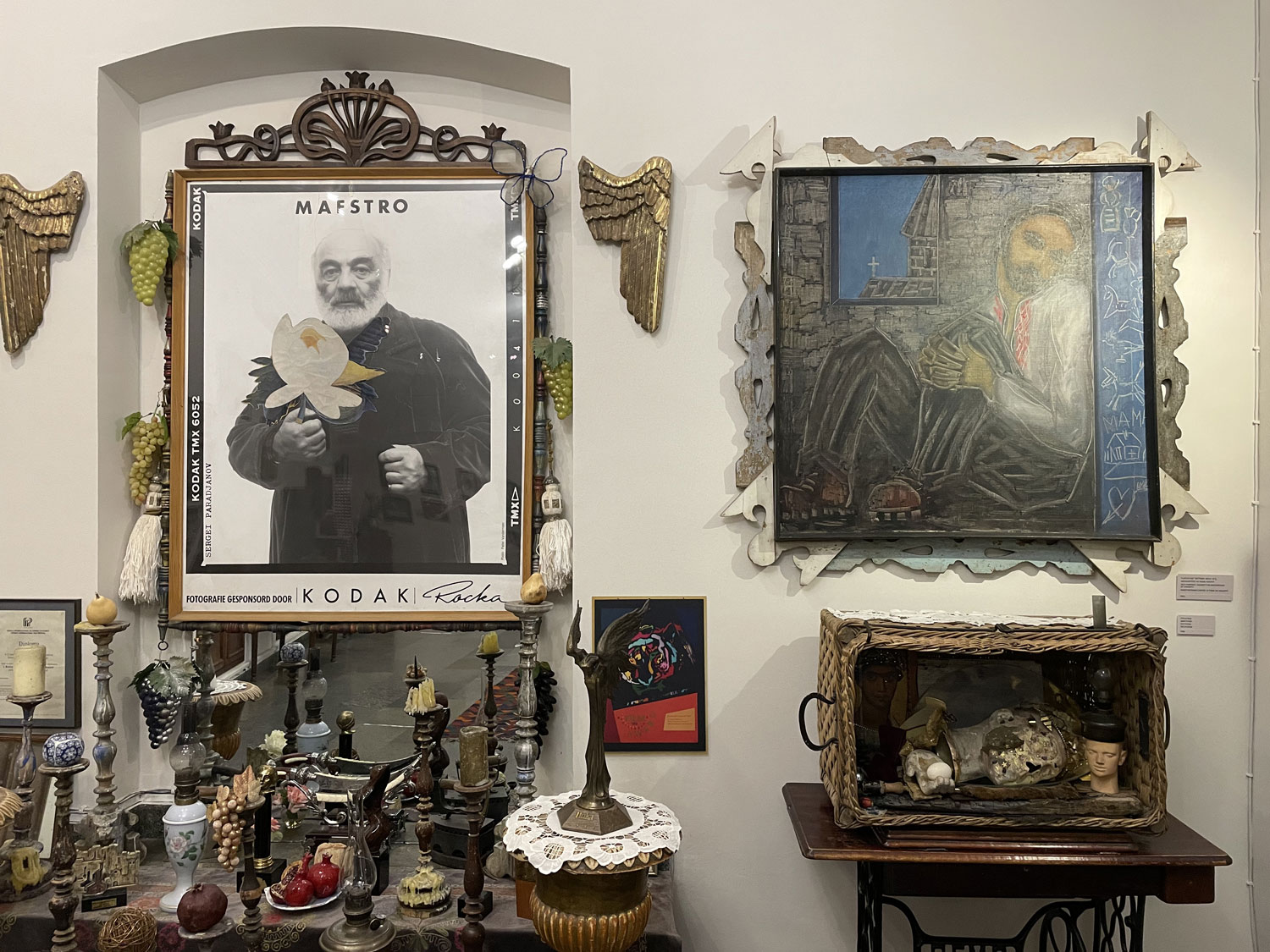
The diagnosis was almost confirmed by the case materials. For some reason, Soviet doctors attributed Parajanov with psychopathic tendencies, but they didn’t diagnose him with his beloved sluggish schizophrenia or recognize him as mentally ill. Strange.
But they imprisoned him for homosexuality and other perversions. Parajanov spent 4 years in prison, and then he was released under pressure from the international intelligentsia.
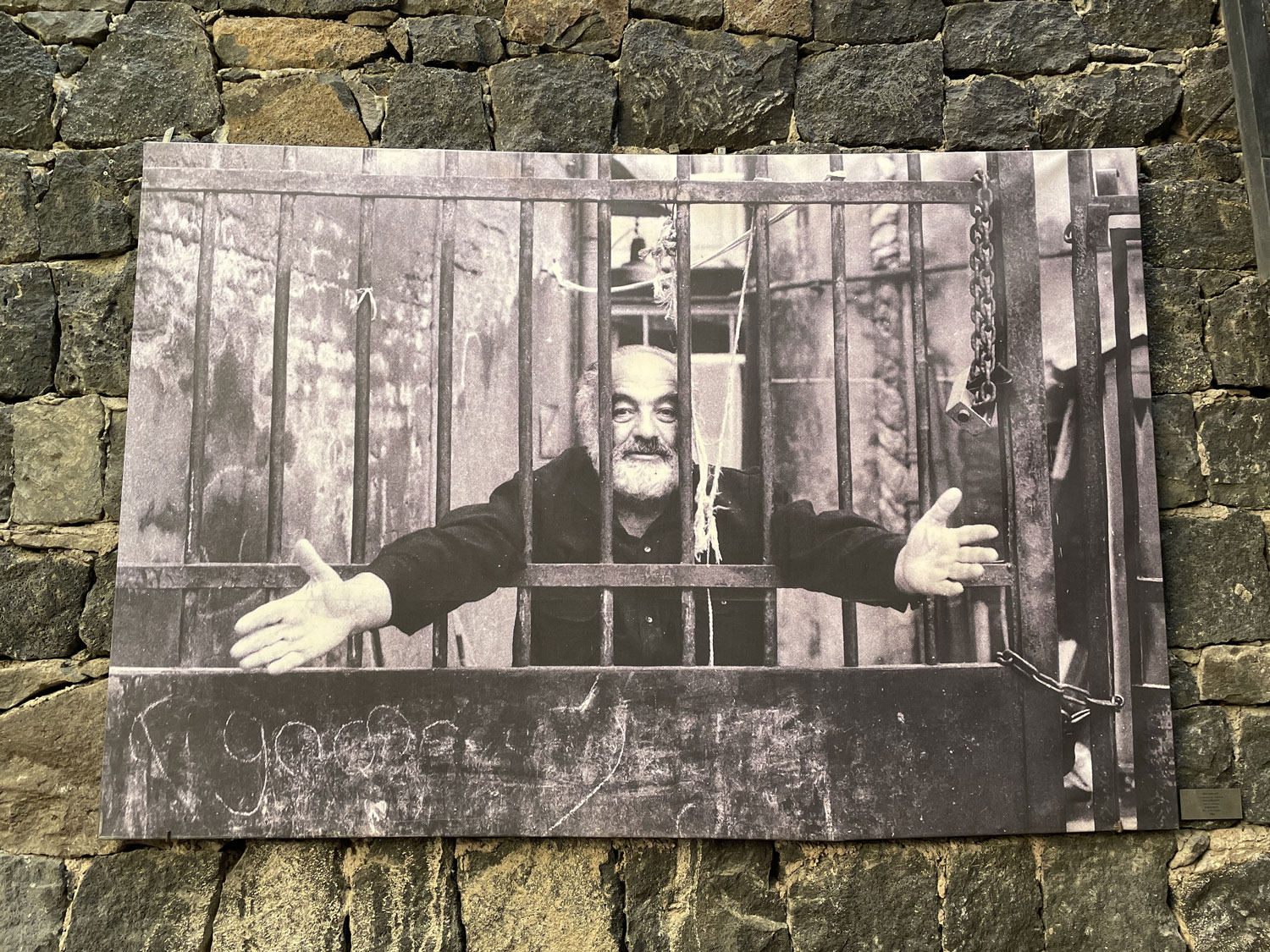
In general, it’s a place for connoisseurs. It’s better to visit the museum of the same Khachaturian. He may be pop, but there is a sense of touching something grandiose.
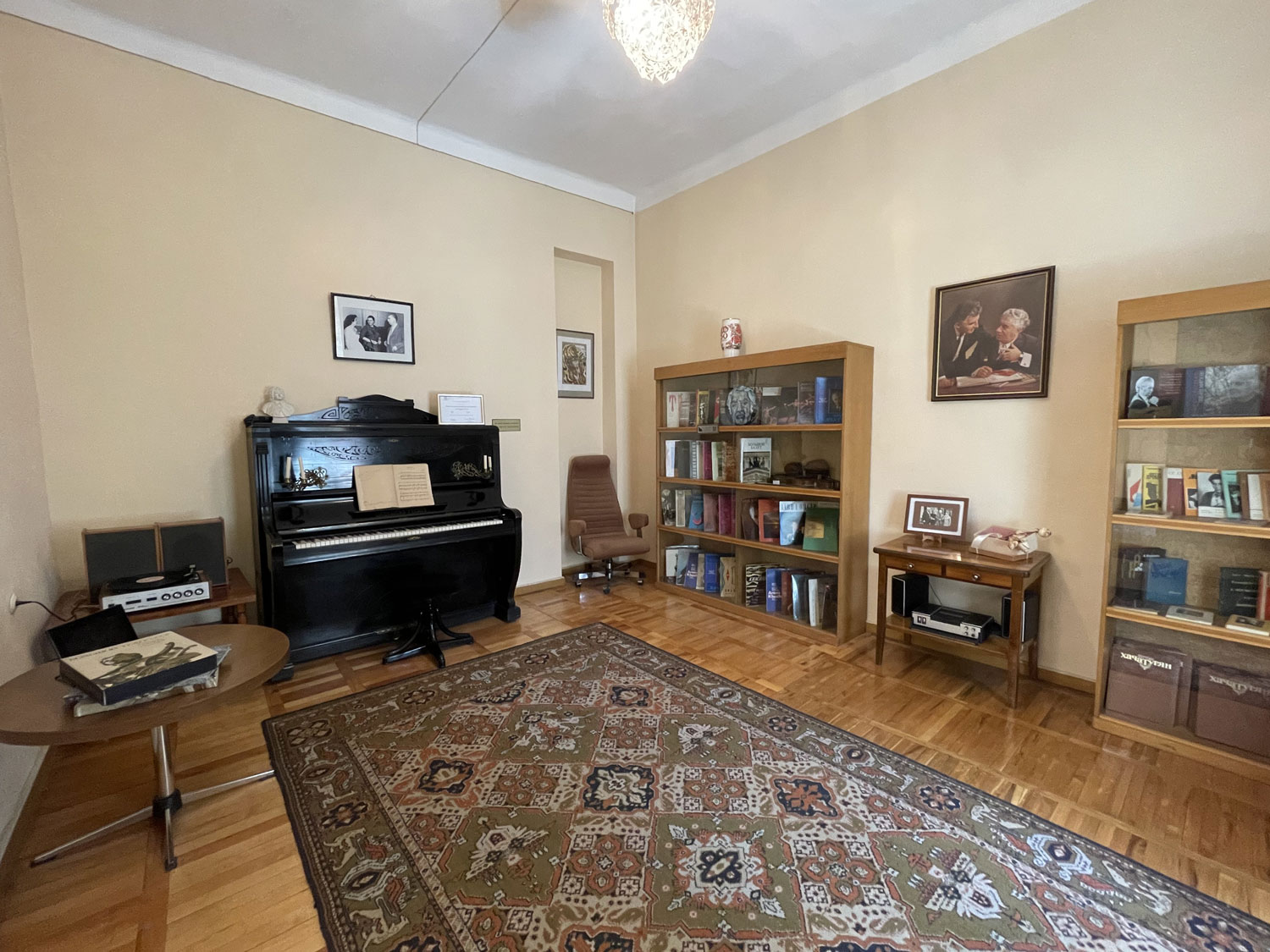
Across the street from the Parajanov Museum is the oldest district in Yerevan called Kond. Kond is where kondovtsy live. Kond is located on a small hill, and that’s where its name comes from: in Armenian, the word means “long mountain.”
The district appeared during the Persian rule, that is, somewhere in the 16th-17th century. Initially, Kond was settled by indigenous Armenians, but gradually they were displaced by other nationalities. When Armenia came under the rule of the Ottoman Empire, Turks began to settle in the area.
In the early 20th century, Turks began to gradually move to Turkey and Azerbaijan, and Armenians began to live in Kond again, buying up abandoned houses for next to nothing.
To be honest, the streets of Kond don’t look like Armenian ones. It’s more like the Middle East.
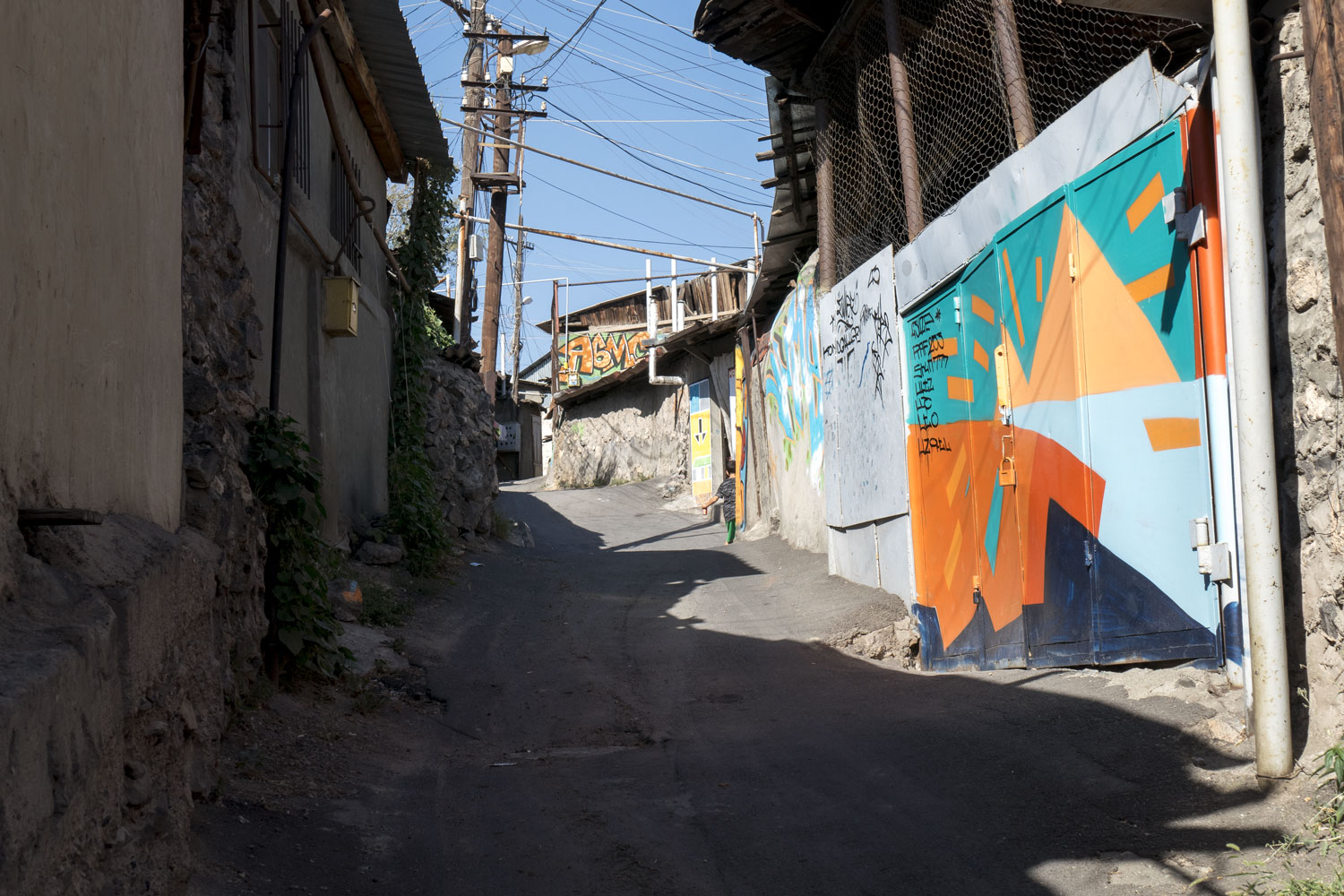
Kond looks scary, but it’s actually a very touristy area. Good and responsive people live here who can easily invite you for a tour of their home. For example, this house, according to the owner, was built in the 17th century and then bought by her family. The Islamic arch above the window hints that the owner is not lying.
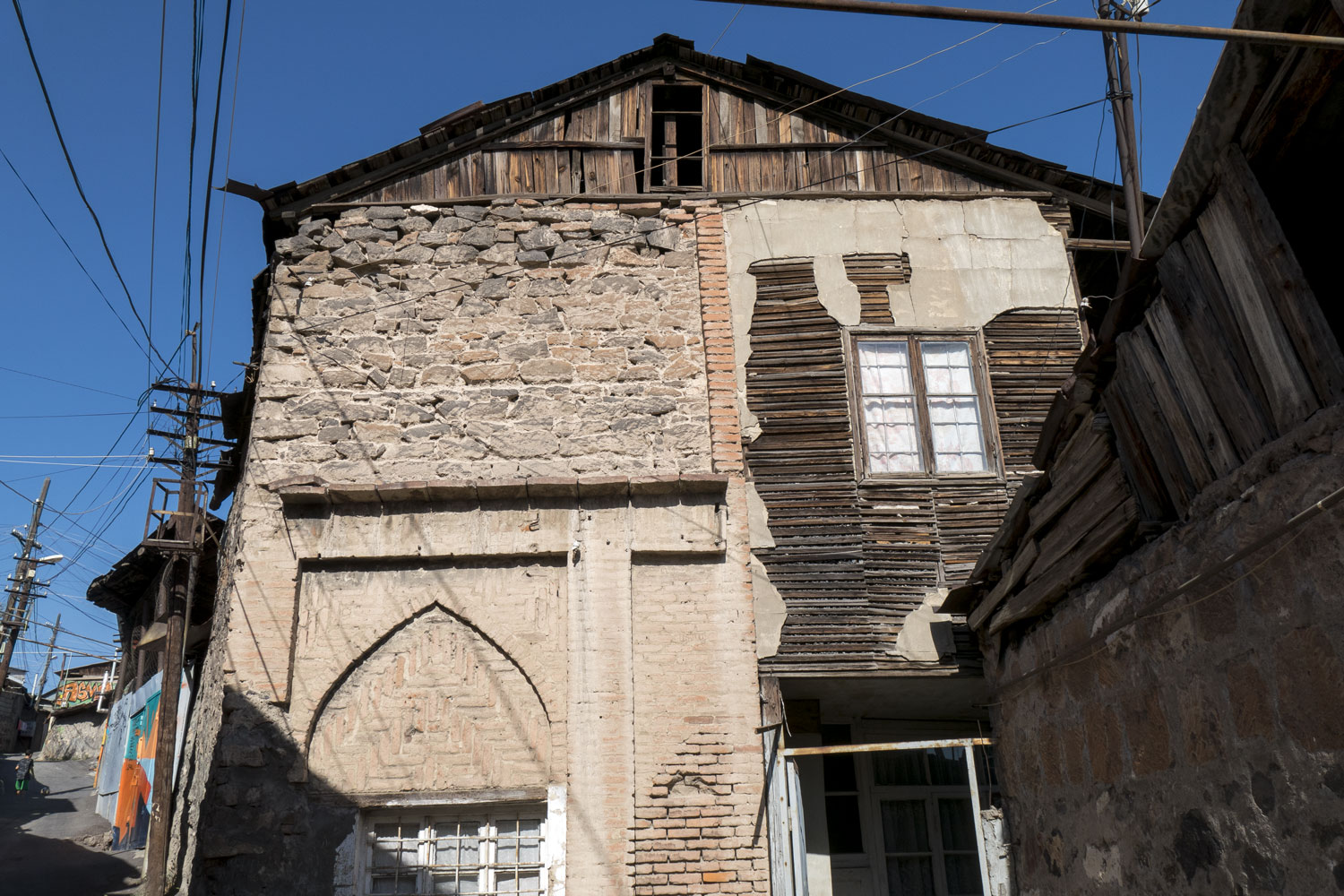
At the intersection, children are playing soccer. The shot is completely Middle Eastern.
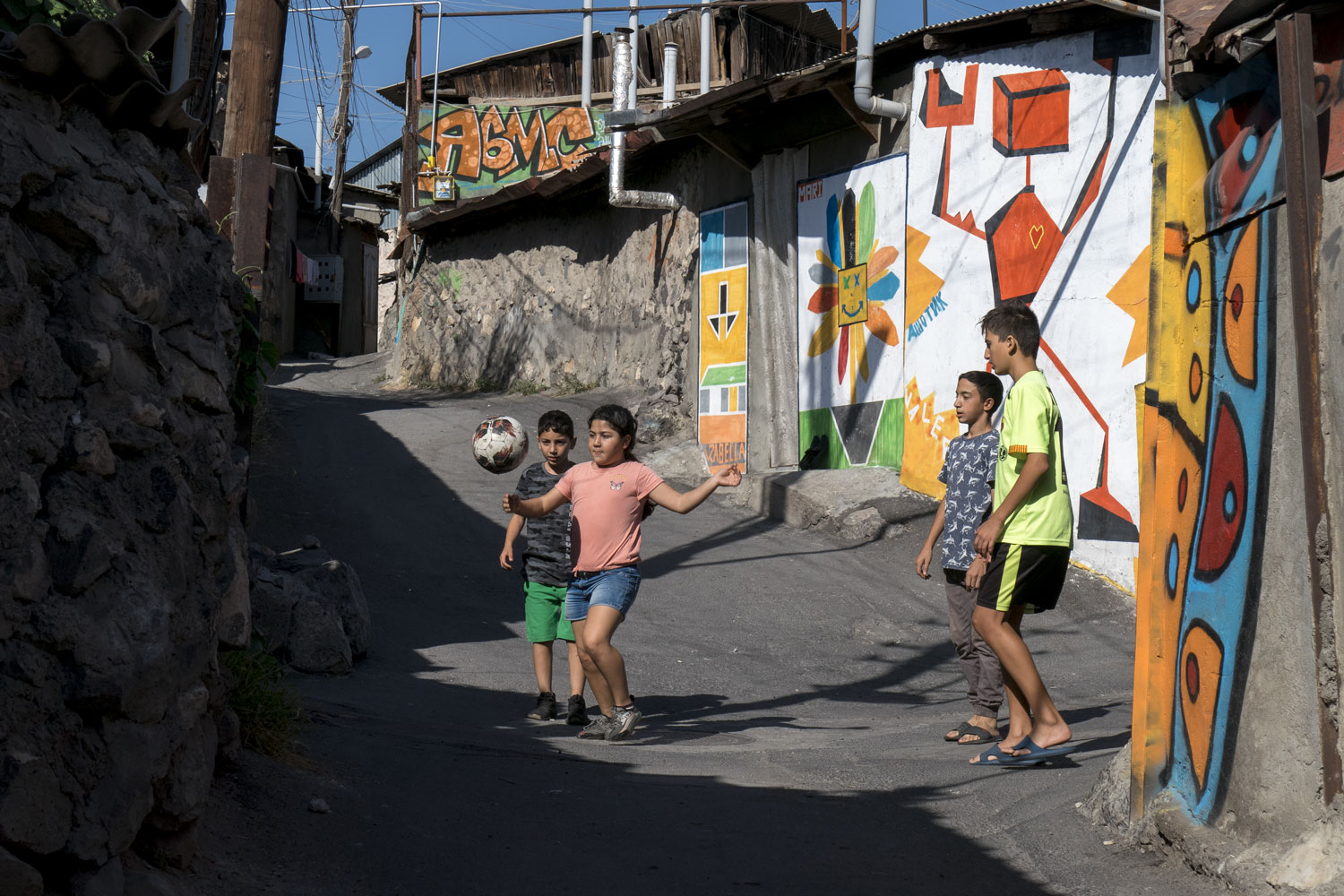
Slums!
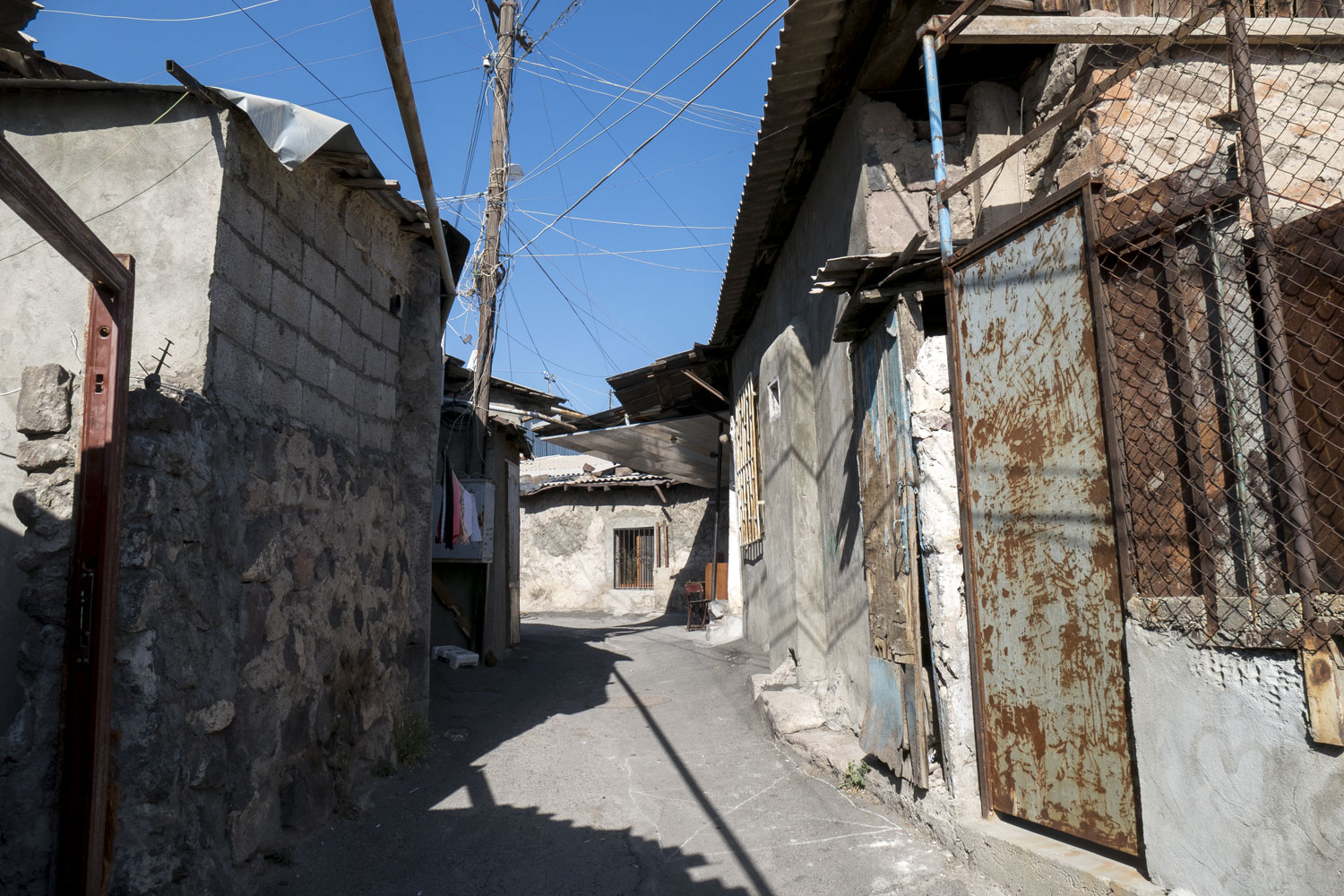
Unfortunately, Kond is a very small district. You can go around it in half an hour. There are no sights to be found in it.
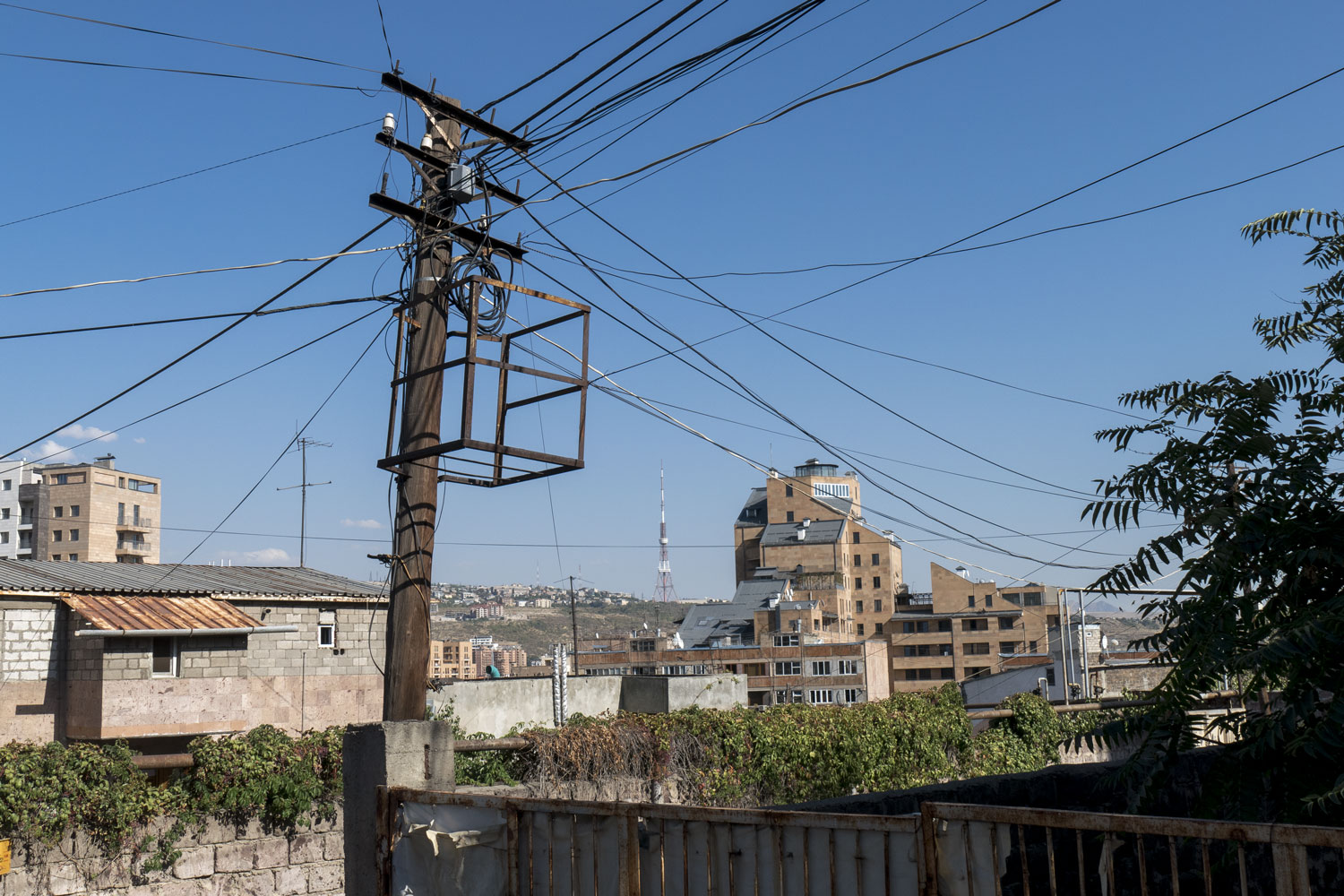
The Kond district is connected to the coolest place in Yerevan — a pedestrian tunnel.
The hill on which Kond is located obstructed the passage from the city center to the river and several important objects on its banks. To get from one part of the city to another, you had to either climb up the hill and then descend or bypass this hill.
The authorities of Yerevan decided to deal with this problem. Thus, the absolutely coolest urban object was born — a giant pedestrian tunnel between two parts of the city.
The tunnel was carved directly into the rock on which Kond is located. More precisely, from the edge of this rock where the district ends. The length of the tunnel turned out to be 460 meters. Initially, two tunnels were made, but now the second one is blocked off.
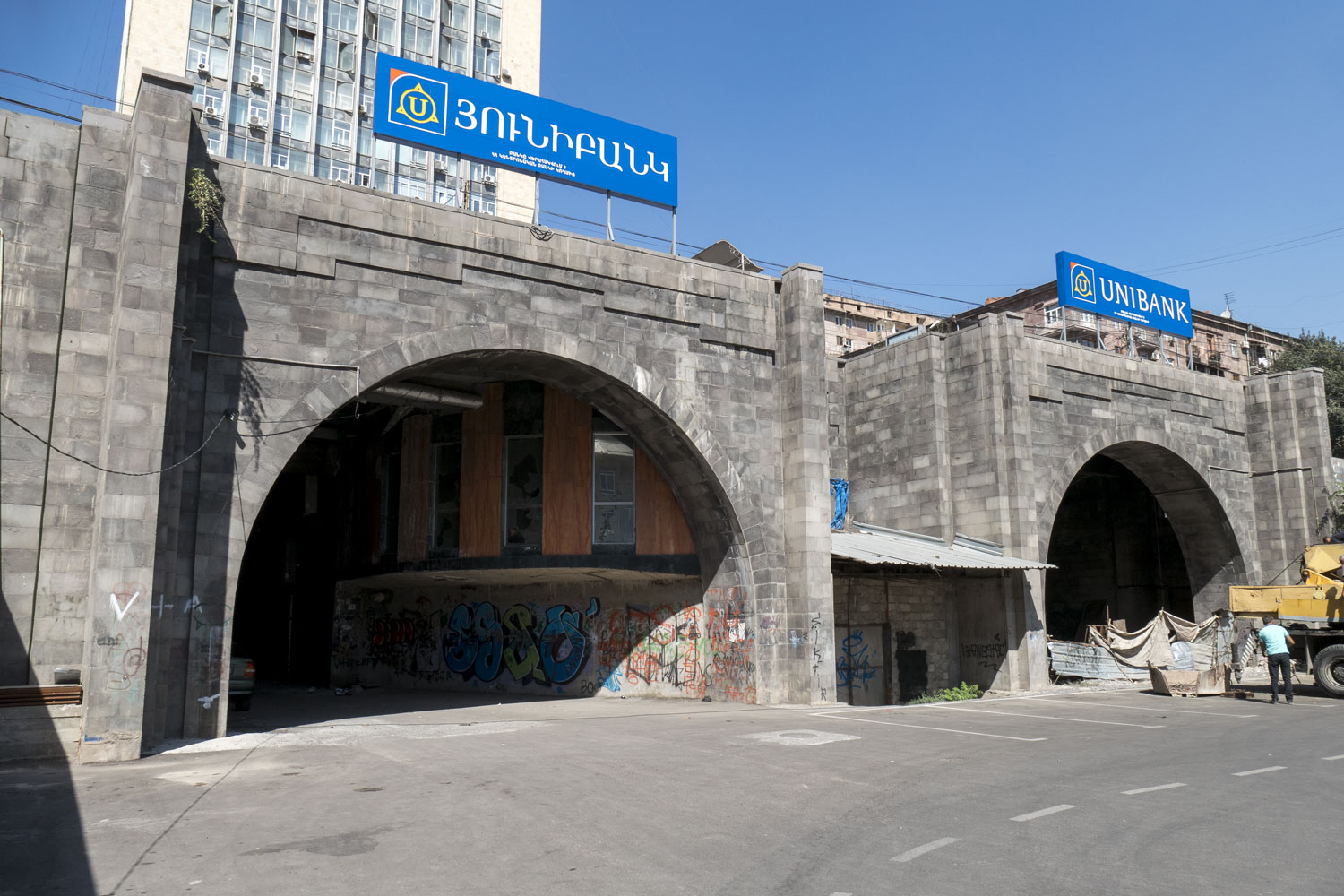
Here, for the first time, I felt the meaning of the expression “to see the light at the end of the tunnel”.
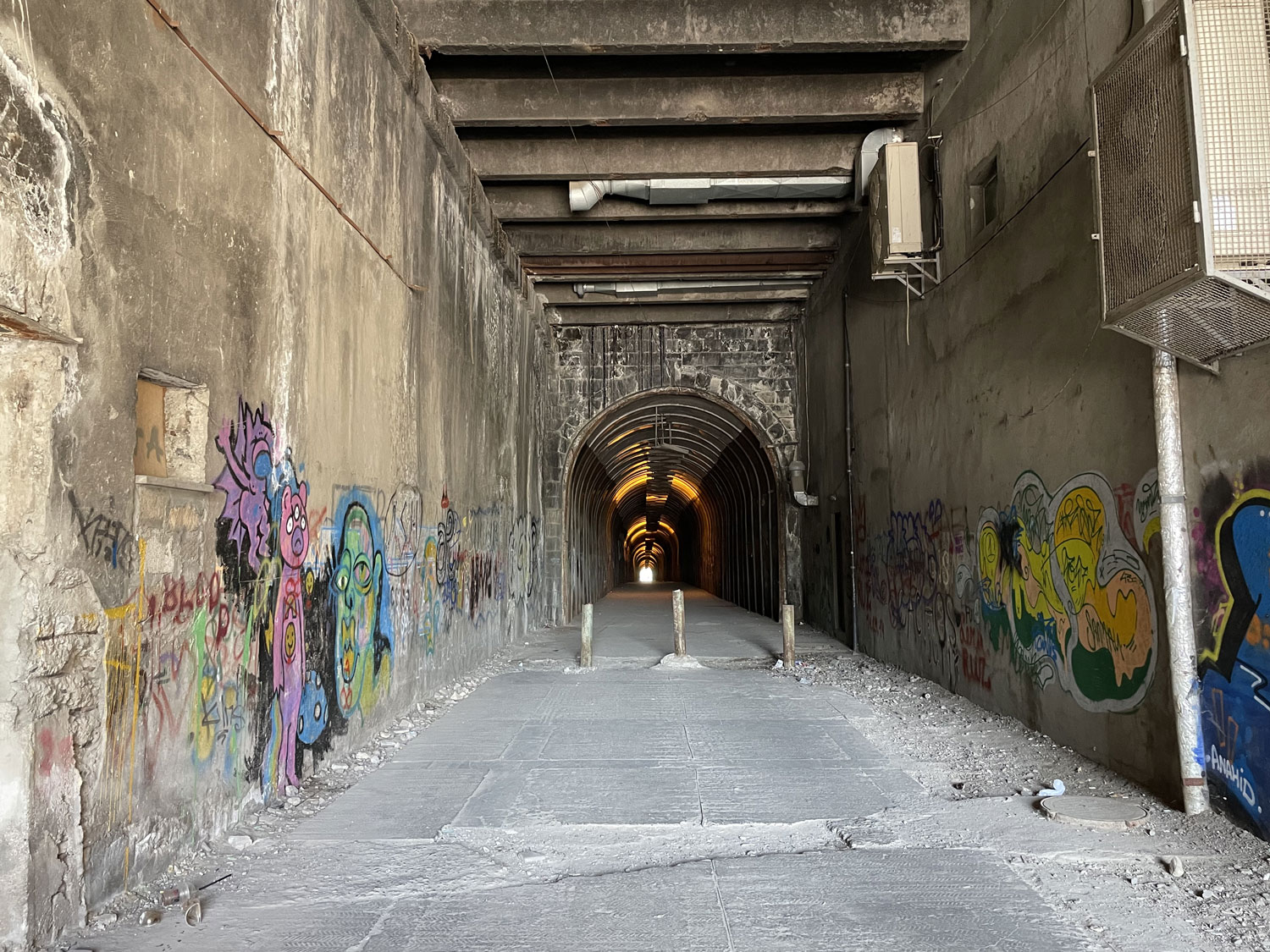
The tunnel is absolutely insane. Long as...
The walls for every half a kilometer are covered with graffiti, which is just as helpless as the tunnel itself is cool.
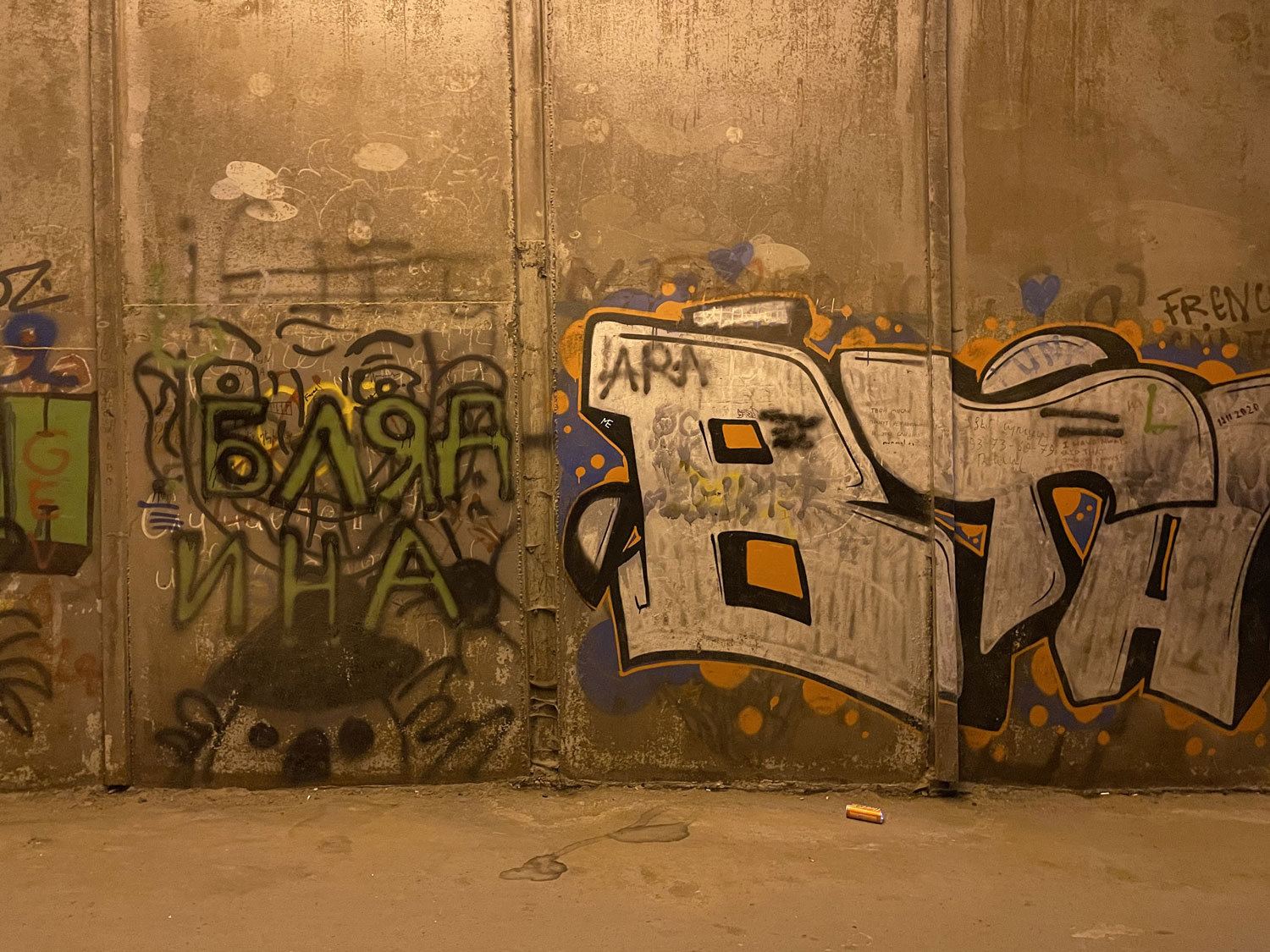
Although a pleasant yellow light is on all along the tunnel, it’s still quite creepy even during the day. Walking through it at night is a stupid idea. They say that in the second blocked-off tunnel, pubescent teenagers undergo initiation into Armenian knights.
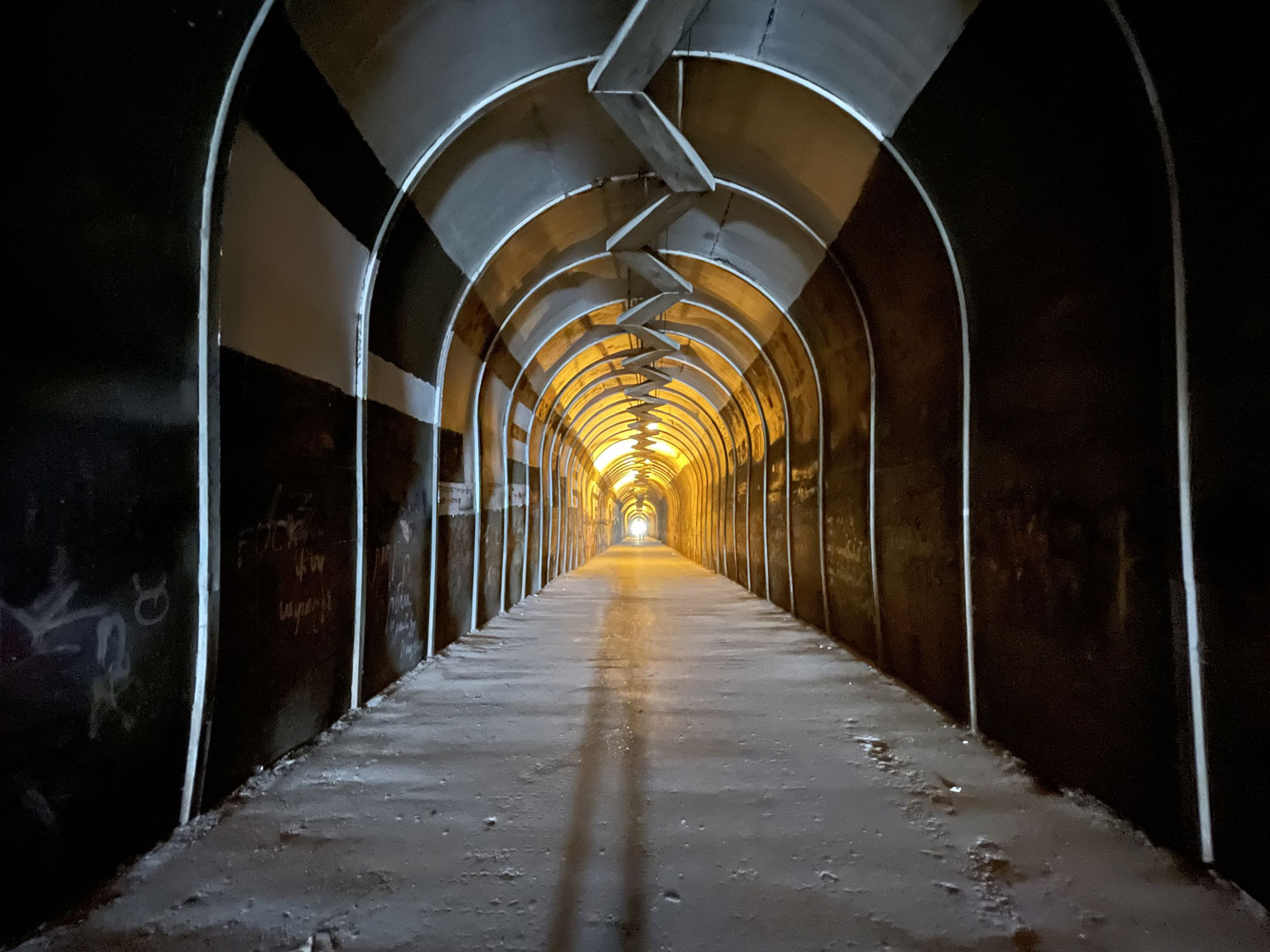
On the other side, the tunnel emerges from the rock onto the road.
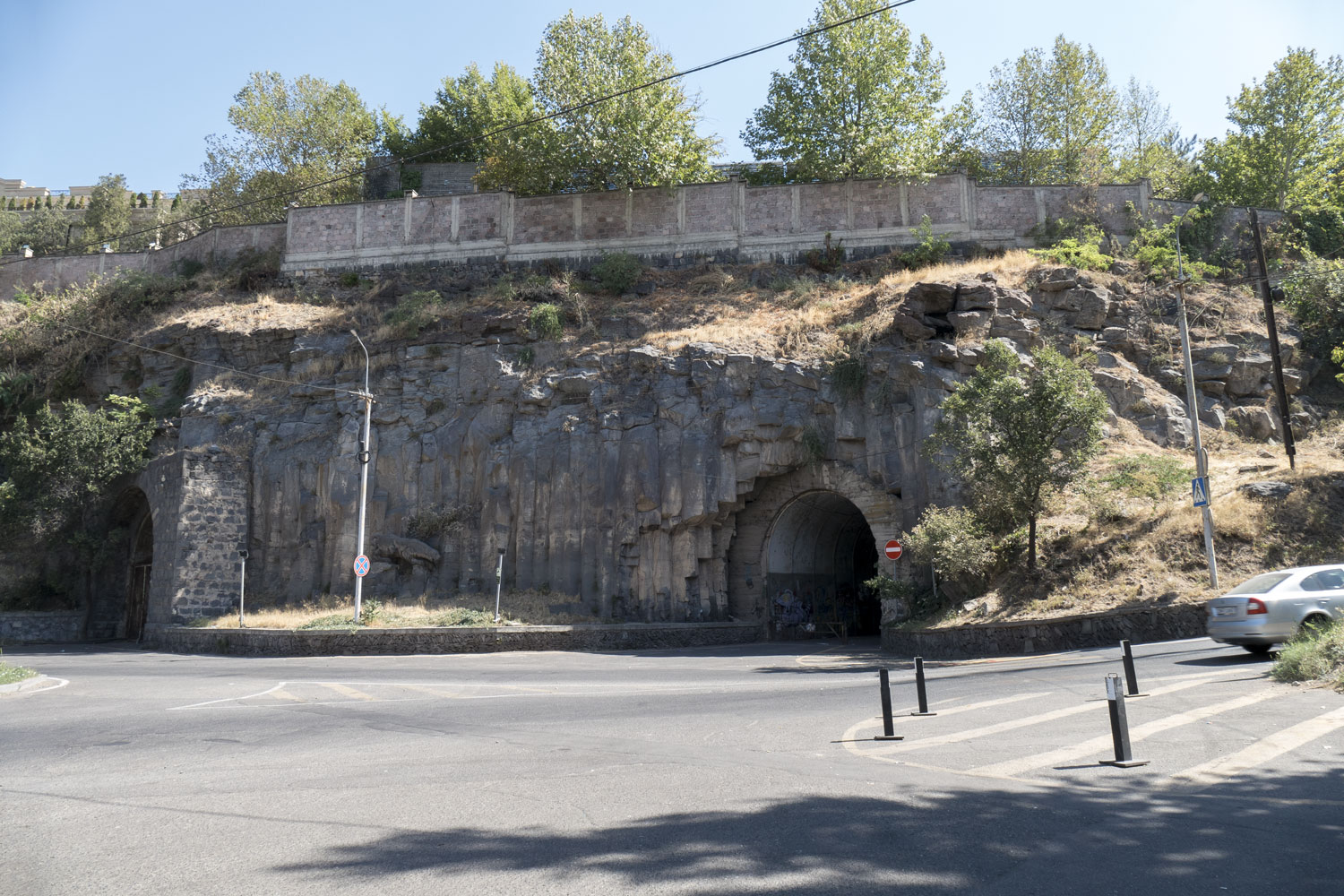
Across the road is an abandoned amusement park, whose entrance ensemble resembles a Stalinist palace.
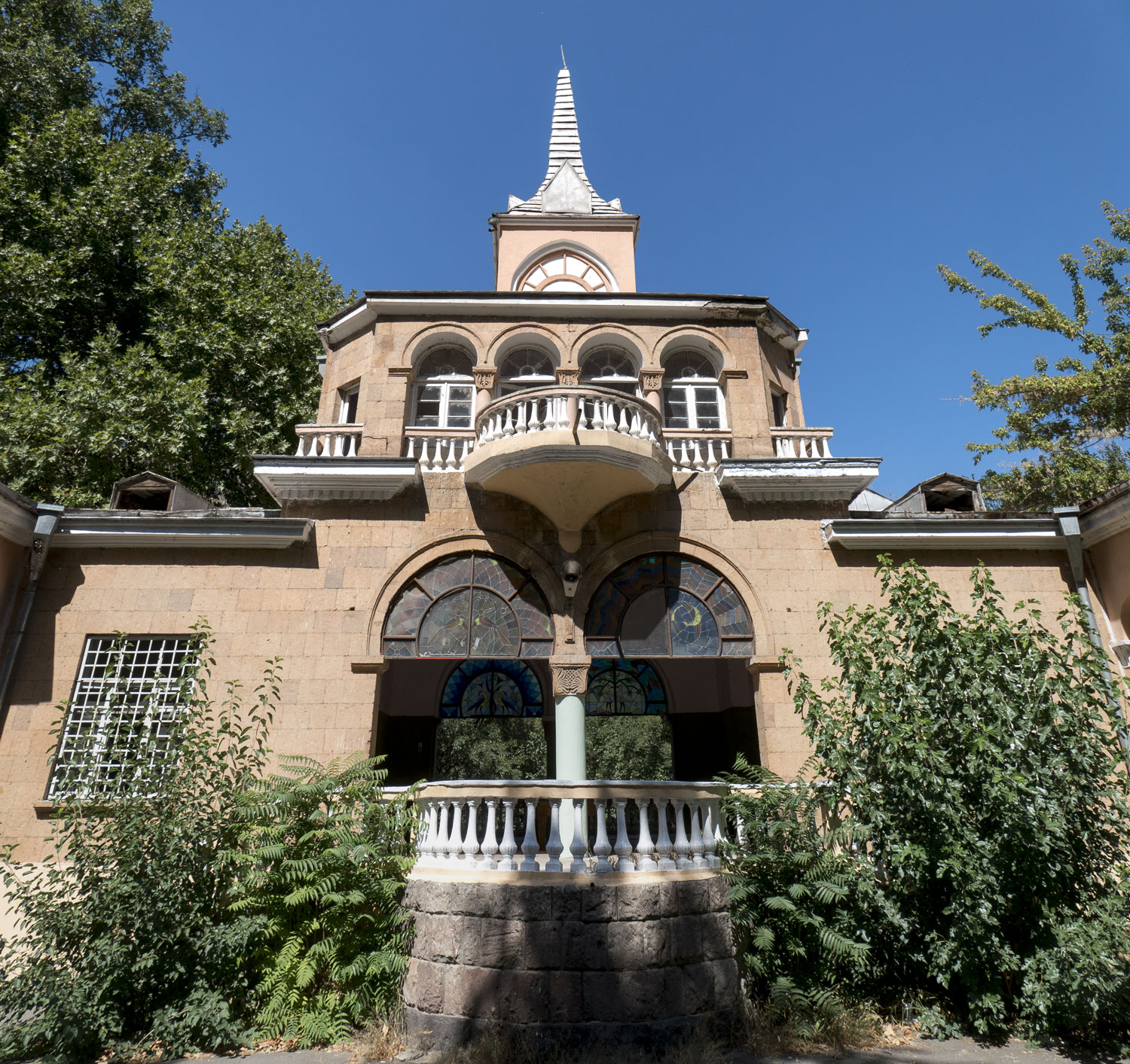
The amusement park consists of only one attraction: a children’s railway. Actually, the palace is a passenger station built exclusively for children to feel like real train passengers.
The railway was built in 1937 at the initiative of the first secretary of the Communist Party of Armenia, Agasi Khandjian. Of course, after the collapse of the USSR, the railway fell into disrepair.
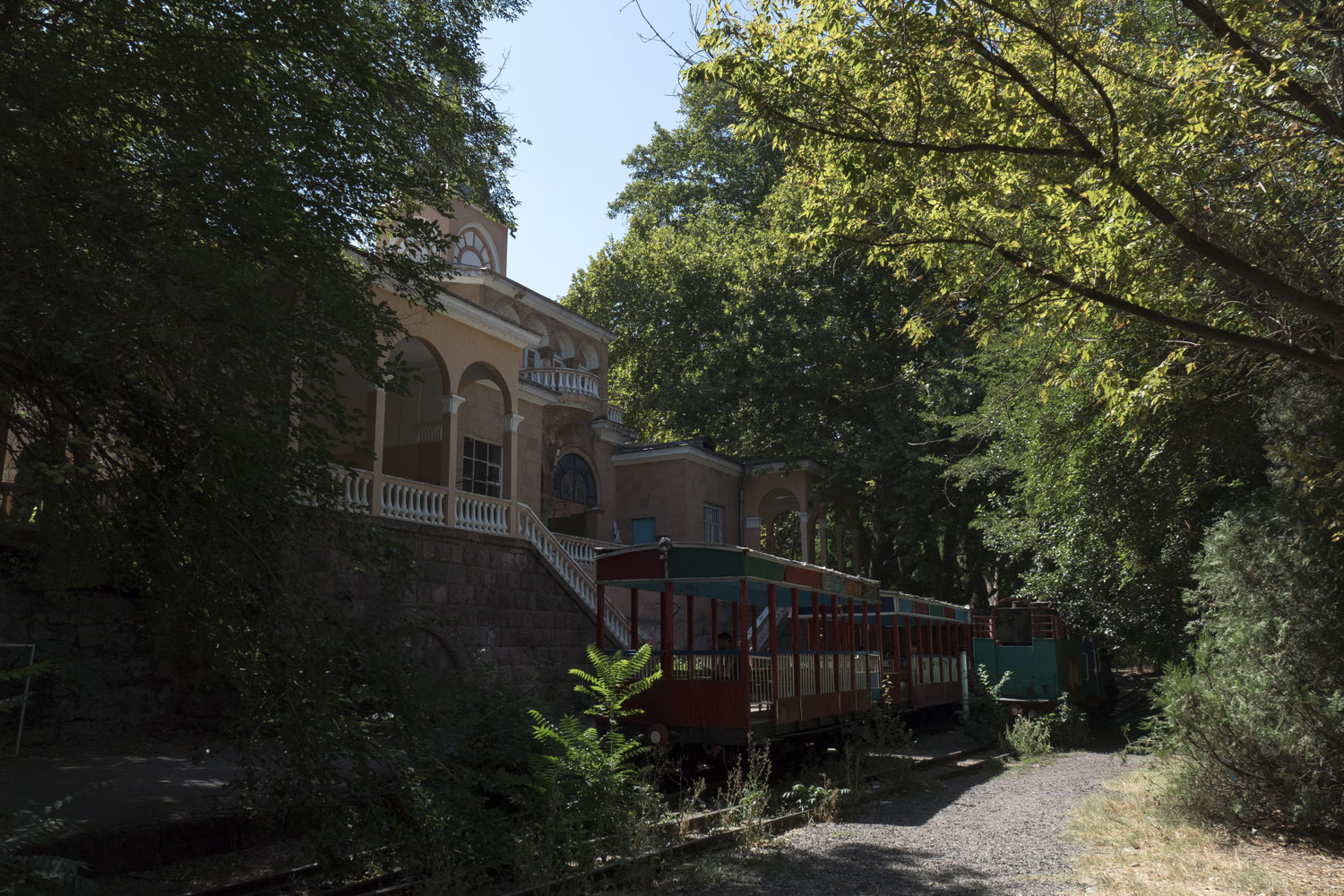
Toy trains are still standing on the railway, and a couple of them have even been preserved quite well. Mothers with children still come here during the day. You can climb into the train and see how it’s made.
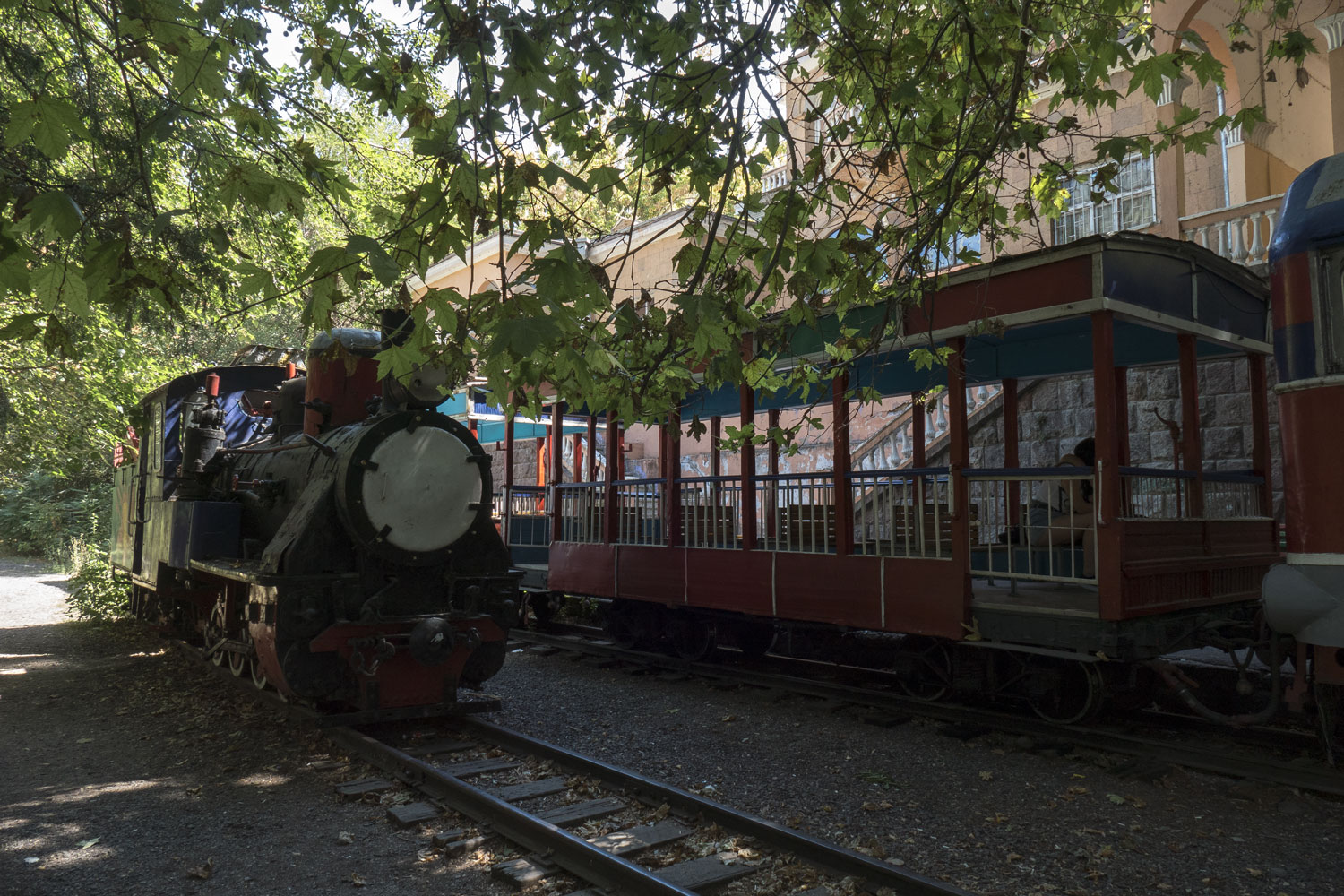
In the evening, the place is absolutely creepy, people smoke weed and pee in the corners.
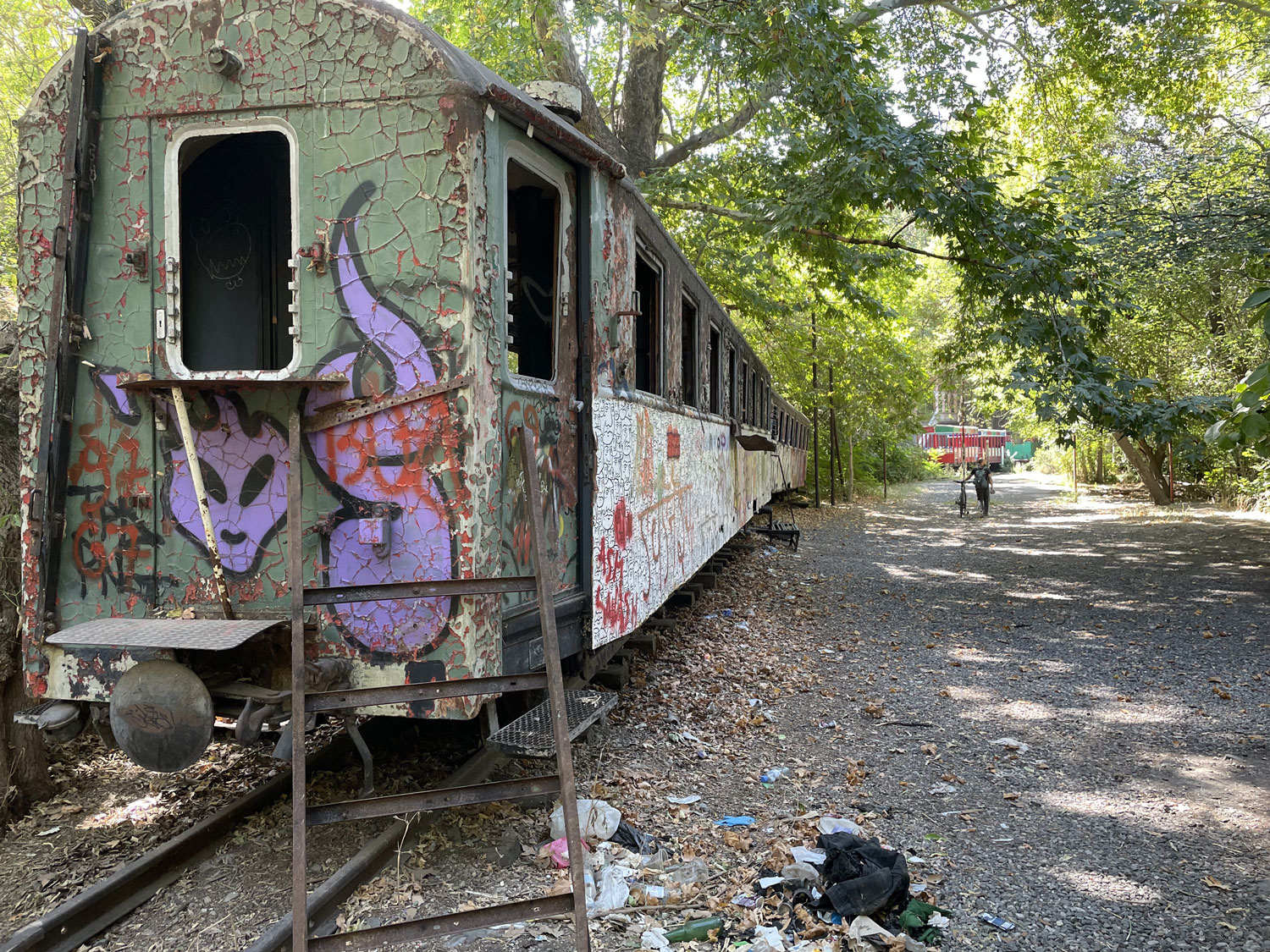
The one-kilometer-long railway runs along the small Razdan River. Just beyond the river begins a large hill, on top of which is an exhibition complex, a monument, and the Armenian Genocide Museum. The best view of Yerevan opens up from here. Unfortunately, the city is not interesting at all from a height.

If you bypass the hill and descend from the other side back into the city, you will come out right at the end of the children’s railway. That’s how long it is.
Ironically, Ararat — the largest ethanol-based hard drug manufacturing plant in Europe, known as “cognac” among drug addicts' slang, is located here.
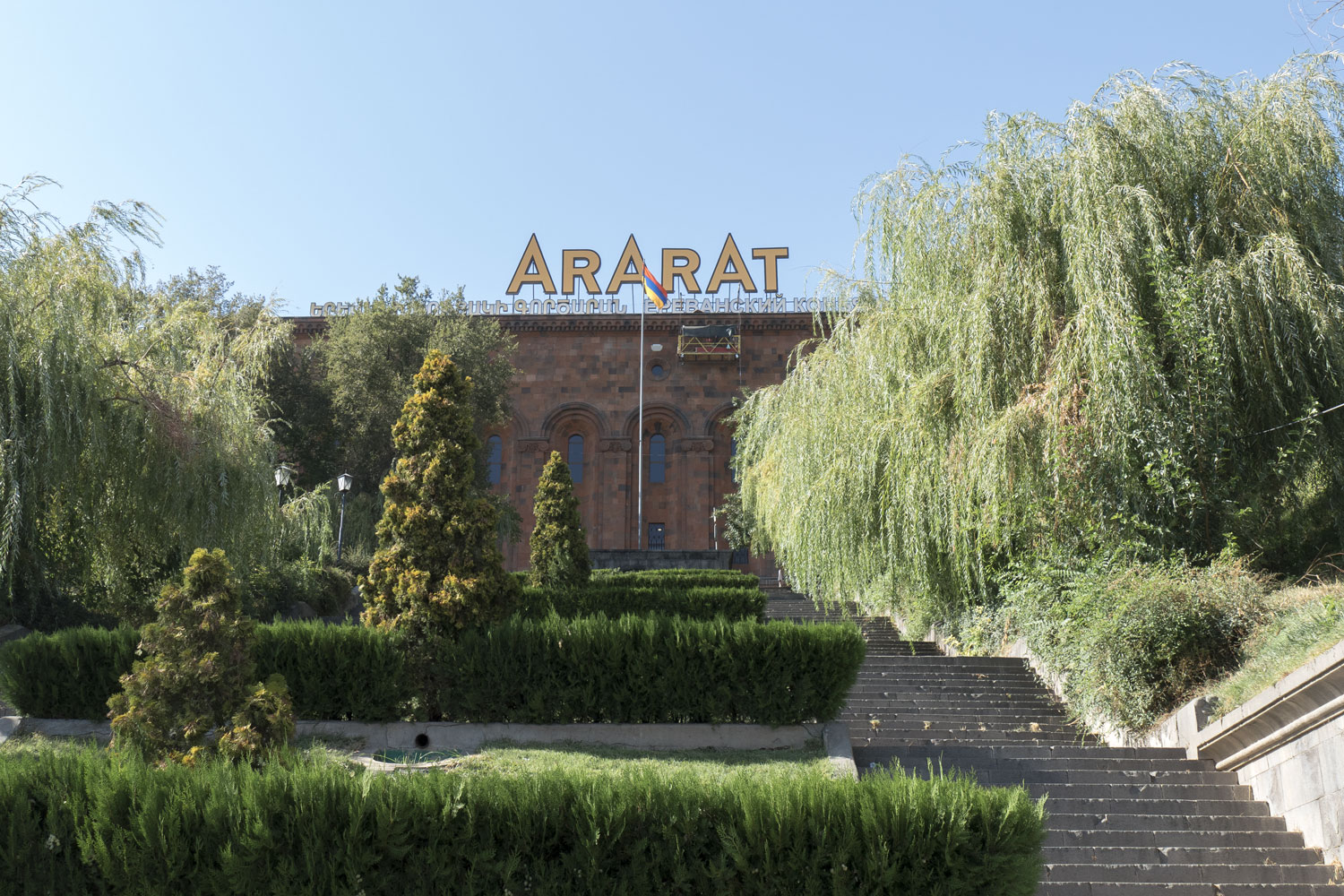
Opposite stands another plant — the “Noah” brand. No, it’s not against the background of Ararat.
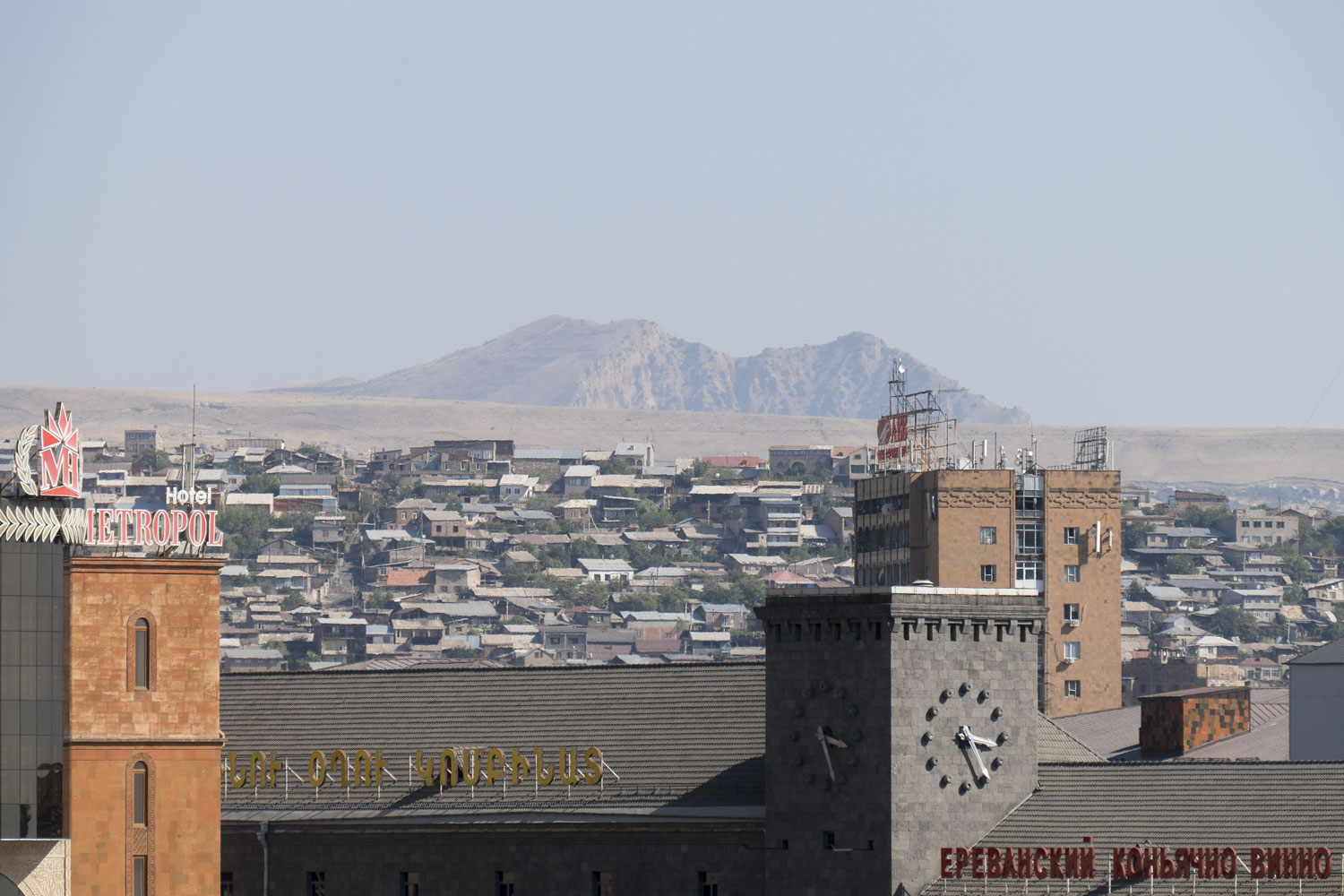
Let’s use the metro and return to the city center.
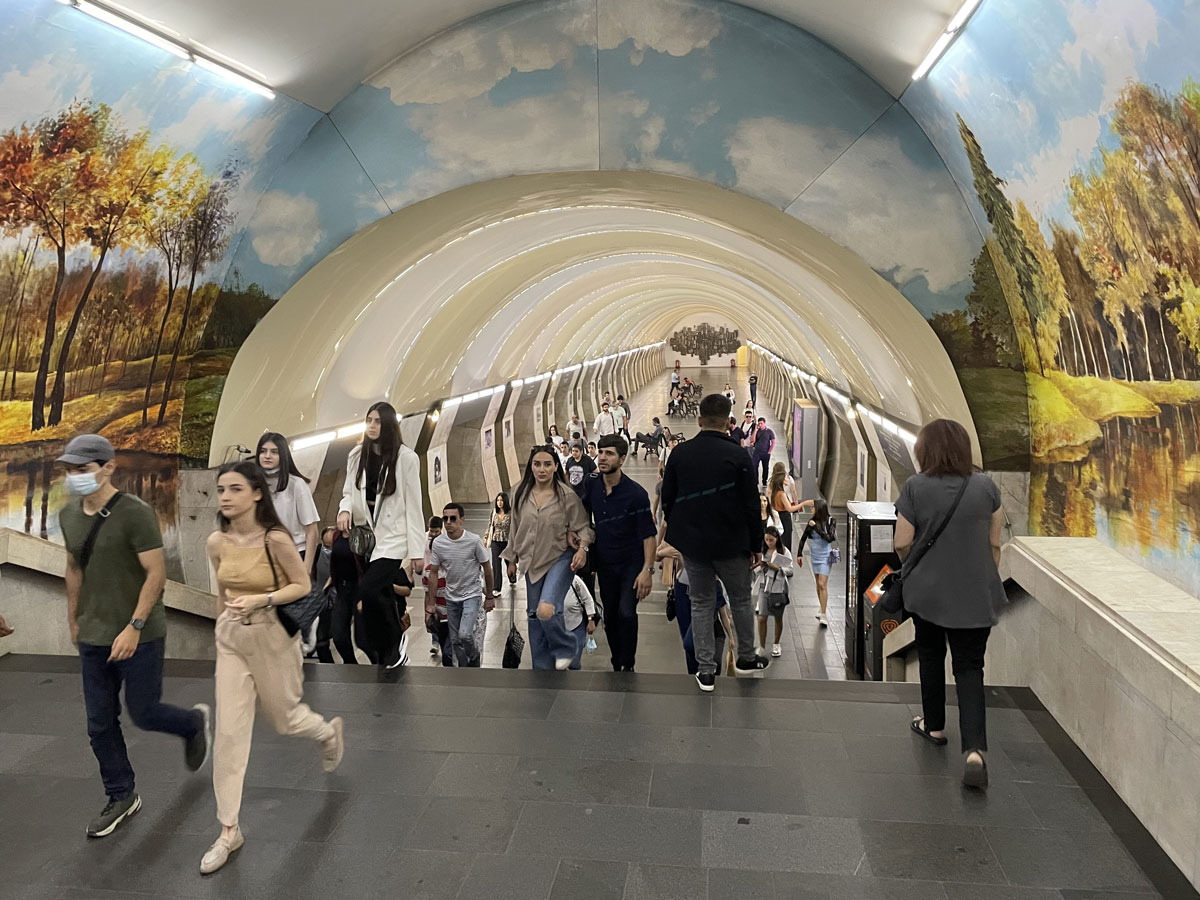
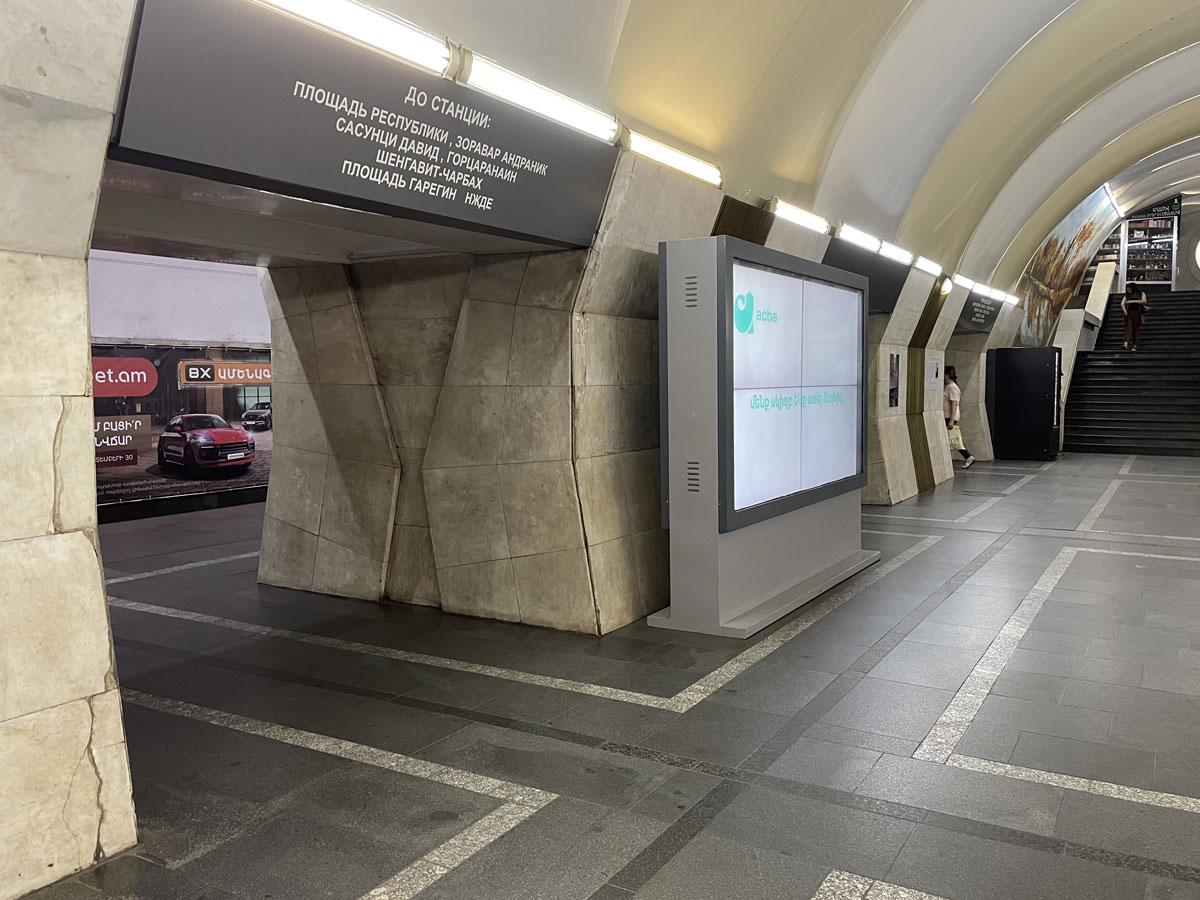
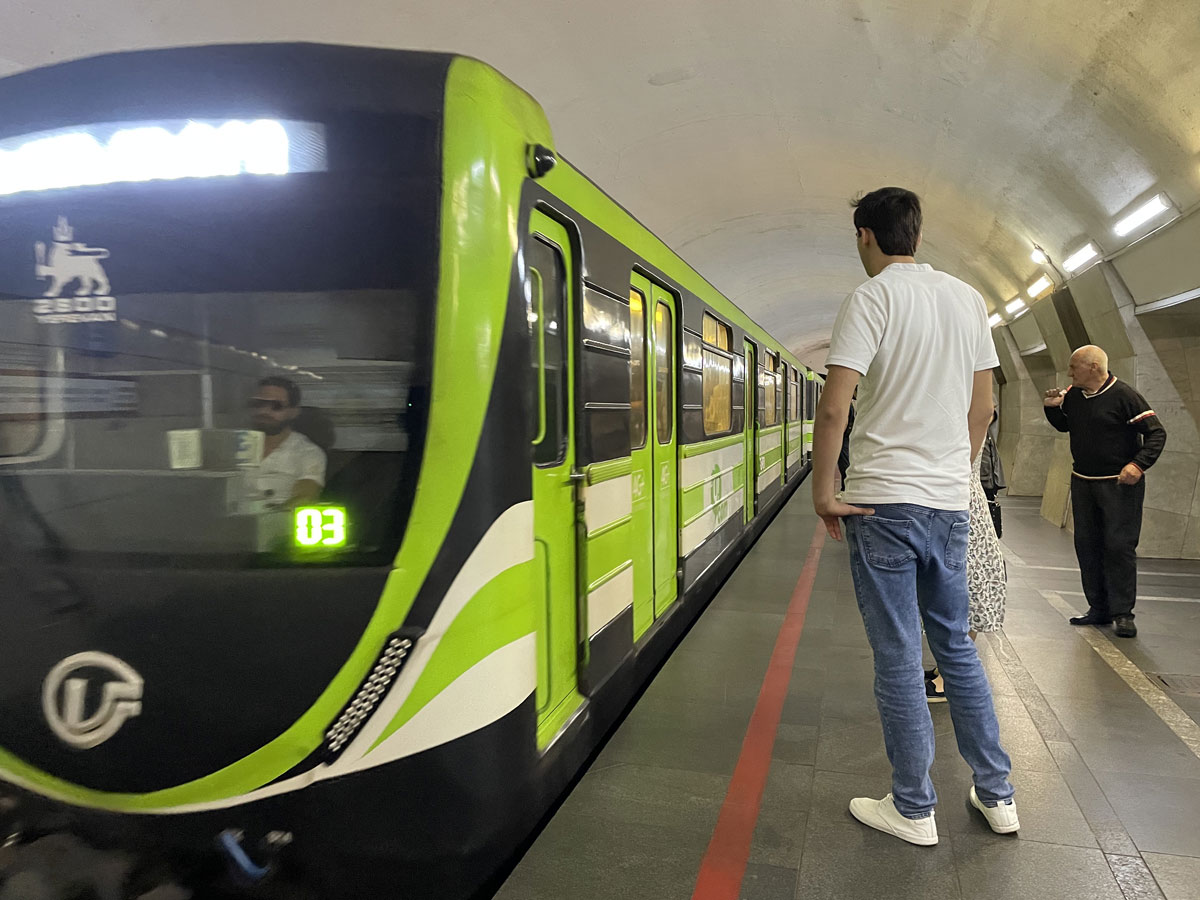
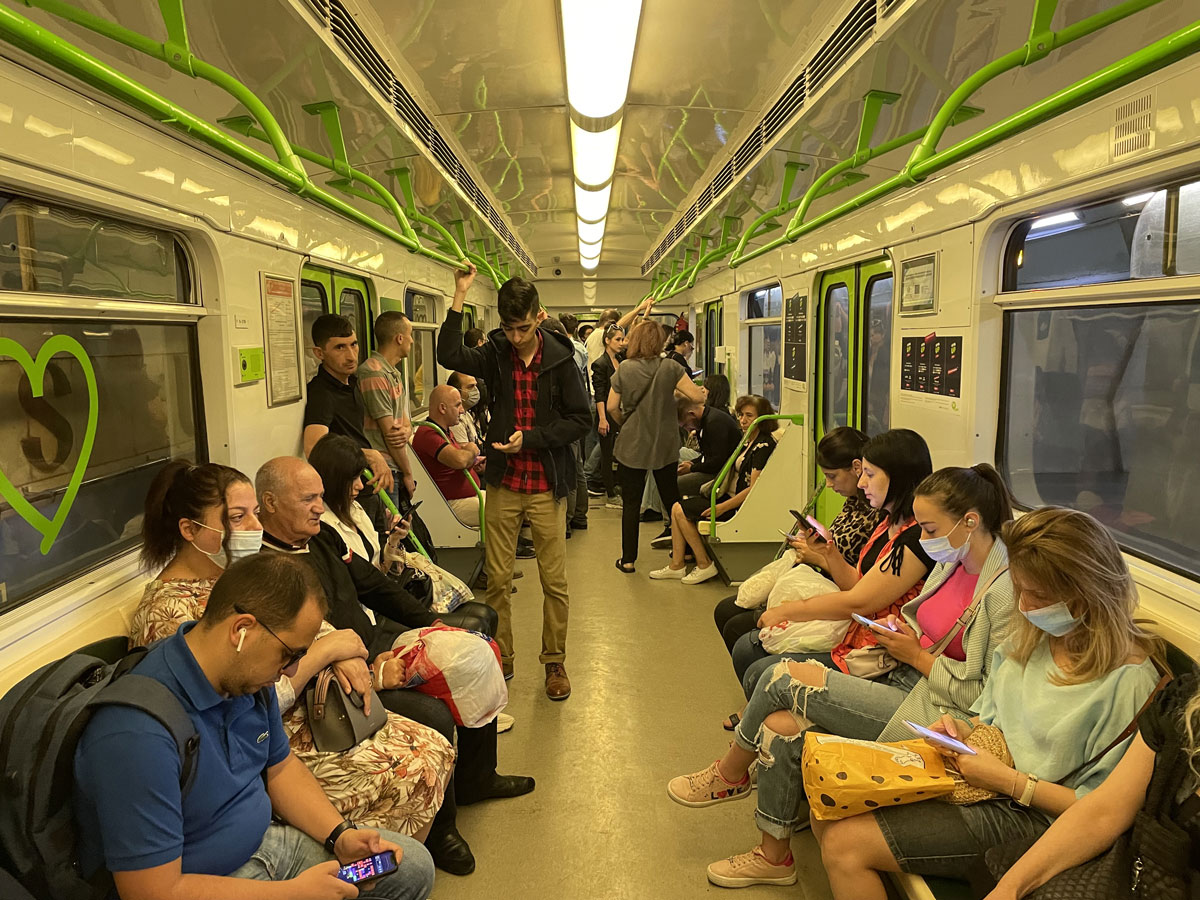
When I was planning to go to Armenia, everyone told me that there are no problems with eating delicious food in Yerevan. Well, I don’t know. There are only about five decent restaurants in the whole city. During the day it’s okay, but in the evening you need to book a table in advance.
Everyone unanimously recommends the “Lavash” eatery. In general, the dolma here is not bad. But the Armenian soup “spas” is served monstrously salty. Fortunately, the staff turned out to be friendly: they quickly replaced the dish with khinkali, which you can’t find with lamb throughout Armenia. And what are khinkali without lamb? Anything but khinkali.
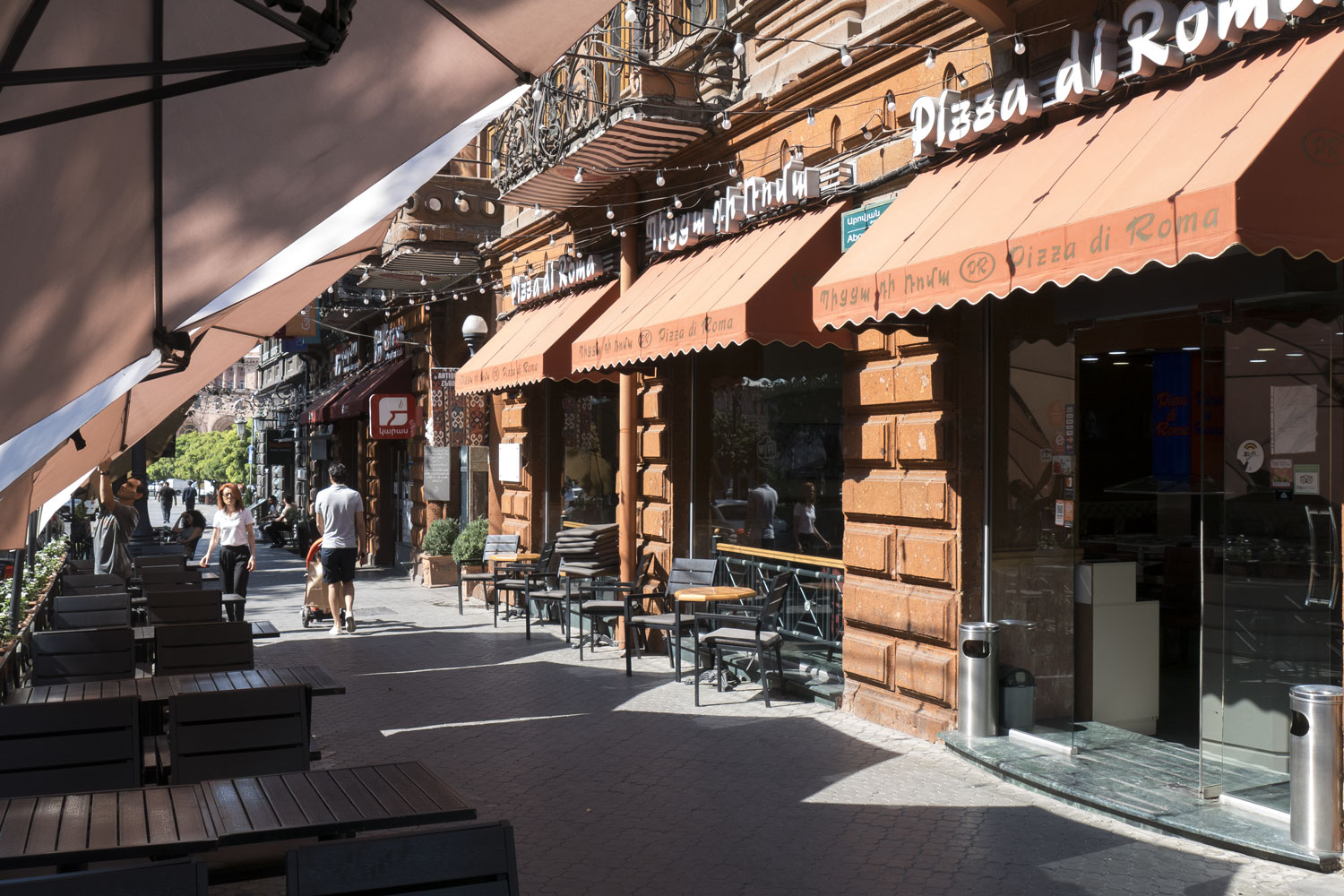
In Moscow, you can get lamb khinkali in any teahouse. But in Yerevan, the food is absolutely terrible. Everything is oversalted, they eat bread tons, and there are so few decent cafes in the city that there are queues in the evening.
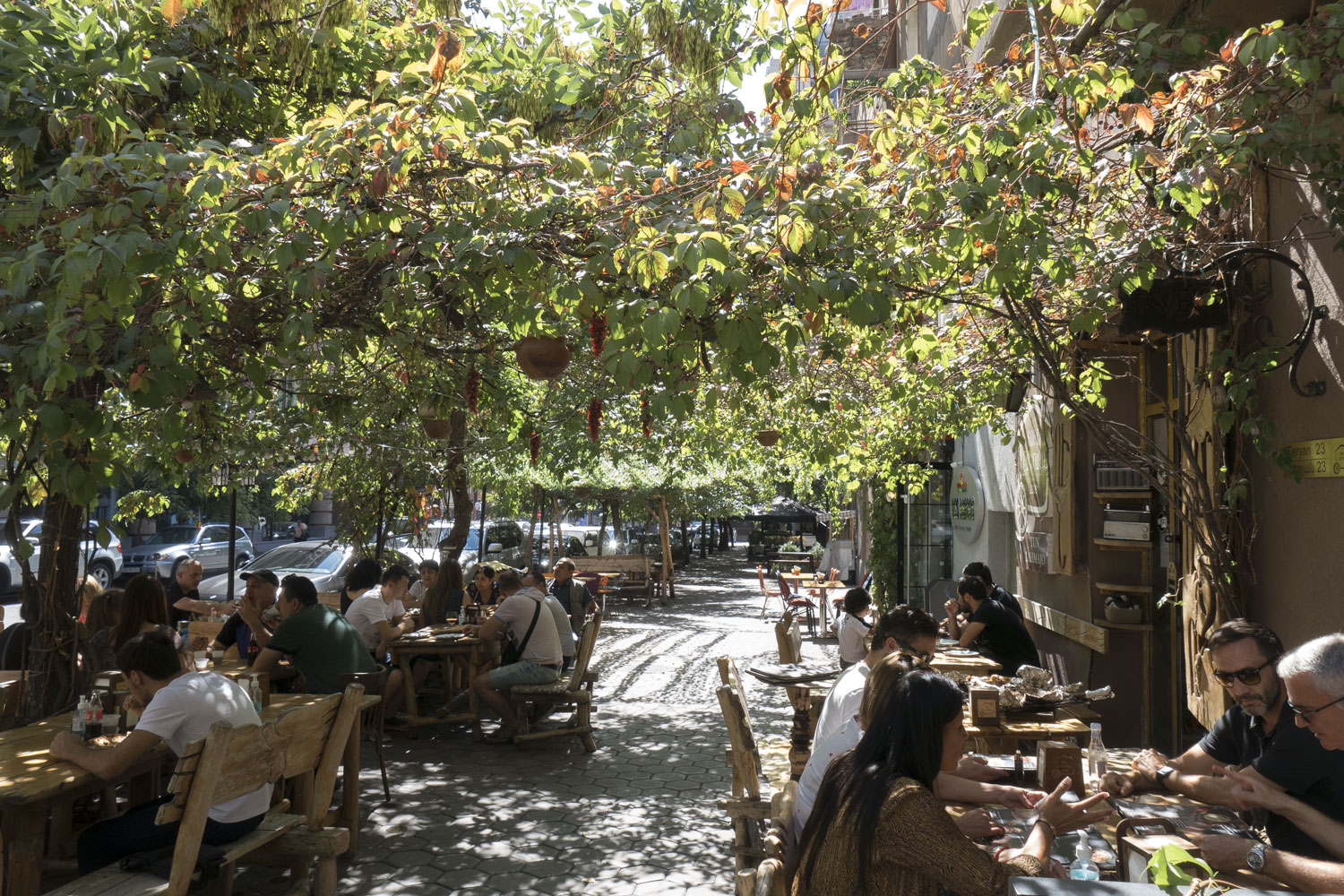
I thought for a long time to whom to dedicate the sign “Wish you were here”. Decided that to good food.
